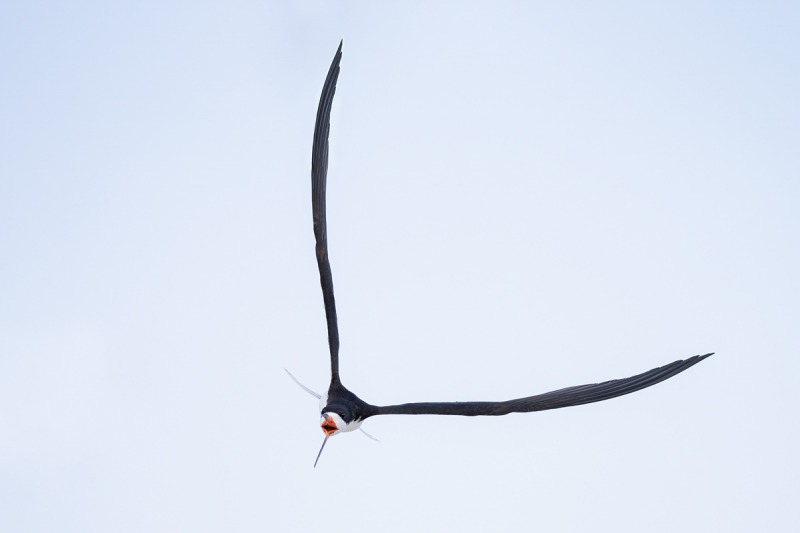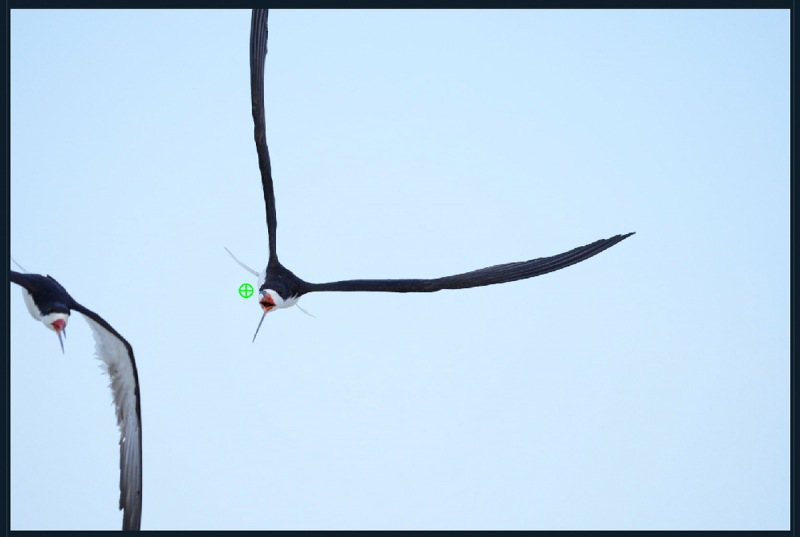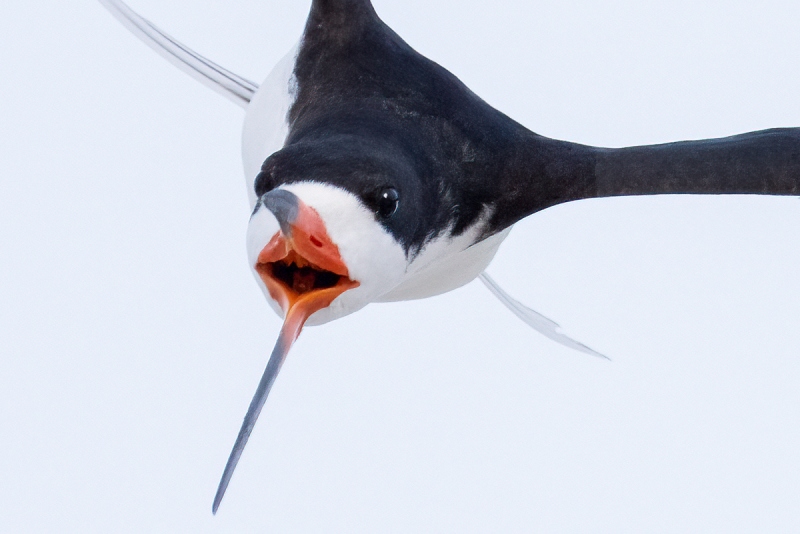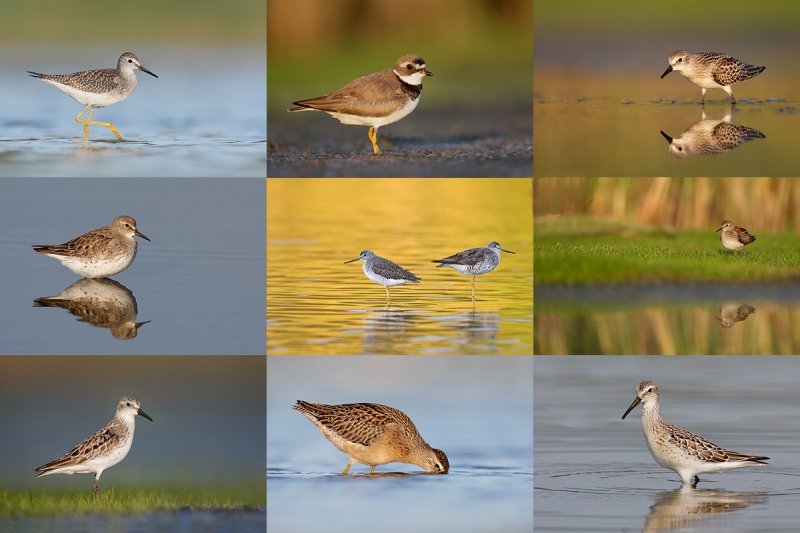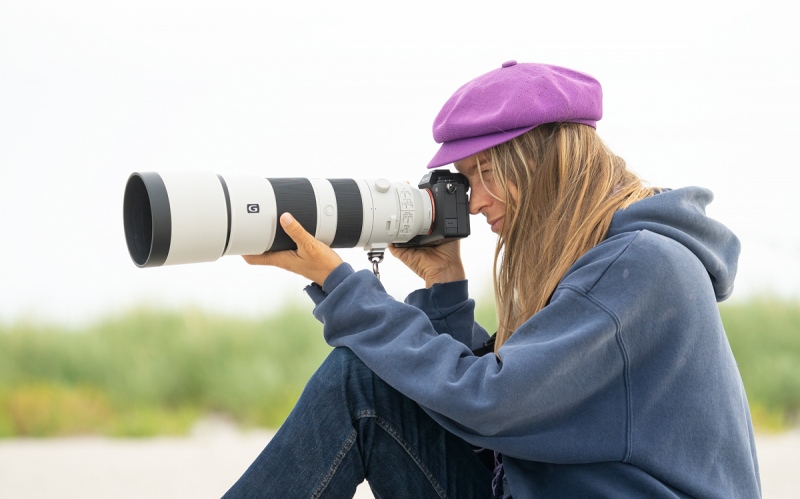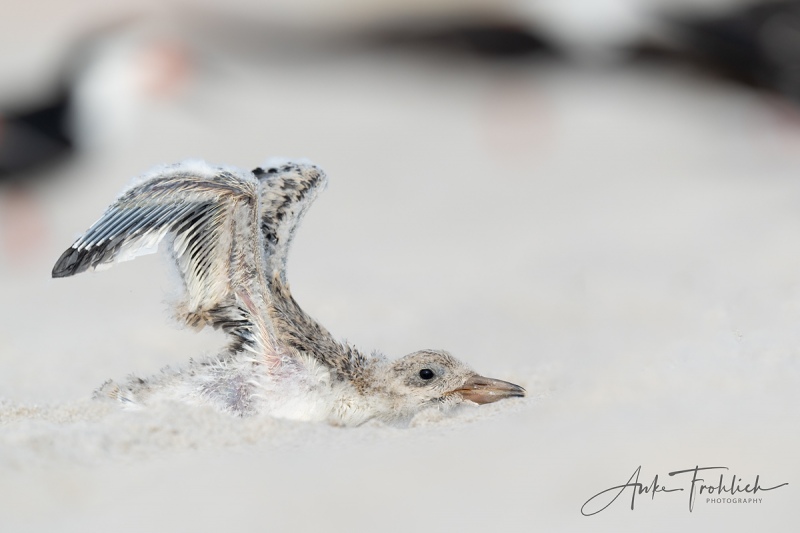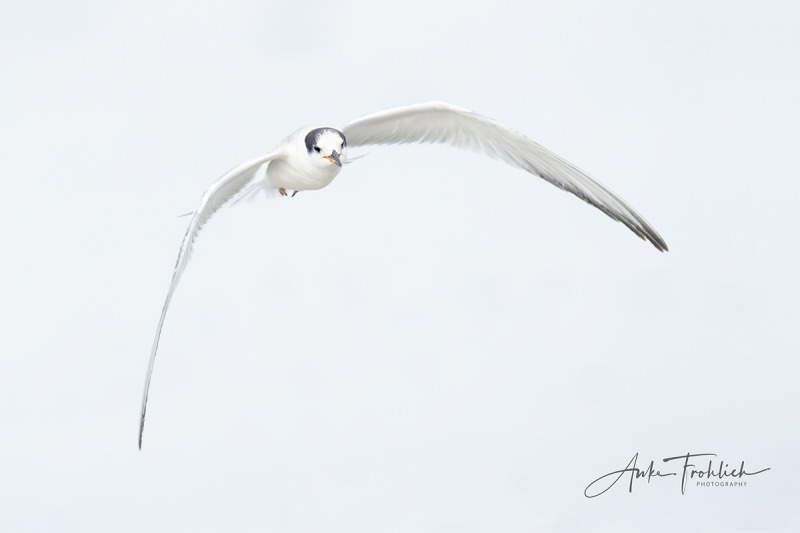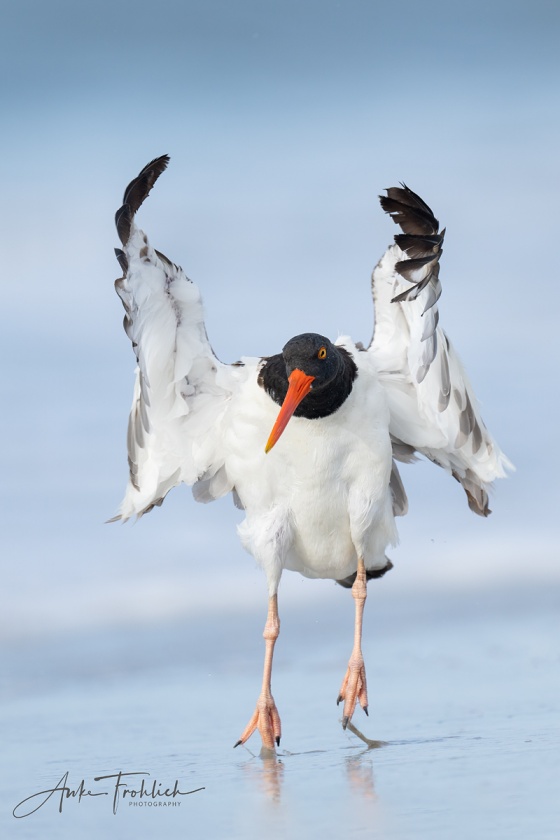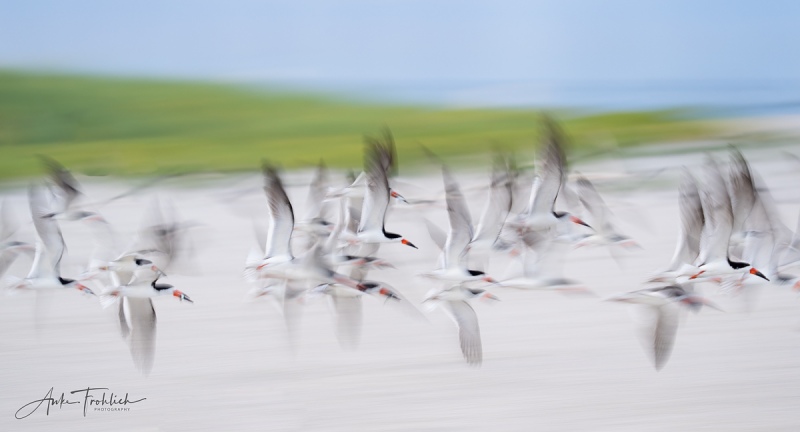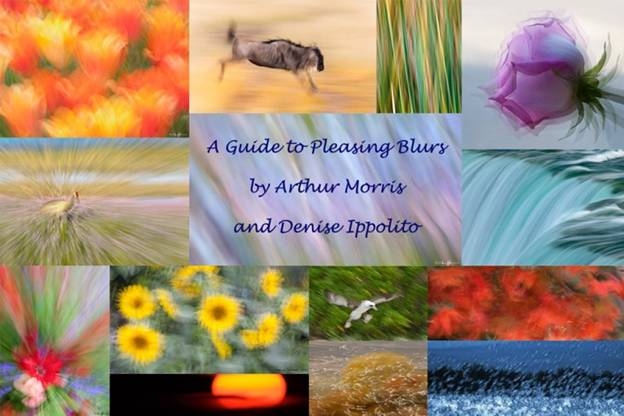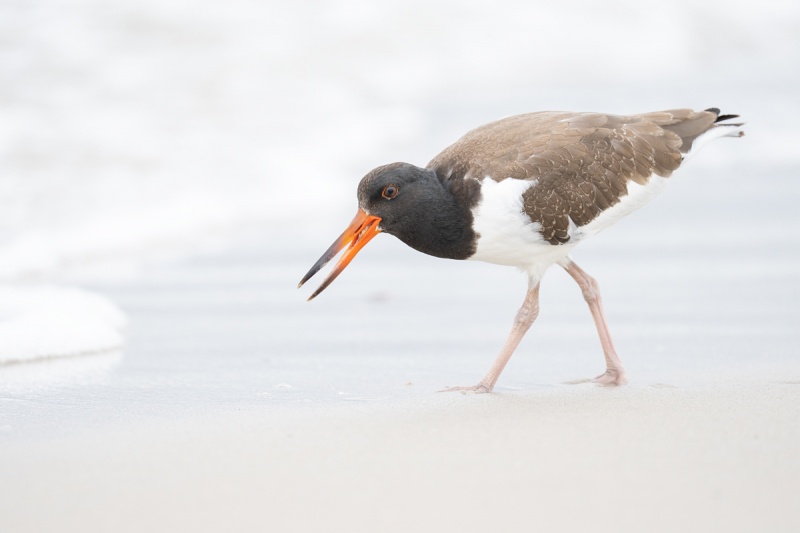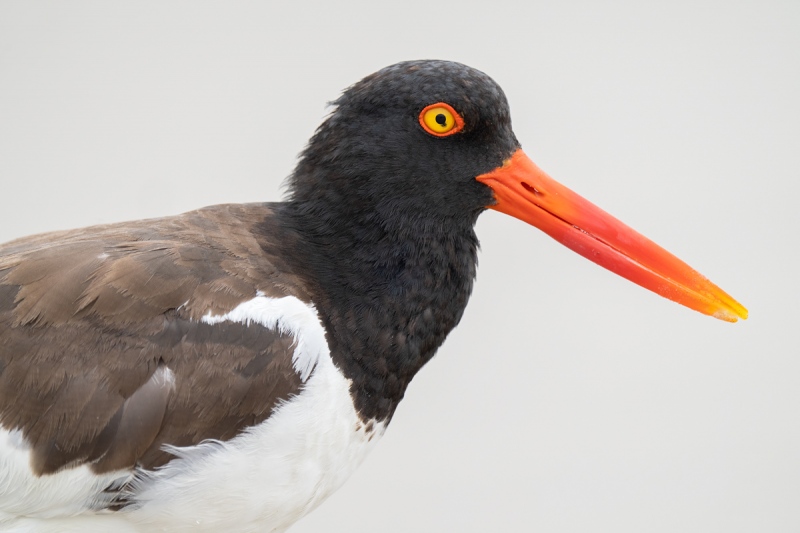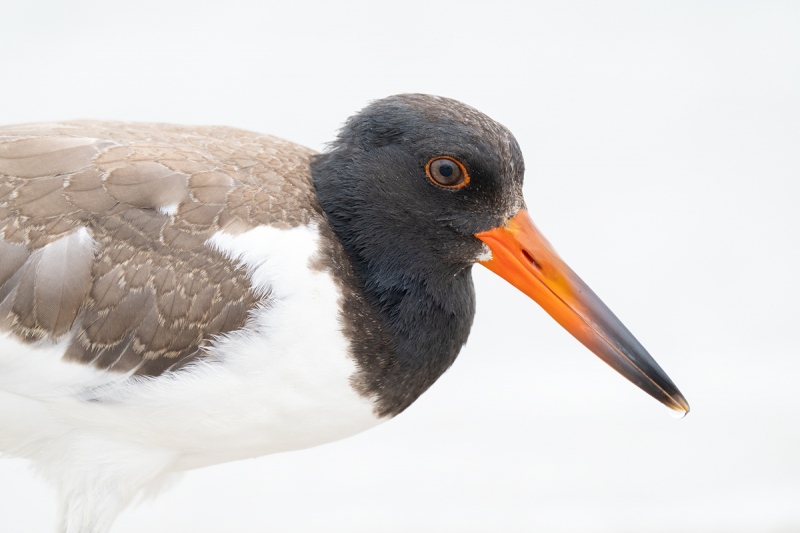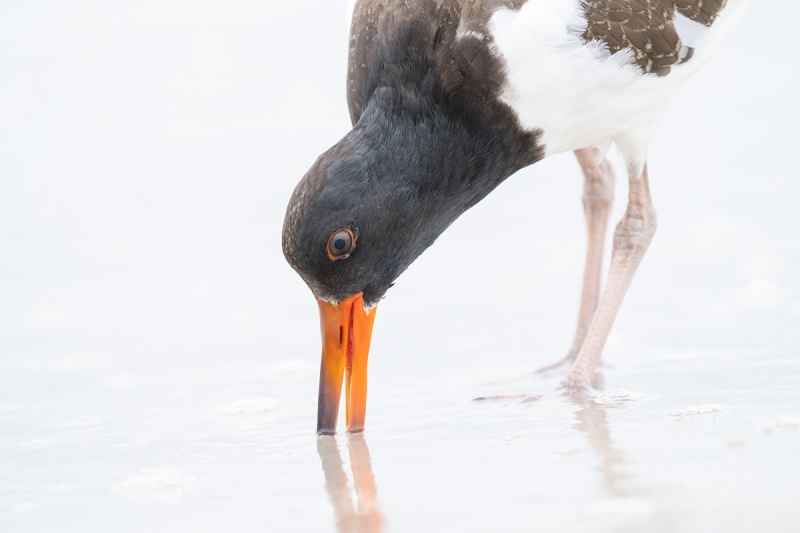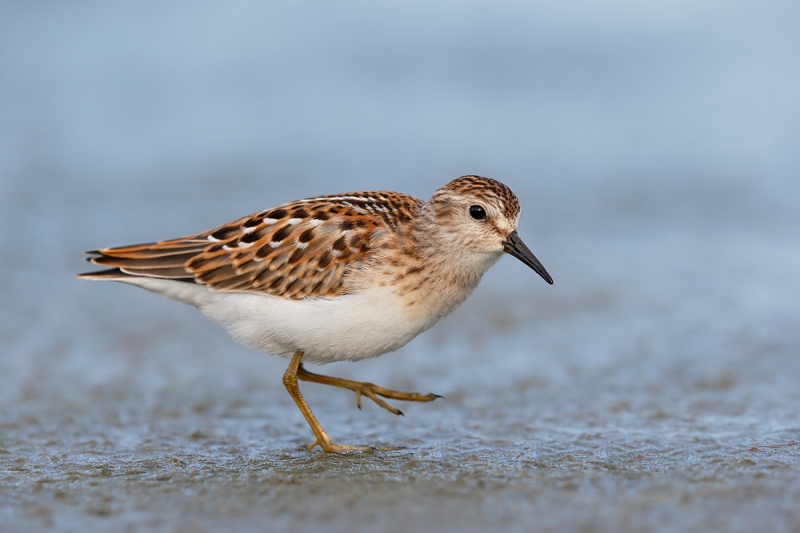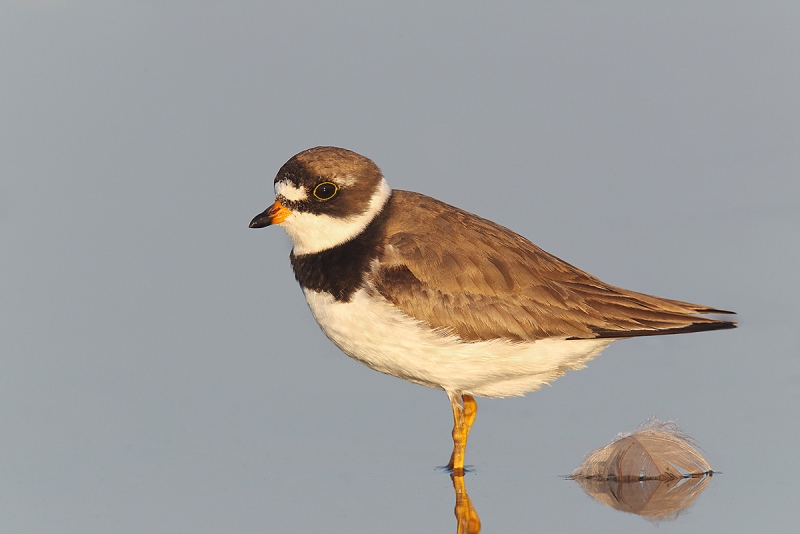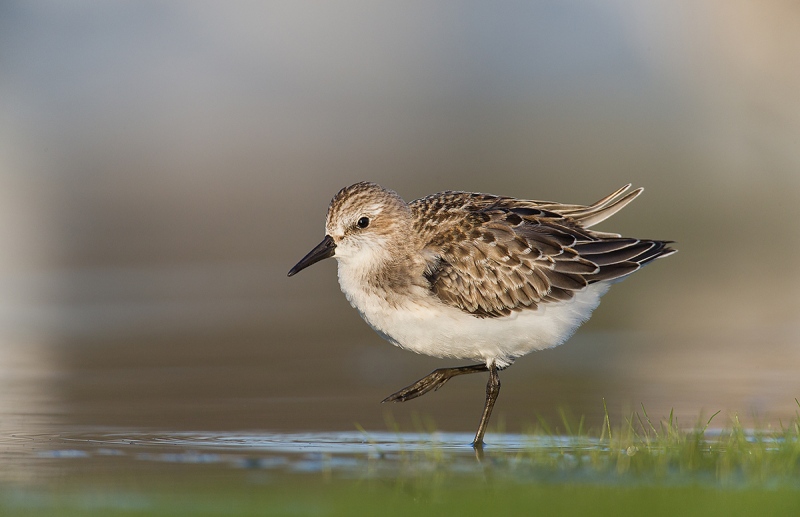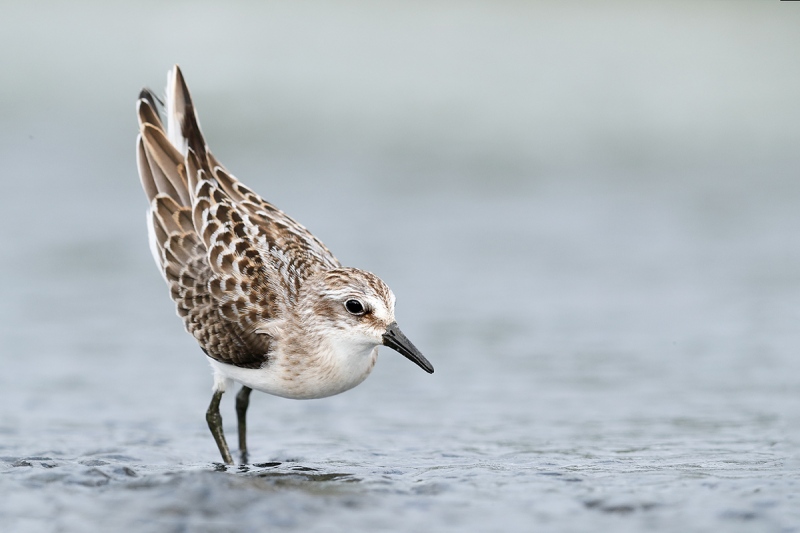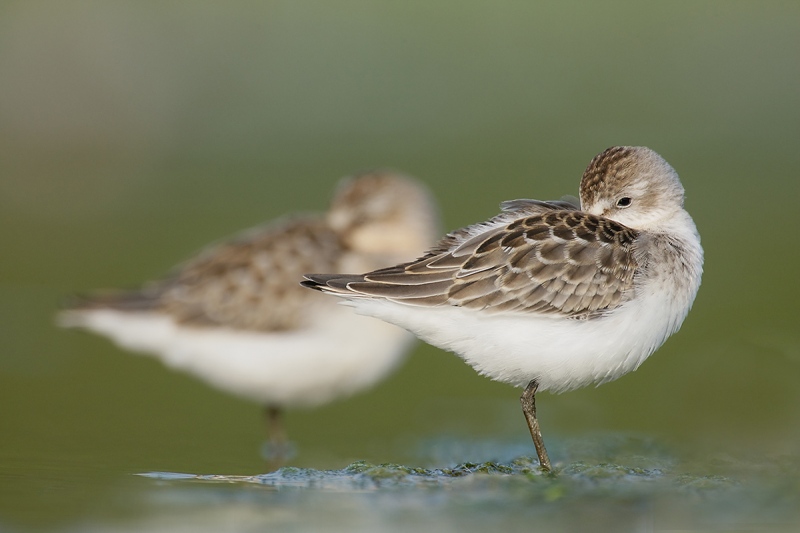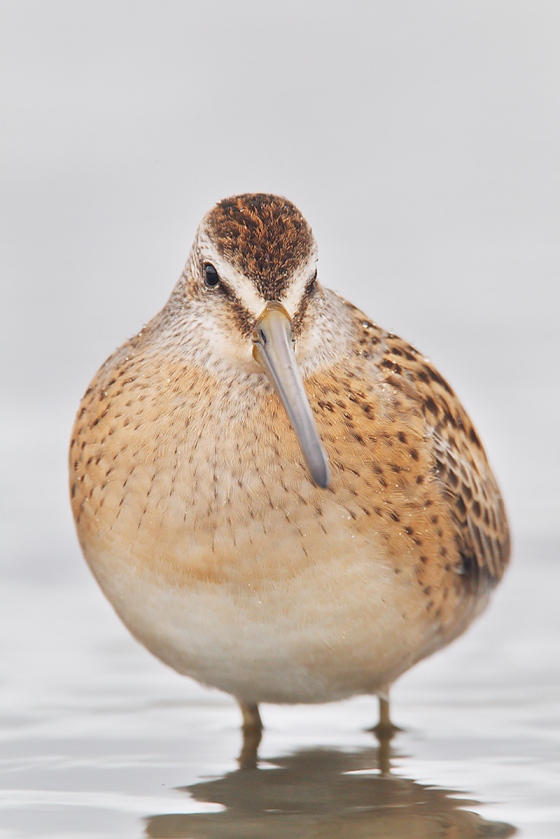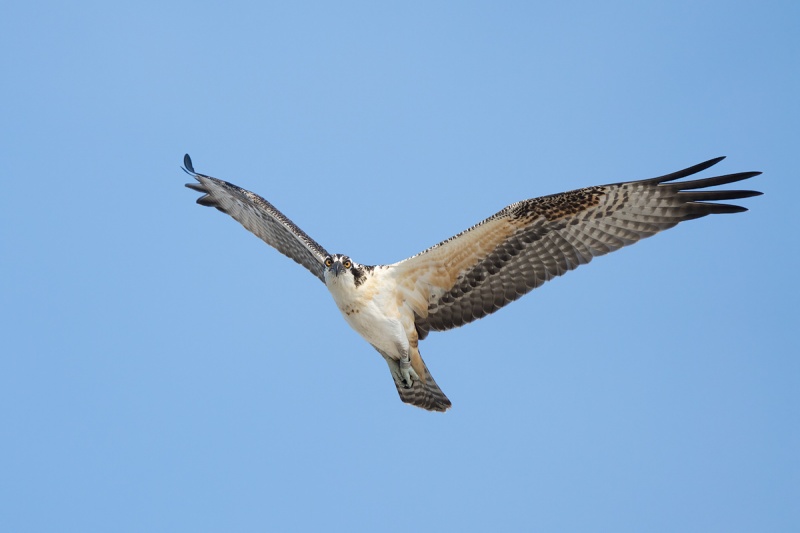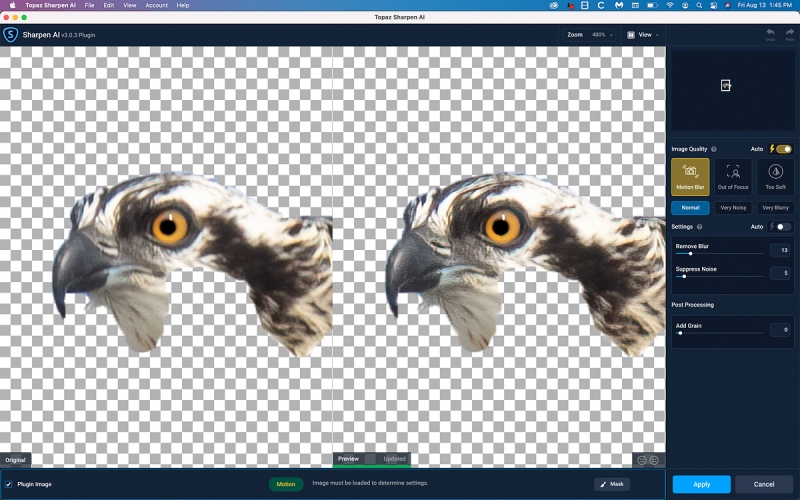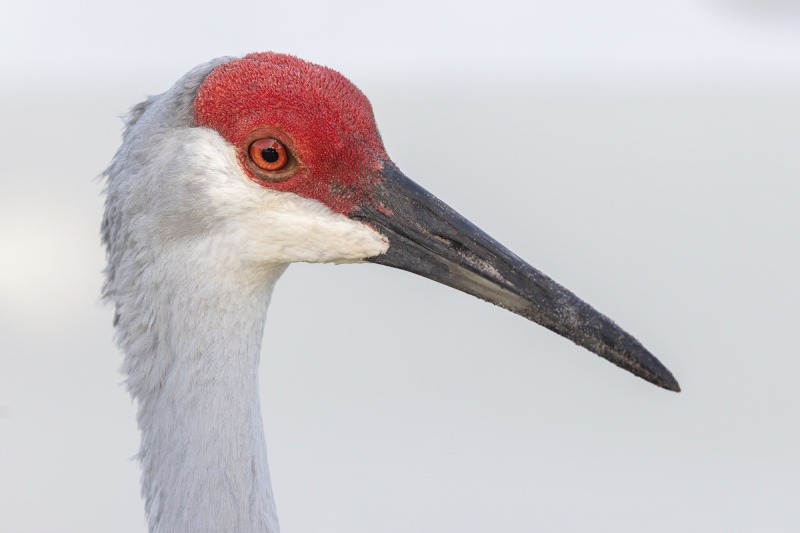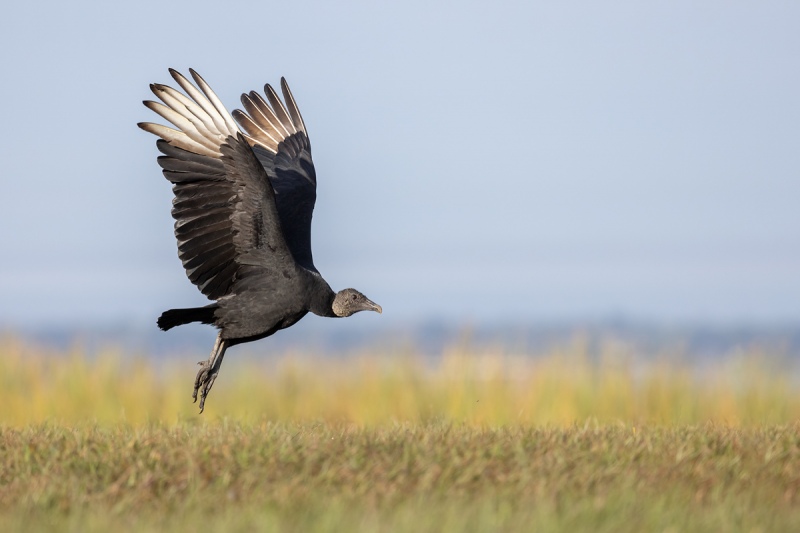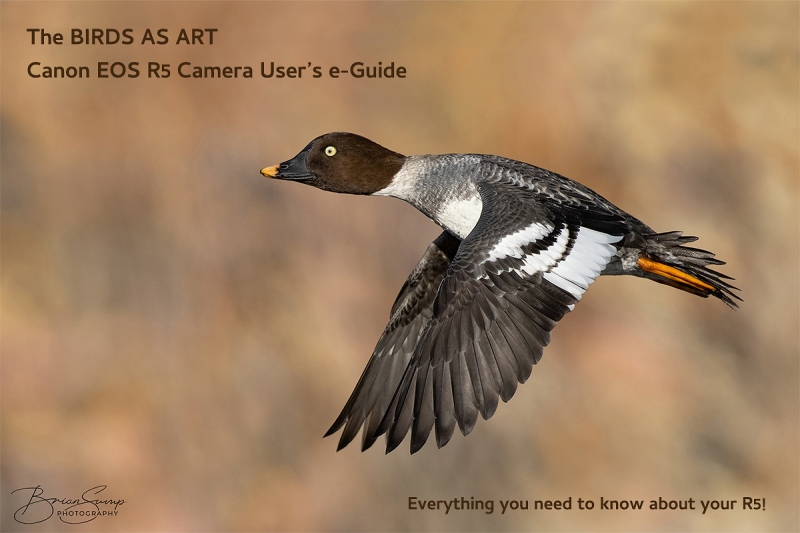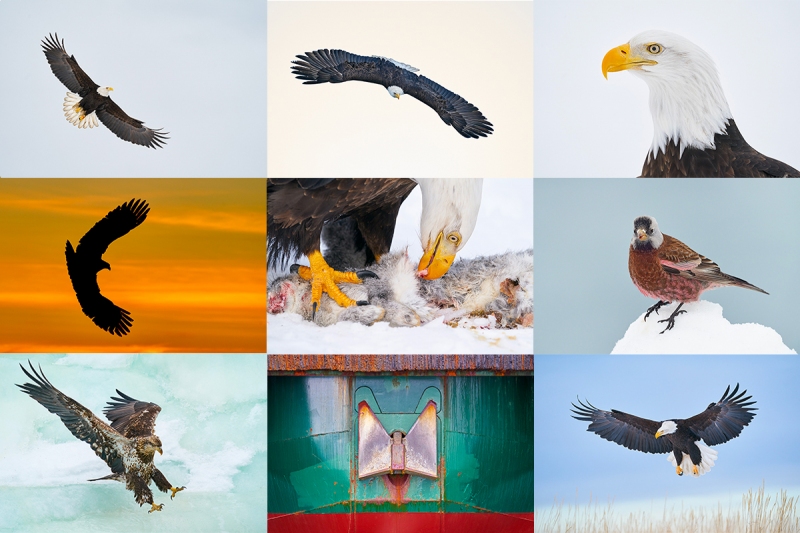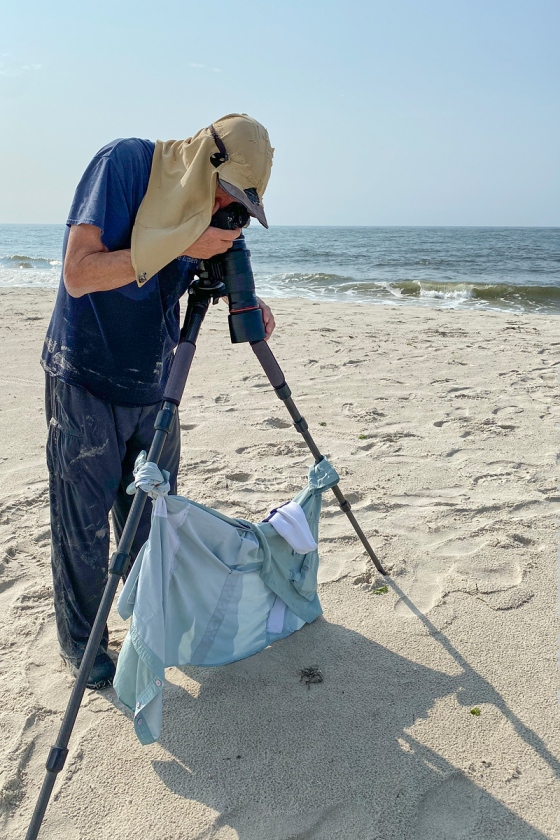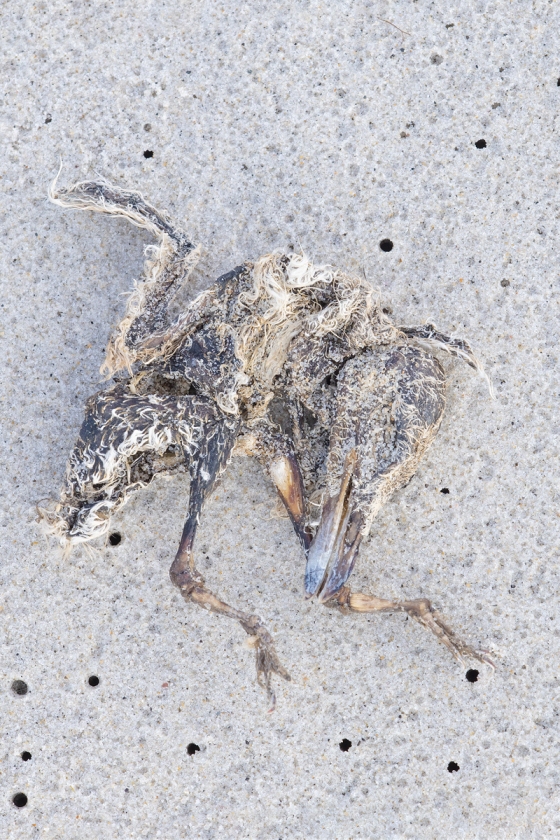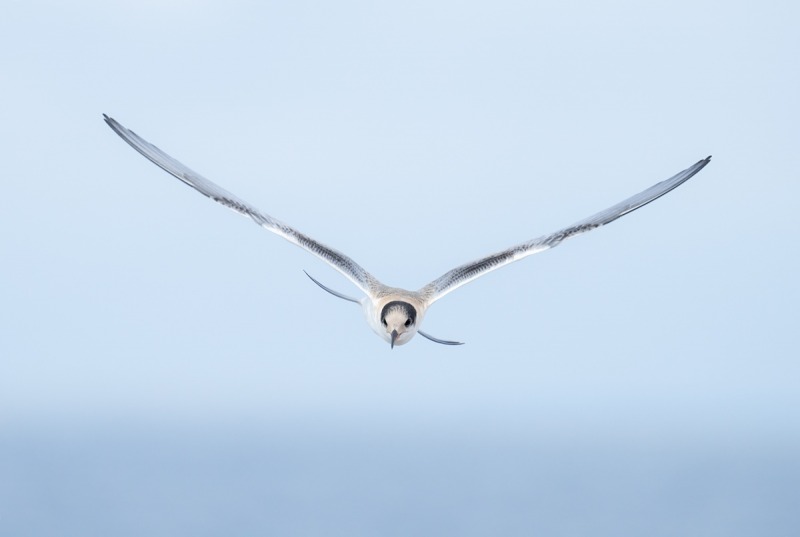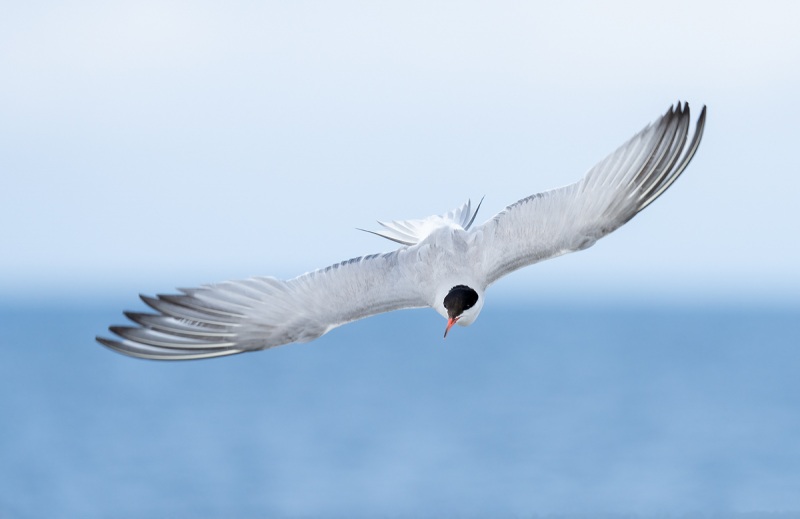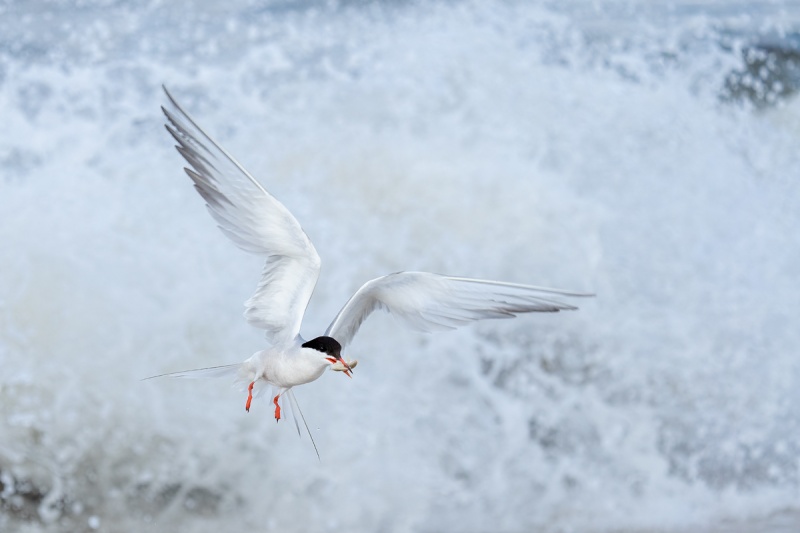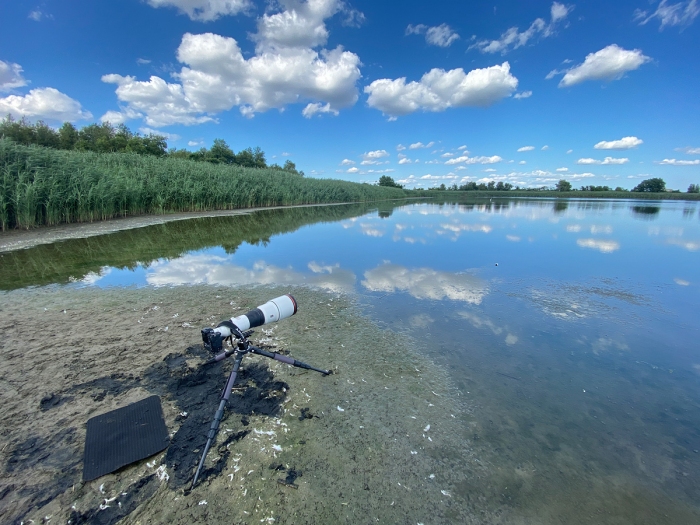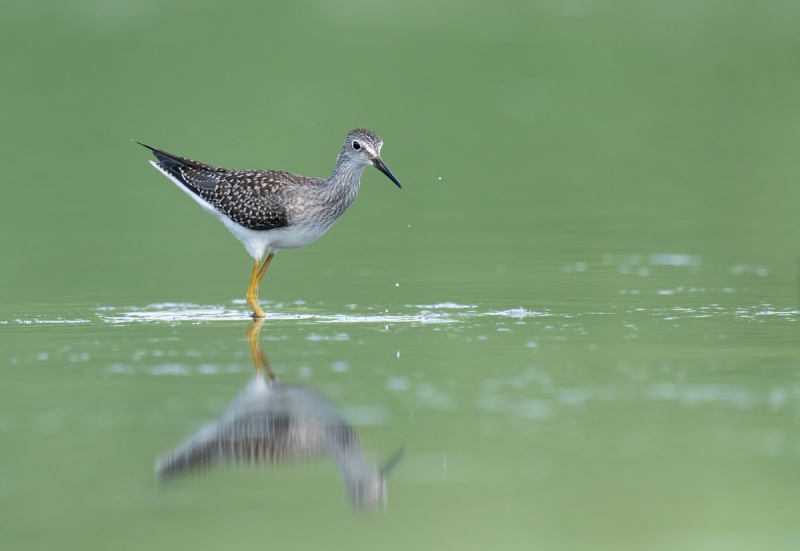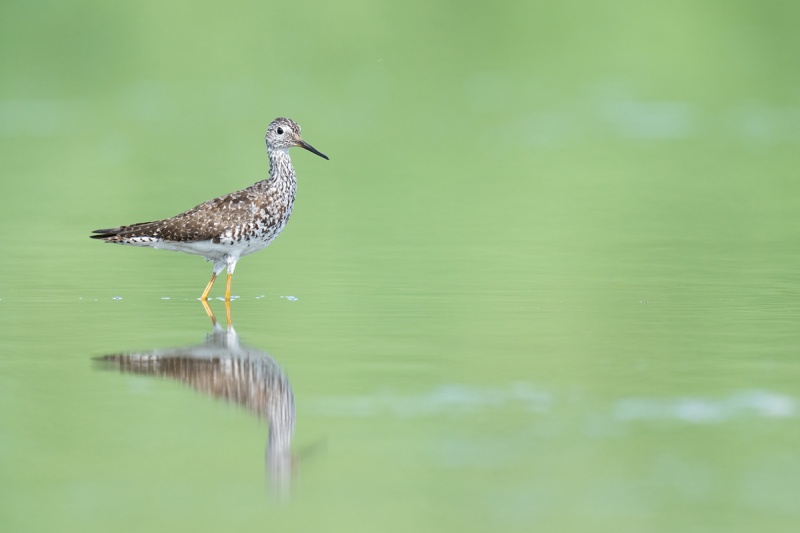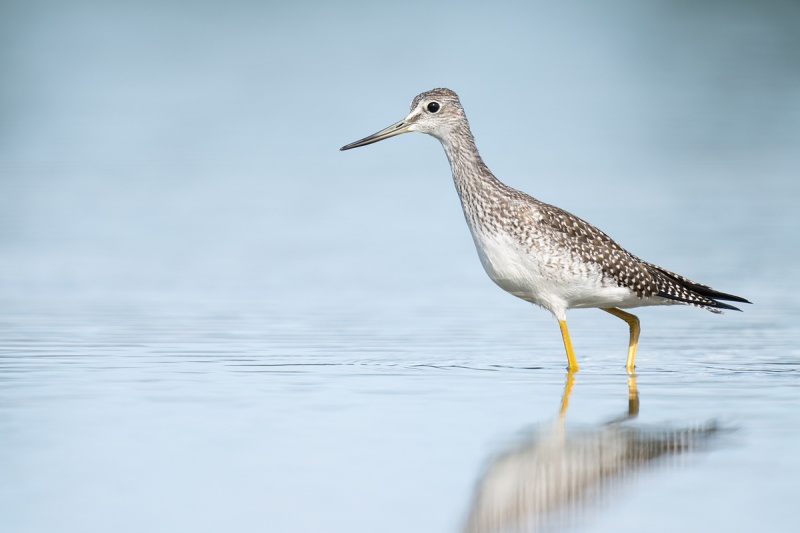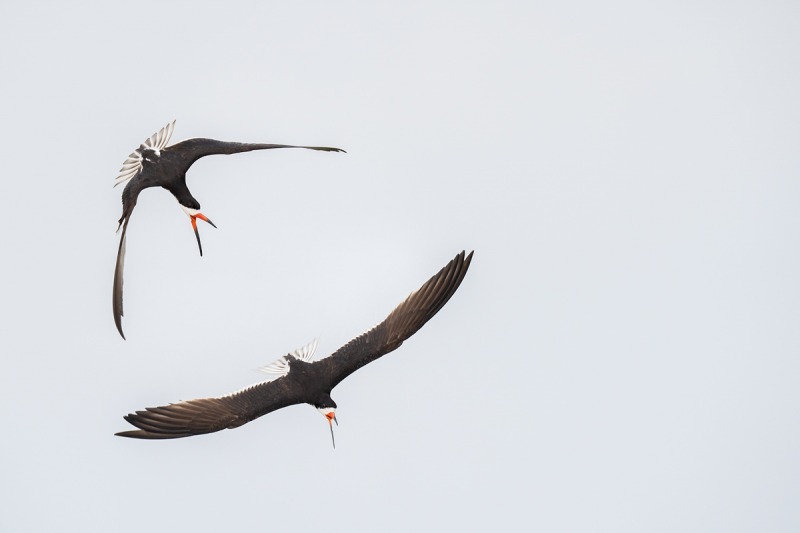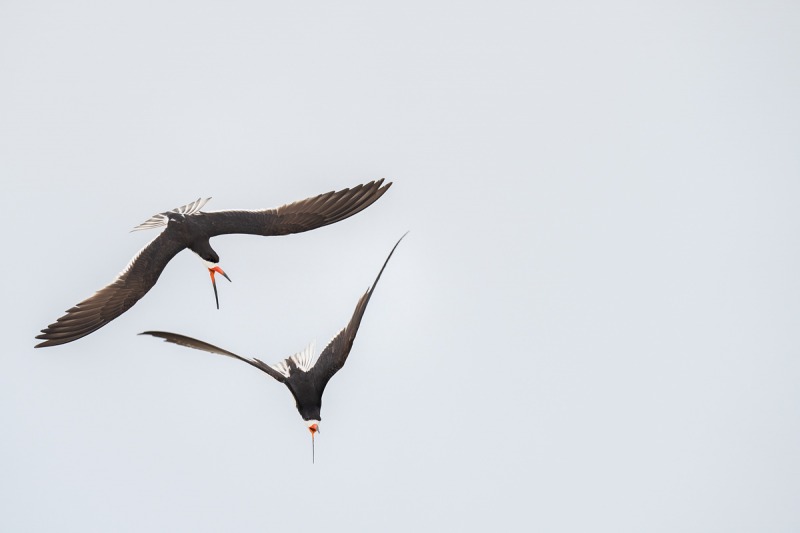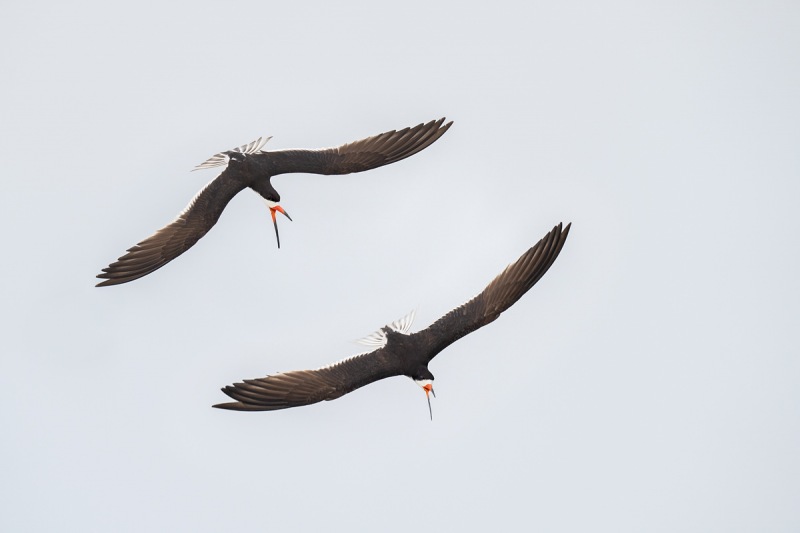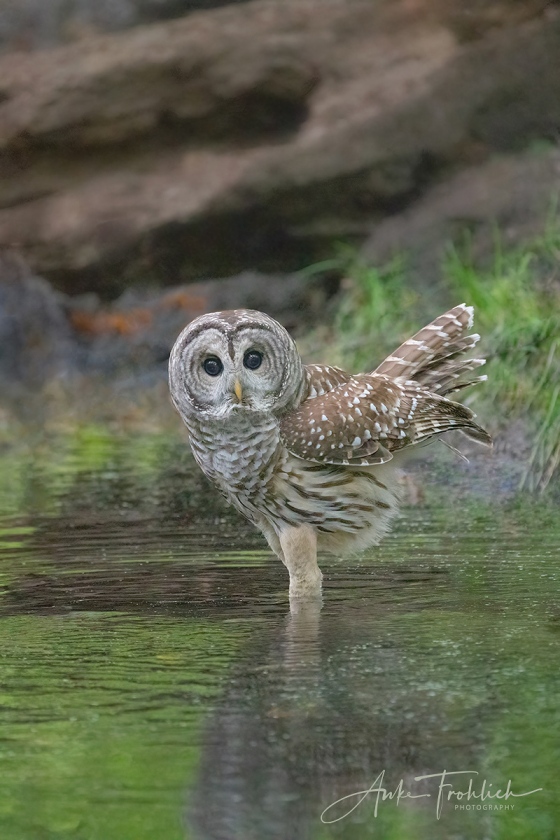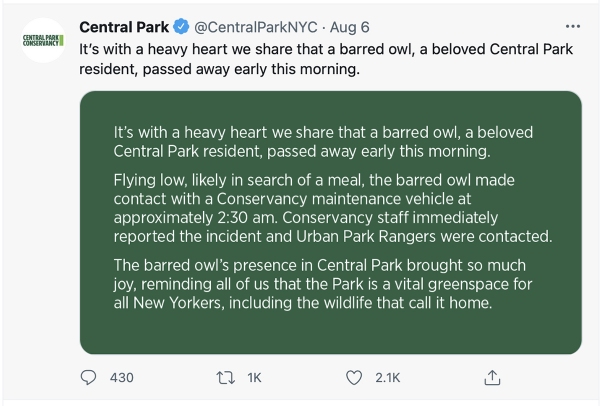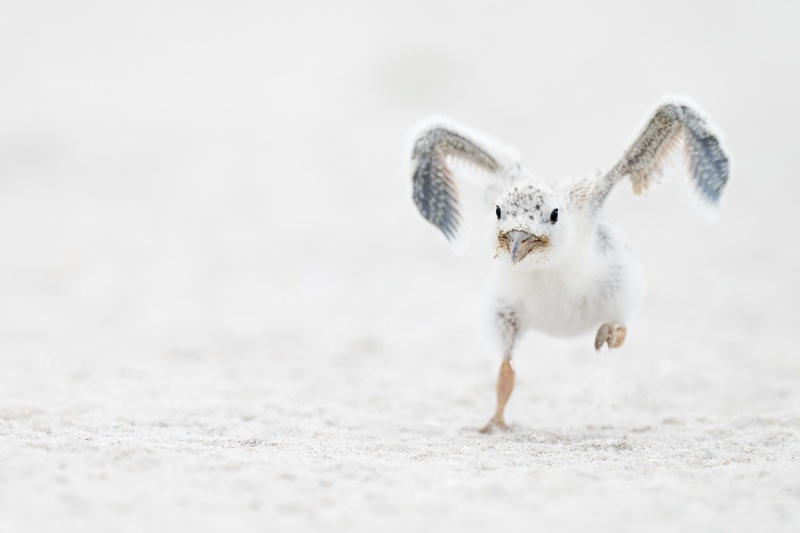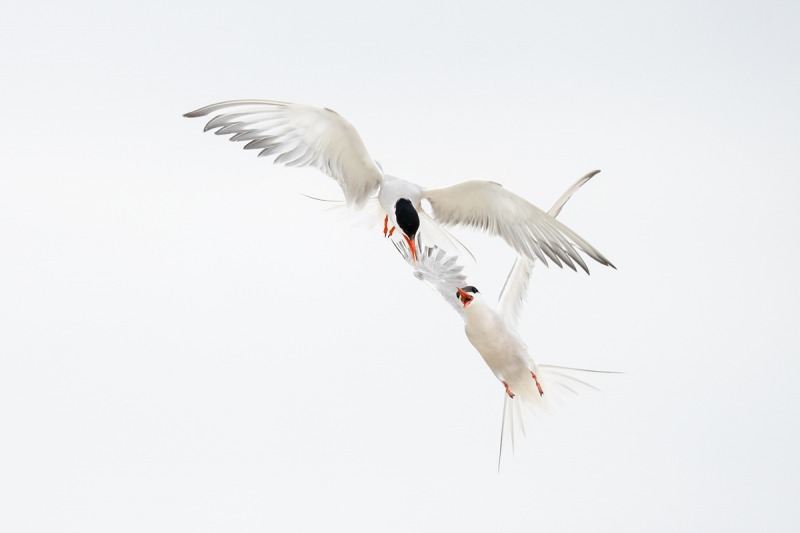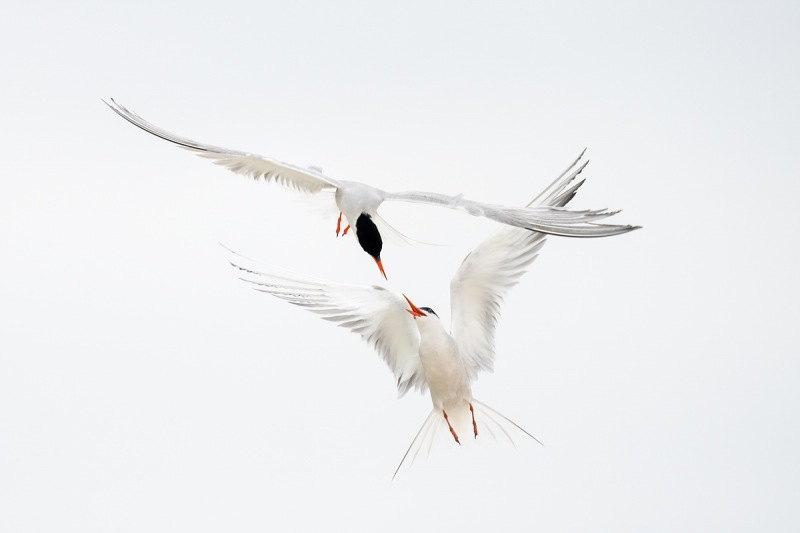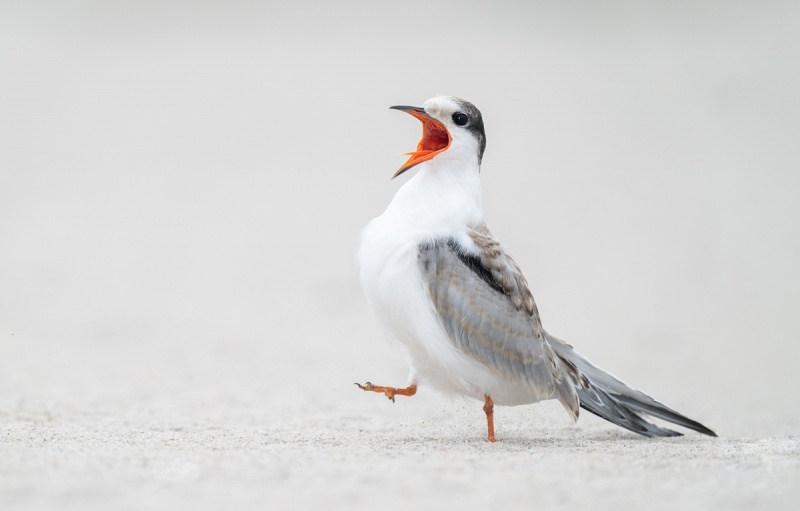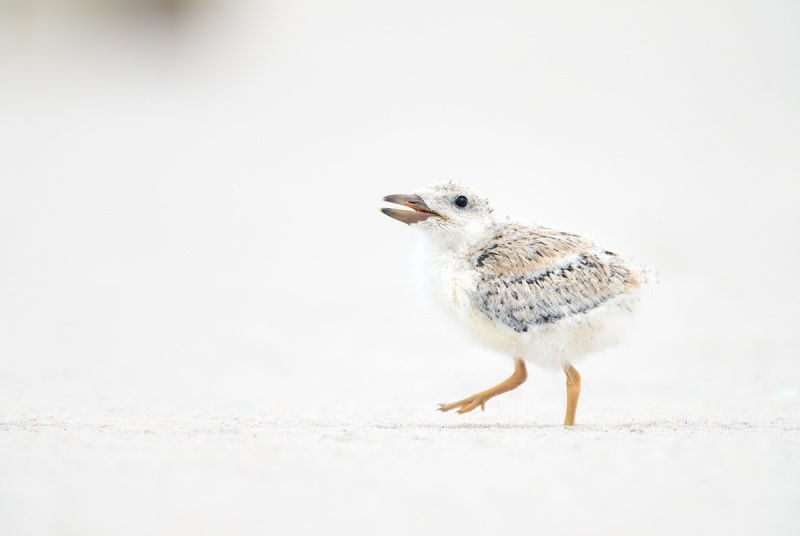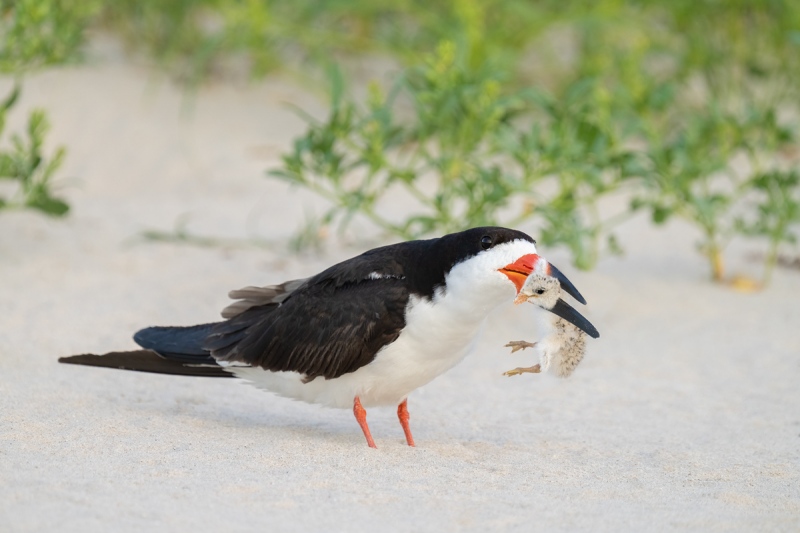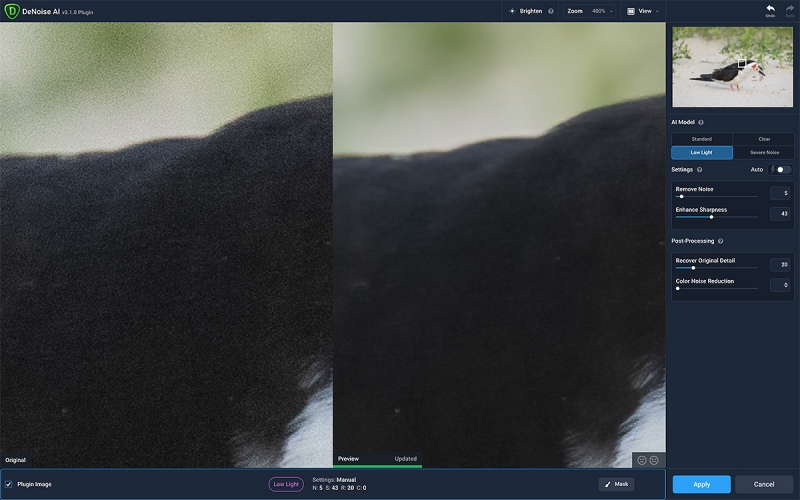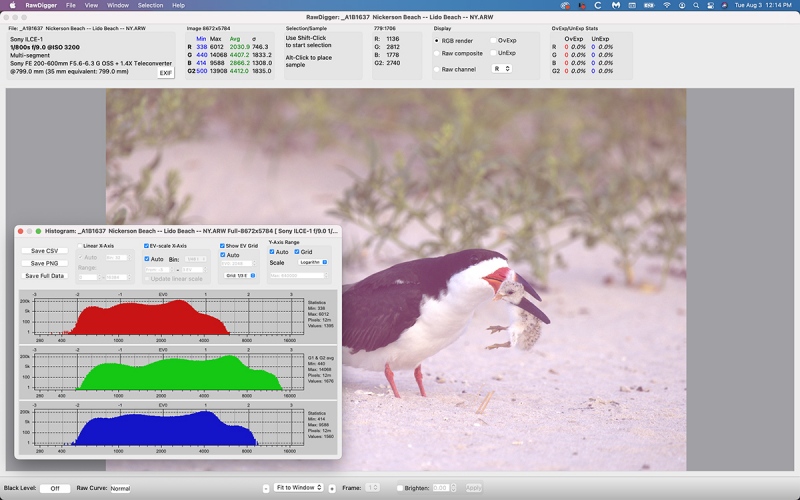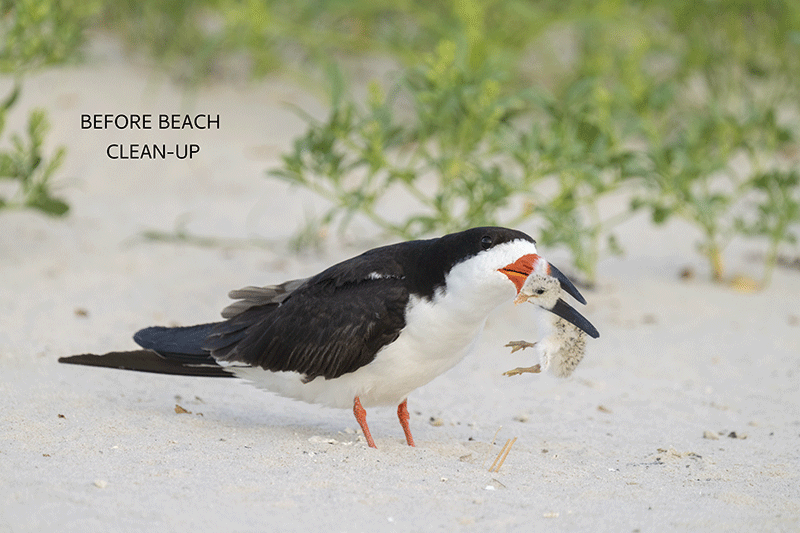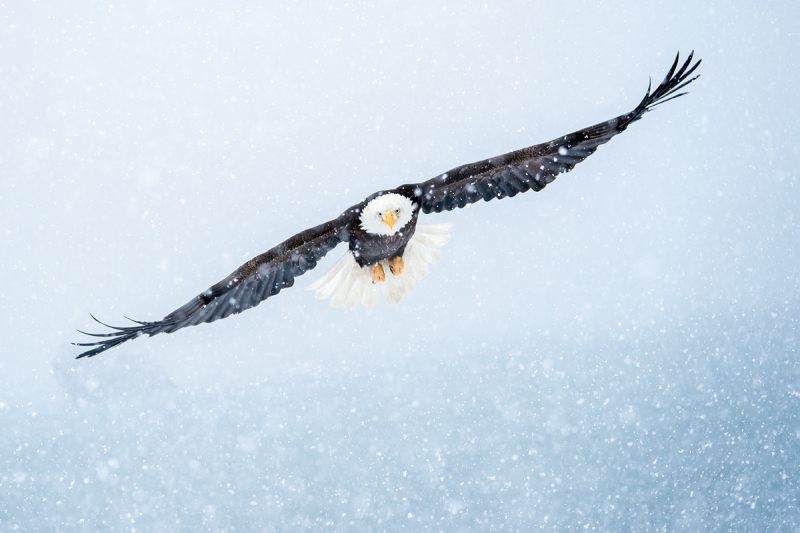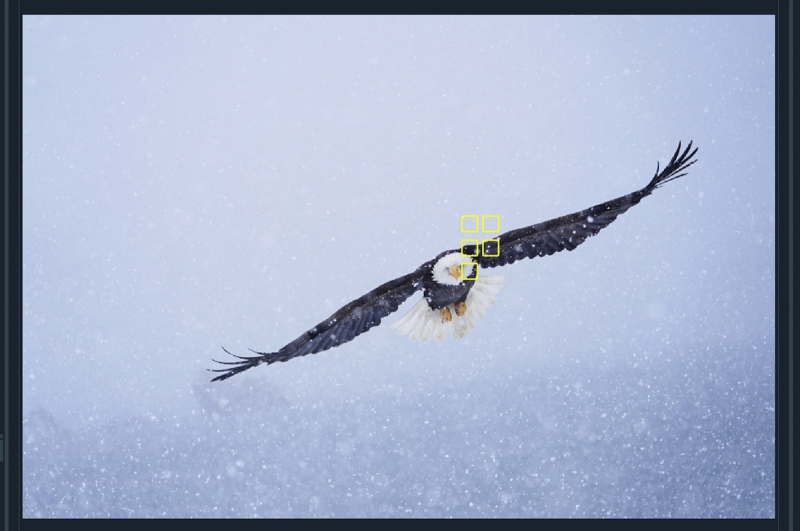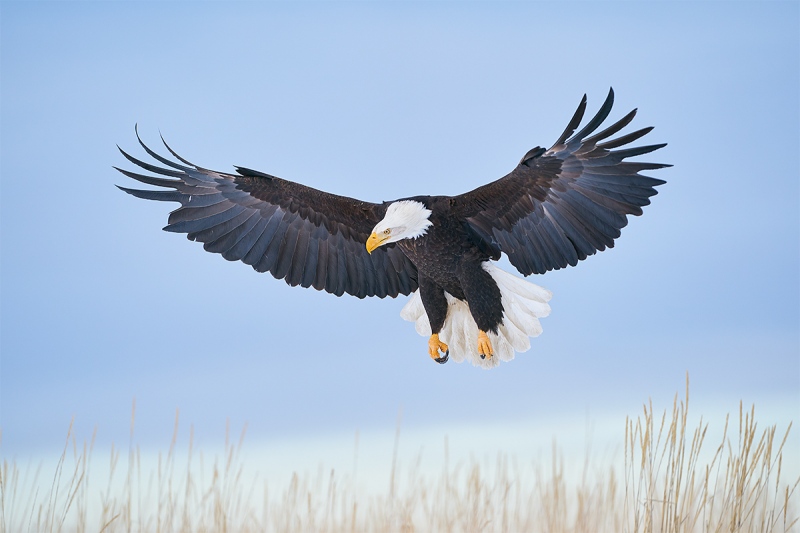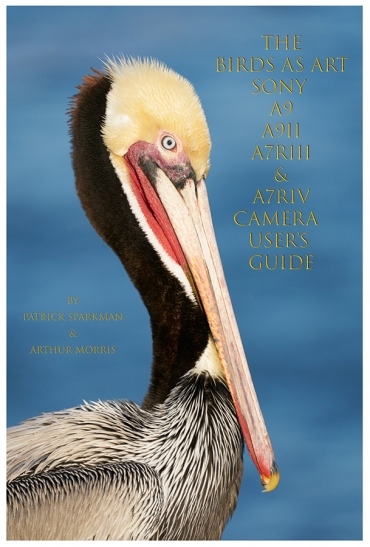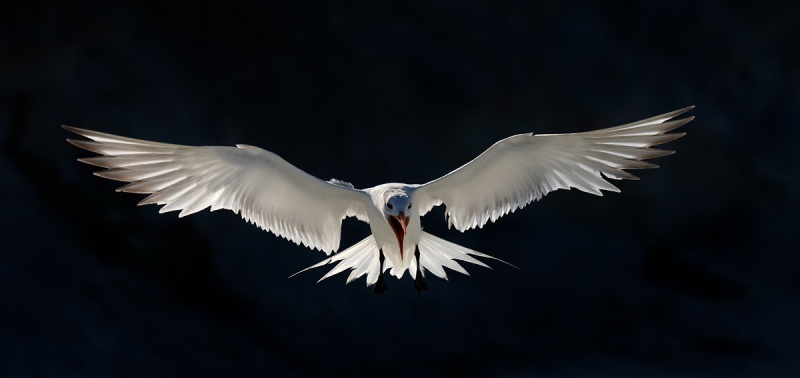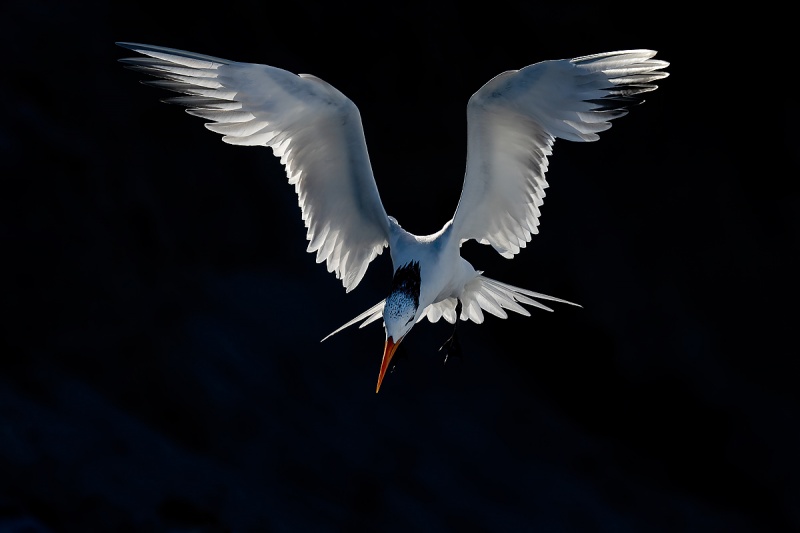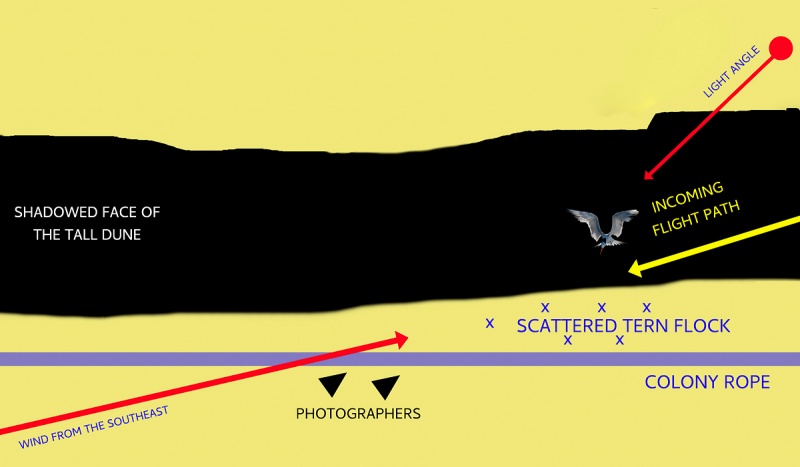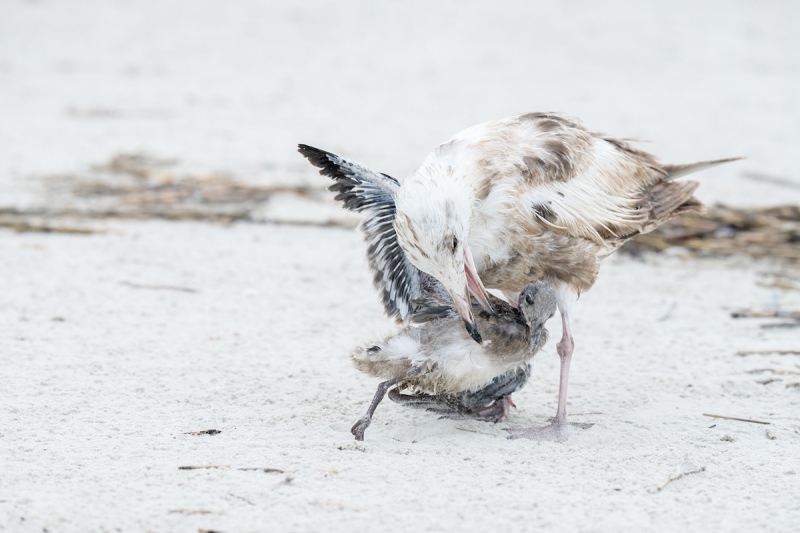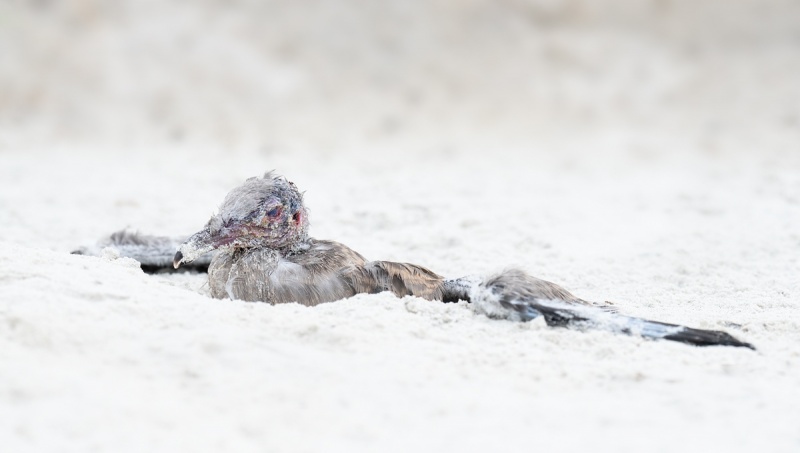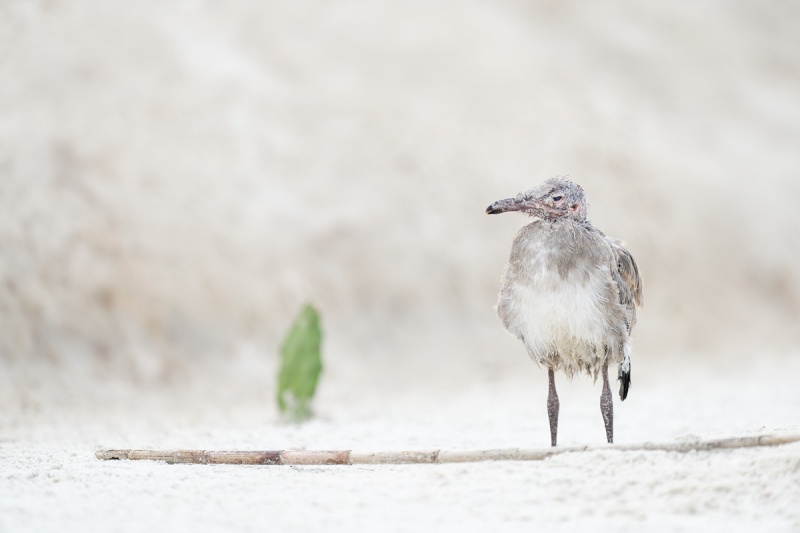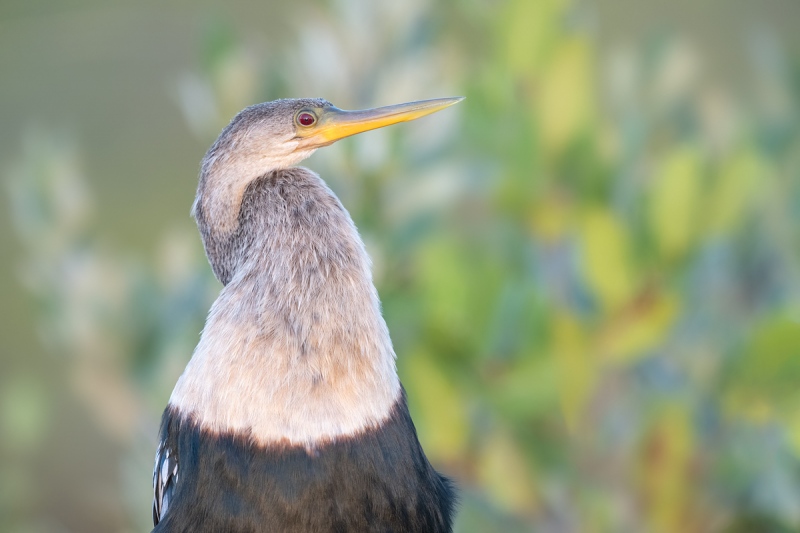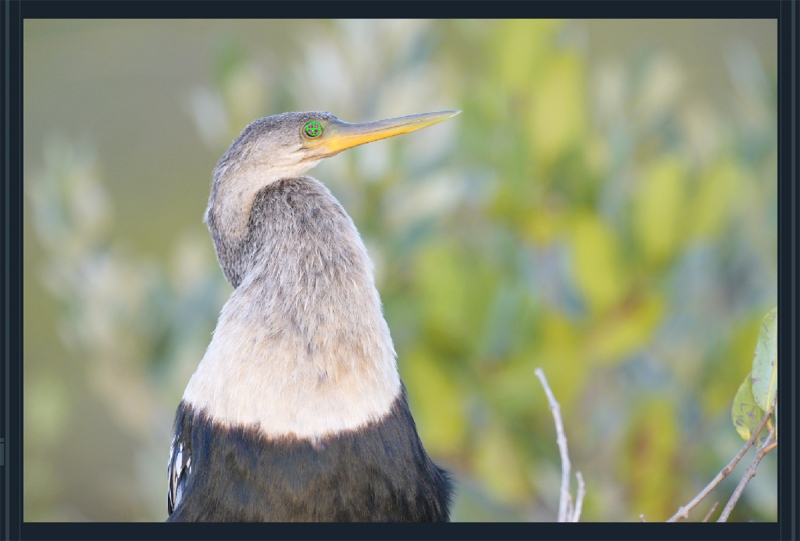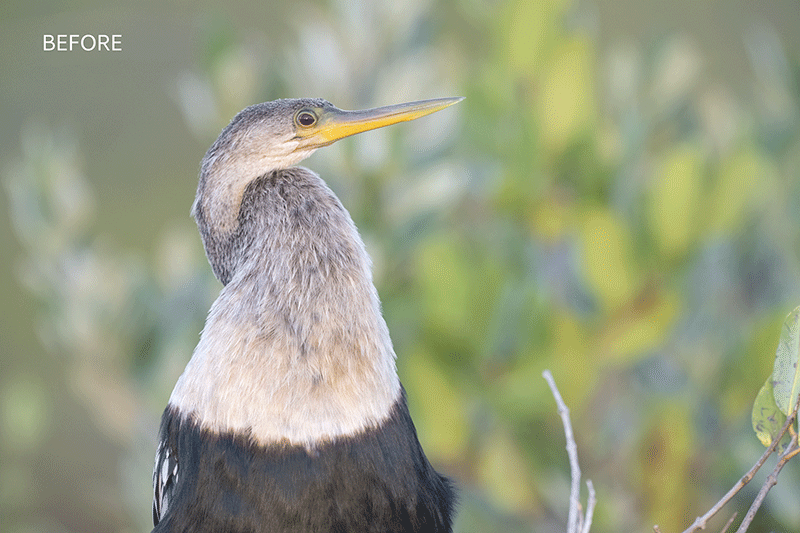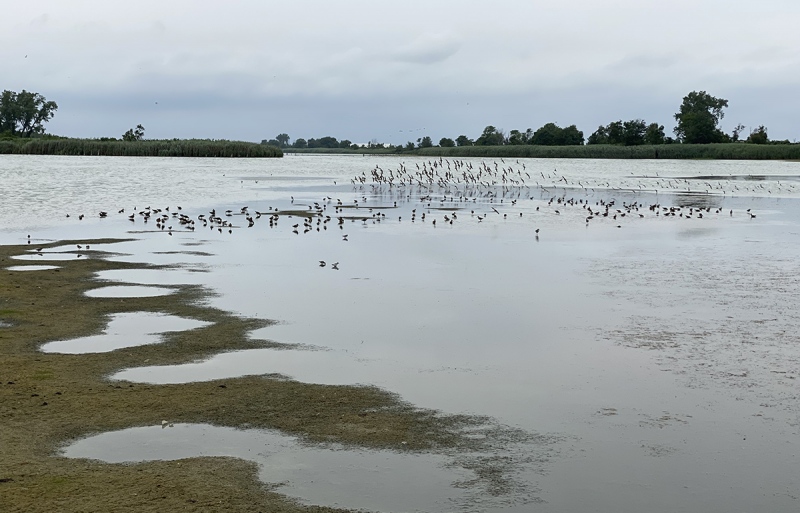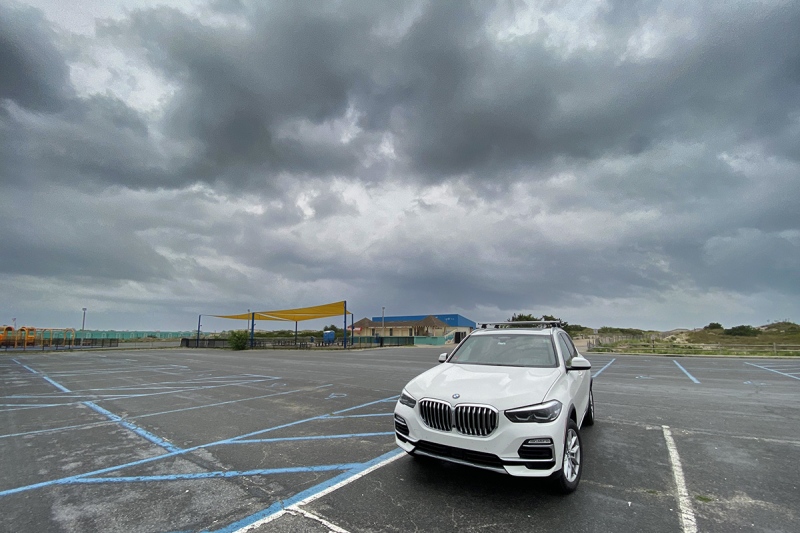August 18th, 2021 What’s Up?
Yesterday, we enjoyed one last morning (for now) at Nickerson Beach. Grey skies and a stiff wind off the ocean led to some great opportunities for skimmer flight and midair fights. We saw the first flying young skimmers of the season, and even managed a few good frames. Be sure to scroll down to the tight face crop and see if you can figure out what bugs me about today’s featured image.
Today is Wednesday 18 August 2021. I have lots of work to catch up on and lots of laundry to do to get ready for my JBWR weekend. I am thrilled that the Homer Bald Eagle IPT is now a go as there are now just two spots left, one on each segment. Wherever you are, and whatever you are doing, I hope that you too have a great day.
Please note that it is best to click on each blog image to view it larger. For unknown reasons, the images — even the verticals that are not rendered larger, look sharper once they’ve been clicked on.
Remember that you can find some great photo accessories (and necessities!) on Amazon by clicking on the Stuff tab on the orange/yellow menu bar above. On a related note, it would be extremely helpful if blog-folks like me, who spend too much money on Amazon, would get in the habit of clicking on the Amazon logo link on the right side of each blog post when they shop online. As you might expect, doing so will not cost you a single penny, but would be appreciated tremendously by yours truly. And doing so works seamlessly with your Amazon Prime account.
This blog post took about two hours to prepare and makes 230 consecutive days with a new one. Please remember that if an item — a Delkin flash card, or a tripod head — for example, that is available from B&H and/or Bedfords, is also available in the BAA Online Store, it would be great, and greatly appreciated, if you would opt to purchase from us. We will match any price. Please remember also to use my B&H affiliate links or to save 3% at Bedfords by using the BIRDSASART discount code at checkout. Doing either often earns you free guides and/or discounts. And doing so always earns my great appreciation.
|
|
|
This image was created on 10 August 2021 at Nickerson Beach. I used the hand held Sony FE 200-600mm f/5.6-6.3 G OSS lens (at 280mm) and The One, the Sony Alpha 1 Mirrorless digital camera. ISO 3200. Exposure determined via Zebras with ISO on the rear dial: 1/3200 sec. at f/6.3 (wide open) in Manual mode. AWB at 6:35pm on a cloudy afternoon.
Tracking: Center Zone/AF-C Bird/Eye Detection AF was active at the moment exposure and created a sharp-on-the-eye image.
Be sure to click on the image to enjoy the larger version.
Image #1: Black Skimmer screaming in flight
In the original — see below, the primaries of the right (upper) wing were completely clipped
|
Flight Photography at Nickerson Beach
Not counting my scouting walk in the rain on the afternoon of July 29, I have visited the east skimmer colony at Nickerson eleven times. During those outings, I have created somewhere between 10,000 and 20,000 flight images. Though I have made many thousands of sharp flight images, my keeper rate has hovered between two and five percent. Of those, I will process only a handful of the very best, all for the primary purpose of being featured in a blog post. As detailed here previously you need to edit stringently if you are using a high frame-rate camera with a science-fiction-like AF system. If not, your storage capacity will be maxed out quite soon. Razor sharp on the eye with the whole bird (usually :)) in the frame, are just the tip of the iceberg. In addition you are looking at the light, the sky, the subject-to-sensor plane juxtapositions, and the flight poses and wing positions, along with the intangibles: the It factor. As always, different is good and really different is great. For me, today’s featured image has the It factor.
Anyhoo, when I saw the clipped wing on this one, I knew that I would get to it eventually and that it would be featured on the blog. Today is the day.
Dead-Solid Perfect?
RawDigger showed that the raw file brightness for today’s featured image was about 1/3-stop under. As you learn in the RawDigger e-Guide, under-exposing a bit with ISOs greater than 800 will not hurt you very much if at all.
The G channel here made it only 1/3 of the way from the 8000 line to the 16000 line. Images where the G channel gets 2/3rds of the way from the 8000 to the 16000 line are perfect exposures. Images where the G channel gets right up to the line are dead-solid perfect. So we can call the exposure for today’s image very good to excellent.
RawDigger — not for the faint of heart …
Nothing has ever helped me learn to create consistently perfect exposures the way that RawDigger has. I think that many folks are reluctant to learn that most of their images are underexposed by one or more full stops and that highlight warnings in Photoshop, Lightroom, Capture One, and your in-camera histogram are completely bogus as they are based on the embedded JPEGs. Only your raw files tell the truth all the time. Heck, I resisted RawDigger for several years … Once you get over that feeling, RawDigger can become your very best exposure friend no matter what system you are using. On the recent IPTs and In-the-Field sessions, we have demonstrated that fact. Convincingly.
The RawDigger (pink) Adapted Histogram
In the RawDigger e-Guide, you will learn exactly how to set up the Adapted “pink” RawDigger Histogram and how to use it to quickly and easily evaluate the exposure or raw file brightness of images from all digital cameras currently in use. RawDigger was especially helpful to me when I struggled with R5 exposures and when learned my new camera body, the Sony Alpha a1.
|
|
RawDigger e-Guide with Two Videos
|
The RawDigger e-Guide with Two Videos
by Arthur Morris with Patrick Sparkman
The RawDigger e-Guide was created only for serious photographers who wish to get the absolute most out of their raw files.
Patrick and I began work on the guide in July 2020. At first we struggled. We asked questions. We learned about Max-G values. We could not figure out why the Max G values varied by camera system. IPT veteran Bart Deamer asked lots of questions that we could not answer. We got help from RawDigger creator Iliah Borg. We learned. In December, Patrick came up with an Adapted Histogram that allows us to evaluate the exposures and raw file brightness for all images created with all digital camera bodies from the last two decades. What we learned each time prompted three complete beginning to end re-writes.
The point of the guide is to teach you to truly expose to the mega-Expose-to-the-Right so that you will minimize noise, maximize image quality, best utilize your camera’s dynamic range, and attain the highest possible level of shadow detail in your RAW files in every situation. In addition, your properly exposed RAW files will contain more tonal information and feature the smoothest possible transitions between tones. And your optimized images will feature rich, accurate color.
We teach you why the GREEN channel is almost always the first to over-expose. We save you money by advising you which version of RawDigger you need. We teach you how to interpret the Max G values for your Canon, Nikon, and SONY camera bodies. It is very likely that the Shock-your-World section will shock you. And lastly — thanks to the technical and practical brilliance of Patrick Sparkman — we teach you a simple way to quickly and easily evaluate your exposures and raw file brightness using an Adapted RawDigger histogram.
The flower video takes you through a session where artie edits a folder of images in Capture One while checking the exposures and Max-G values in RawDigger. The Adapted Histogram video examines a series of recent images with the pink histograms and covers lots of fine points including and especially how to deal with specular highlights. The directions for setting up the Adapted Histogram are in the text.
If we priced this guide based on how much effort we put into it, it would sell it for $999.00. But as this guide will be purchased only by a limited number of serious photographers, we have priced it at $51.00. You can order yours here in the BAA Online Store.
|
|
AF Point screen capture for the Black Skimmer screaming in flight image
|
The AF Point Screen Capture
As with the Canon R5, you will run across many a1 images where the AF point is not squarely on the bird’s eye, yet the image is razor-sharp (on the eye). Sometimes the AF point is in the middle of the sky, yet your flight image is more than sharp enough. These two bodies feature fabulous eye tracking AF systems. My thoughts are that although the AF system is fast enough to track the bird’s face or eye but that the system that records the AF system is not quite fast enough to keep up with the real time AF. Perhaps …
See the screen capture below to see how well the AF tracking worked with today’s image.
|
|
An unsharpened tight crop of the face from the Black Skimmer screaming in flight image
|
Sharp Enough for You?
Is this image sharp enough for you? Folks who routinely view their images by zooming in to 100% and beyond will can answer this question from a good perspective. It is well more than sharp enough for me.
Eye Doctor Work
Note the neat Eye Doctor work on an image made on a dreary day. I added a catchlight and lightened the light crescent at the back of the bird’s left eye. The trick is to blow the eye up so that you can get a good idea of where the natural reflections are, and work from there. All and tons more as detailed in Digital Basics II.
What Bugs Me?
In this extreme close-up, you can see the only thing about this image that bugs me. And no, it is not the white sky. The flaw is the result of a bit of bad luck. If you think that you know what it is, please leave a comment and share your thoughts.
SONY a1 AF: Beyond Belief …
As Bird-Eye/Face Detection has gotten much better since the V1.10 firmware update that completely eliminated the EVF Blackout problems, it has become easier to trust the AF system whether doing flight photography or when working off the tilted rear screen with the tripod almost at ground level.
SONY and artie
Switching to SONY, first with the a9 and the a9 II, and then to the remarkable a1, has enabled me (and others, like Mike De Rosa as seen a while ago in the blog post here), to create images of birds in flight and in action that I could not have even dreamed of when using Canon for 33 years and then Nikon for more than two. Most of the time I am using one of two AF methods that together, cover about 99% of the commonly-encountered bird photography situations. At present, I am experimenting beyond those … Learn more by joining the group!
From Long-ago IPT veteran Keith Kennedy via e-mail
Absolutely great information. I am calling Jim in a few minutes to order a couple of Delkin 128GB UHS-II cards. Your timely email has saved me a ton of money! Many thanks
In the same vein, via e-mail from John LeClair
Well, e-mail #21 alone was worth the price of admission!
From Pamela Viale, after receiving artie’s a1 settings along with detailed instructions on how to copy them to her SONY a1 via e-mail
This e-mail group has been an incredible boon to me! Thank you so much!
From Joe Barranco via e-Mail
Thanks for your great ideas on the A1 set up. I have been getting MANY more keepers doing things your way!
From Barbara White via e-Mail
Wow, I just gotta say – I learn so much from the SONY Alpha a1 Set-up and Info group! My camera is on my desk, and I’m always picking it up and changing something that I’ve read about in the e-mails.
Thanks, Barbara
From Janet Horton via e-Mail
Hi Artie, Mystery solved. Yes, I was able to replicate what you did. I forgot that you have to set self-timer using the upper dial. I am used to that being a MENU selection.
Thanks much, Janet
SONY Alpha a1 Set-up and Info Group
The SONY Alpha a1 Set-up and Info Group is going great guns as more and more folks chime in with thoughtful questions and experience-based answers. As the a1 is becoming more readily available, more and more folks are getting their hands on this amazing body. With two folks joining yesterday, we are now up to an astounding 67 lucky and blessed photographers! Early on, we discussed the myriad AF options. I gave my opinion as to the best one for flight and general bird photography. More recently, we have been in contact with folks at SONY sharing our thoughts, experiences, and frustrations with the EVF blackout problem.
All who purchased their Alpha a1 bodies via a BAA affiliate link will receive a free subscription to the Sony Alpha a1 Set-Up and Info Updates after shooting me their receipts via e-mail. (Note: it may take me several days to confirm B&H orders.) This same service may be purchased by anyone with an a1 body via a $150.00 PayPal sent to birdsasart@verizon.net indicating payment for Alpha a1 Info Updates. Alternatively, folks can call Jim weekdays at 1-863-692-0906 to pay via credit card. New members will receive composite e-mails that summarize all previous discussions.
Typos
With all blog posts, feel free to e-mail or to leave a comment regarding any typos or errors.
August 17th, 2021 Please Be So Kind …
Be so kind as to leave a comment and let us know which of Anke Frohlich’s four featured image you like best, and why.
What’s Up?
On Monday morning, Nickerson was once again not terrible and it was not great. Again, we worked at creating pleasing blurs. The researchers keep erecting more and more colony ropes on the beach where the skimmers are roosting. The next day, the birds move to a nearby location outside the “new” ropes. The researchers have been doing the same thing for years. In addition to limiting photographer access, these changes introduce lots of distracting background elements. And worst of all, the researchers themselves admit that the more ropes, the more skimmers will be maimed or killed during blast-offs … Speaking of visiting photographers, the last two days have been particularly revealing. The number of folks who stay a mile from the birds, who shoot facing into the wind, and/or with the sun in their faces or at 90 degrees from them, has been truly astonishing.
Thanks to the many who left thoughtful comments on the JBWR August 2021 Goal: Better These Six Images blog post here.
Speaking of which:
Bill Goodhew/August 15, 2021 at 8:33 pm
Is “juvenal” a special spelling of “juvenile” used in relation to ornithology, or just a misspelling? My dictionary just says it is the name of a Roman satirist.
Steve Schiff/August 16, 2021 at 9:07 pm · Reply · Edit
That’s what I was wondering!
Arthur Morris/BIRDS AS ART — August 17, 2021 at 10:01 am
Excellent question guys. I have been waiting for someone to ask it for years. Juvenile is good as either a noun or an adjective. Juvenal is fine only when used as an adjective describing only the word plumage 🙂
Please remember that it is best to click on each blog image to view it larger. For unknown reasons, the images — even the verticals that are not rendered larger, look sharper once they’ve been clicked on.
Today is Tuesday 16 August. I will be spending a second and final-for-now morning with In-the-Field client Anke Frohlich at Nickerson. I am looking forward to visiting the East Pond at Jamaica Bay Wildlife Refuge next weekend. I was glad to learn yesterday that there are now just two spots left on the Homer Bald Eagle IPT, one on the first segment and one on the second. Wherever you are, and whatever you are doing, I hope that you too have a great day.
Remember that you can find some great photo accessories (and necessities!) on Amazon by clicking on the Stuff tab on the orange/yellow menu bar above. On a related note, it would be extremely helpful if blog-folks like me, who spend too much money on Amazon, would get in the habit of clicking on the Amazon logo link on the right side of each blog post when they shop online. As you might expect, doing so will not cost you a single penny, but would be appreciated tremendously by yours truly. And doing so works seamlessly with your Amazon Prime account.
This blog post took about two hours to prepare and makes 230 consecutive days with a new one. Please remember that if an item — a Delkin flash card, or a tripod head — for example, that is available from B&H and/or Bedfords, is also available in the BAA Online Store, it would be great, and greatly appreciated, if you would opt to purchase from us. We will match any price. Please remember also to use my B&H affiliate links or to save 3% at Bedfords by using the BIRDSASART discount code at checkout. Doing either often earns you free guides and/or discounts. And doing so always earns my great appreciation.
|
|
All from the East Pond at JBWR in August
|
Jamaica Bay Wildlife Refuge/East Pond Shorebird In-the-Field Workshops
Saturday 21 August 2021. Morning session: 6:00 until 9:00am (Limit: 6/Openings: 3)
Sunday 22 August 2021. Morning session: 6:00 until 9:00am (Limit 6/Openings 4)
For many decades, the East Pond at JBWR was the premier spot in North America to photograph southbound migrant shorebirds: small sandpipers (known affectionately as “peeps”), plovers, godwits, dowitchers, yellowlegs, and lots more. The pond, the spot were I would like my ashes to be scattered (in about two decades), has not been good for many years because of gate valve malfunction and mismanagement of the resource. Combined, these resulted in water levels that were too high; the mudflats that normally would provide roosting and feeding locations for large flocks of shorebirds were covered.
The refuge staff finally seems to have things under control this year. Water levels at the south end are reported as the best in a decade. The young birds usually arrive around 15 AUG. They are much, much tamer than the skittish adults that begin arriving around 1 July each year. The tides are perfect for 21-22 AUG. That weekend will potentially offer the best juvenile shorebird photography in many, many years. Weather and migratory patterns permitting. You will need to get your butt muddy as you cannot do the shorebirds while standing.
Consider joining me to learn the history of the pond, to learn to identify and age a variety of shorebird species, to learn how to approach the birds, and to improve your photography. I am expecting to have some very good chances for creating images of single birds in flight.
In-the-Field morning session alone: $350/session. With brunch and image review: $425/per session.
An option would be to stay over, grab a motel room, and do both morning sessions. In addition, you might want to add in a 6pm till sunset session at Nickerson Beach for only $250.00. To learn more or too register, please shoot me an e-mail.
Please Remember
With income from IPTs now close to zero, please, if you enjoy and learn from the blog, remember to use one of my two affiliate programs when purchasing new gear. Doing so just might make it possible for me to avoid having to try to get a job as a Walmart greeter and will not cost you a single penny more. And if you use Bedfords and remember to enter the BIRDSASART code at checkout, you will save 3% on every order and enjoy free second-day air shipping. In these crazy times — I am out at least forty to sixty thousand dollars so far due to COVID 19 (with lots more to come) — remembering to use my B&H link or to shop at Bedfords will help me out a ton and be greatly appreciated. Overseas folks who cannot order from the US because of import fees, duties, and taxes, are invited to help out by clicking here to leave a blog thank you gift if they see fit.
New and Better Bedfords Discount Policy!
You can now save 3% on all of your Bedfords photo gear purchases by entering the BIRDSASART coupon code at checkout. Your discount will be applied to your pre-tax total. In addition, by using the code you will get 2nd day air shipping via Fed Ex.
Grab a Nikon AF-S Teleconverter TC-14E III and save $14.99. Purchase a Canon EOS R5 and your discount will be $116.97. Purchase a Sony FE 600mm f/4 GM OSS lens and save a remarkable $389.94! Your Bedford’s purchase no longer needs to be greater than $1,000.00 for you to receive a discount. The more you spend, the more you save.
Money Saving Reminder
Many have learned that if you need a hot photo item that is out of stock at B&H and would enjoy free second-day air shipping, your best bet is to click here, place an order with Bedfords, and enter the coupon code BIRDSASART at checkout. If an item is out of stock, contact Steve Elkins via e-mail or on his cell phone at (479) 381-2592 (Central time). Be sure to mention the BIRDSASART coupon code and use it for your online order to save 3% and enjoy free 2nd-day air shipping. Steve has been great at getting folks the hot items that are out of stock at B&H and everywhere else. The wait lists at the big stores can be a year or longer for the hard to get items. Steve will surely get you your gear long before that. For the past year, he has been helping BAA Blog folks get their hands on items like the SONY a9 ii, the SONY 200-600 G OSS lens, the Canon EOS R5, the Canon RF 100-500mm lens, and the Nikon 500mm PF. Steve is personable, helpful, and eager to please.


Gear Questions and Advice
Too many folks attending BAA IPTs (remember those?) and dozens of photographers whom I see in the field and on BPN, are–out of ignorance–using the wrong gear, especially when it comes to tripods and more especially, tripod heads… Please know that I am always glad to answer your gear questions via e-mail.
|
|
|
This image was created on 17 August 2021 at Nickerson Beach by yours truly. While seated on dry sand, I used the hand held/knee-pod supported Sony FE 200-600mm f/5.6-6.3 G OSS lens (at 205mm) and The One, the Sony Alpha 1 Mirrorless digital camera. ISO 1250. Exposure determined via Zebras with ISO on the rear dial: 1/500 sec. at f/6.3 (wide open) in Manual mode. AWB at 7:15am on a cloudy morning.
Tracking: Tracking Spot S/AF-C Human/Eye Detection AF was active at the moment exposure and performed perfectly.
Be sure to click on the image to enjoy the larger version.
Image 1: Anke Frohlich using the knee-pod technique with the SONY 200-600 and the a1
|
Right Knee-Podding
I use my left eye at the viewfinder with my left forearm resting on my left knee. Interestingly enough, Anke uses her right eye and rests her lens on her right knee. If you use the knee-pod technique you are invited to leave a comment letting us know which is your dominant eye and which knee you use.
|
|
|
This image was created on 15 August 2021 at Nickerson Beach by Anke Frohlich. While seated on dry sand, she used the hand held/knee-pod supported Sony FE 600mm f/4 GM OSS lens and The One, the Sony Alpha 1 Mirrorless digital camera. ISO 500. Exposure determined via Zebras with ISO on the rear dial: 1/1600 sec. at f/5 (stopped down two thirds stop). AWB at 8:01am on a mostly sunny morning.
Tracking: Spot S/AF-C was active at the moment of exposure and performed perfectly. Be sure to click on the image to enjoy the larger version.
Image 2: Black Skimmer chick in scrape stretching wings
Courtesy of and Copyright Anke Frohlich Photography
|
When Sitting is Better Than Being at Ground Level
Had Anke opted to get the camera on the ground, the adult skimmers in the background would have merged with the skimmer chick. By supporting her left forearm on her bent right knee, she had enough elevation to separate the stretching chick from the adults.
|
|
|
This image was created on 15 August 2021 at Nickerson Beach by Anke Frohlich. While seated on dry sand, she used the hand held Sony FE 600mm f/4 GM OSS lens and The One, the Sony Alpha 1 Mirrorless digital camera. ISO 500. Exposure determined via Zebras with ISO on the rear dial: 1/1600 sec. at f/5 (stopped down two-thirds stop). AWB at 8:01am on a mostly sunny morning.
Tracking: Spot S/AF-C was active at the moment of exposure and performed perfectly. Be sure to click on the image to enjoy the larger version.
Image 3: Common Tern juvenile in flight
Courtesy of and Copyright Anke Frohlich Photography
|
Young Commons in Flight
As the young terns do not do much fishing or crabbing on their own, getting a decent flight shot is not easy. Here, handholding the 600 f/4 was the key to success in relatively low light.
|
|
|
This image was created on 15 August 2021 at Nickerson Beach by Anke Frohlich. While seated on dry sand, she used the hand held Sony FE 600mm f/4 GM OSS lens and The One, the Sony Alpha 1 Mirrorless digital camera. ISO 500. Exposure determined via Zebras with ISO on the rear dial: 1/2000 sec. at f/4 (wide open). AWB at 8:30am on a mostly partly cloudy morning.
Tracking: Center Zone/AF-C was active at the moment of exposure and performed perfectly. Be sure to click on the image to enjoy the larger version.
Image 4: American Oystercatcher jumping
Courtesy of and Copyright Anke Frohlich Photography
|
Jump Shot
Working loose gives you a chance when unexpected action occurs. Sharp SONY a1 images allow for substantial crops; this one was cropped from a horizontal original. Viveza was used to enrich the colors of the water background.
|
|
|
This image was created on 16 August 2021 at Nickerson Beach by Anke Frohlich. She used the hand held Sony FE 200-600mm f/5.6-6.3 G OSS lens (at 202mm) and The One, the Sony Alpha 1 Mirrorless digital camera. ISO 320. Exposure determined via Zebras with ISO on the rear dial: 1/15 sec. at f/6.3 (wide open) in Manual mode. AWB at 6:08am on a cloudy morning.
Tracking: Center Zone/AF-C Bird/Eye Detection AF was active at the moment exposure and created a sharp-on-the-eye image.
Be sure to click on the image to enjoy the larger version.
Image #5: Black Skimmer flock blur
Courtesy of and Copyright Anke Frohlich Photography
|
Creating Pleasing Blurs
On our trips to Nickerson a week ago, Anke said that she knew nothing about creating pleasing blurs. I taught her the basics and again she not only picked up the principles quickly and in short order, fell in love with creating pleasing blurs. Right off the bat we had a great morning doing skimmer skimming blurs in the parking lots ponds, and have been getting to the beach earlier and earlier in an effort to create some really special pleasing blurs. We both like her Image #4 a lot.
A Guide to Pleasing Blurs
Learn everything there is to know about creating pleasingly blurred images in A Guide to Pleasing Blurs by Denise Ippolito and yours truly. This 20,585 word, 271 page PDF is illustrated with 144 different, exciting, and artistic images. The guide covers the basics of creating pleasingly blurred images, the factors that influence the degree of blurring, the use of filters in creating pleasing blurs, and a great variety of both in-the-field and Photoshop techniques that can be used to create pleasingly blurred images.
Artie and Denise teach you many different ways to move your lens during the exposure to create a variety of pleasingly blurred images of flowers and trees and water and landscapes. They will teach you to recognize situations where subject movement can be used to your advantage to create pan blurs, wind blurs, and moving water blurs. They will teach you to create zoom-blurs both in the field and during post-processing. Artie shares the techniques that he has used and developed for making blurred images of flocks of geese in flight at his beloved Bosque del Apache and Denise shares her flower blur magic as well as a variety of creative Photoshop techniques that she has developed.
With the advent of digital capture creating blurred images has become a great and inexpensive way to go out with your camera and have fun. And while many folks think that making successful blurred images is the result of being a sloppy photographer, nothing could be further from the truth. In “A Guide to Pleasing Blurs” Artie and Denise will help you to unleash your creative self.
Typos
With all blog posts, feel free to e-mail or to leave a comment regarding any typos or errors.
August 16th, 2021 What’s Up?
I was glad to learn that the Homer Bald Eagle IPT is a near sell-out. There is just one slot left on each segment.
Today is Monday 16 August 2021. Nickerson was good again on Monday morning. It was sunny at first with a northeast wind, followed by increasing cloudiness. Wherever you are, and whatever you are doing, I hope that you too have a great day.
Remember that you can find some great photo accessories (and necessities!) on Amazon by clicking on the Stuff tab on the orange/yellow menu bar above. On a related note, it would be extremely helpful if blog-folks like me, who spend too much money on Amazon, would get in the habit of clicking on the Amazon logo link on the right side of each blog post when they shop online. As you might expect, doing so will not cost you a single penny, but would be appreciated tremendously by yours truly. And doing so works seamlessly with your Amazon Prime account.
This blog post took about two hours to prepare and makes 229 consecutive days with a new one. Please remember that if an item — a Delkin flash card, or a tripod head — for example, that is available from B&H and/or Bedfords, is also available in the BAA Online Store, it would be great, and greatly appreciated, if you would opt to purchase from us. We will match any price. Please remember also to use my B&H affiliate links or to save 3% at Bedfords by using the BIRDSASART discount code at checkout. Doing either often earns you free guides and/or discounts. And doing so always earns my great appreciation.
|
|
All from the East Pond at JBWR in August
|
Jamaica Bay Wildlife Refuge/East Pond Shorebird In-the-Field Workshops
Saturday 21 August 2021. Morning session: 6:00 until 9:00am (Limit: 6/Openings: 3)
Sunday 22 August 2021. Morning session: 6:00 until 9:00am (Limit 6/Openings 4)
For many decades, the East Pond at JBWR was the premier spot in North America to photograph southbound migrant shorebirds: small sandpipers (known affectionately as “peeps”), plovers, godwits, dowitchers, yellowlegs, and lots more. The pond, the spot were I would like my ashes to be scattered (in about two decades), has not been good for many years because of gate valve malfunction and mismanagement of the resource. Combined, these resulted in water levels that were too high; the mudflats that normally would provide roosting and feeding locations for large flocks of shorebirds were covered.
The refuge staff finally seems to have things under control this year. Water levels at the south end are reported as the best in a decade. The young birds usually arrive around 15 AUG. They are much, much tamer than the skittish adults that begin arriving around 1 July each year. The tides are perfect for 21-22 AUG. That weekend will potentially offer the best juvenile shorebird photography in many, many years. Weather and migratory patterns permitting. You will need to get your butt muddy as you cannot do the shorebirds while standing.
Consider joining me to learn the history of the pond, to learn to identify and age a variety of shorebird species, to learn how to approach the birds, and to improve your photography. I am expecting to have some very good chances for creating images of single birds in flight.
In-the-Field morning session alone: $350/session. With brunch and image review: $425/per session.
An option would be to stay over, grab a motel room, and do both morning sessions. In addition, you might want to add in a 6pm till sunset session at Nickerson Beach for only $250.00. To learn more or too register, please shoot me an e-mail.
|
|
|
This image was created on 9 August 2021 at Nickerson Beach. Sitting on damp sand, I used the hand held Sony FE 200-600mm f/5.6-6.3 G OSS lens (at 600mm) and The One, the Sony Alpha 1 Mirrorless digital camera. ISO 800. Exposure determined via Zebras with ISO on the rear dial: 1/1000 sec. at f/6.3 (wide open) in Manual mode. RawDigger showed that the exposure was perfect. AWB at 11:17am on a cloudy morning.
Tracking: Spot S/AF-C Bird/Eye Detection AF was active at the moment exposure and performed perfectly by tracking and nailing the bird’s eye.
Click on the image to view a larger version.
Image #1: American Oystercatcher swallowing mole crab
|
Un-banded Oystercatchers
It is difficult to find un-banded oystercatchers at Nickerson Beach in this and most years. In this situation we had a banded adult with two young, one banded and one un-banded. I concentrated on the un-banded chick 🙂
|
|
|
This image was created on 9 August 2021 at Nickerson Beach, Long Island, NY. While seated on dry sand, I use the hand held Sony FE 600mm f/4 GM OSS lens with the Sony FE 1.4x Teleconverter(at 840mm) and The One, the Sony Alpha 1 Mirrorless digital camera. ISO 1250. Exposure determined via Zebras with ISO on the Thumb Wheel: RawDigger showed that the raw file brightness was perfect: 1/640 sec. at f/9 (wide open) in Manual mode. AWB at 11:24am on a cloudy morning.
Tracking: Spot S/AF-C with Bird-Eye/Face Detection performed perfectly by tracking and nailing the bird’s eye.
Image #2: American Oystercatcher adult head portrait
|
Eliminating the Bands
As the adult bird was super-tame, I added the 1.4X TC and scootched forward on my butt to make some head portraits. Surprisingly, this one was sharp at 1/640 even though the bird was walking briskly up the berm.
|
|
|
This image was created on 9 August 2021 at Nickerson Beach, Long Island, NY. While seated on dry sand, I used the hand held Sony FE 600mm f/4 GM OSS lens with the Sony FE 1.4x Teleconverter(at 840mm) and The One, the Sony Alpha 1 Mirrorless digital camera. ISO 2000. Exposure determined via Zebras with ISO on the Thumb Wheel: RawDigger showed that the raw file brightness was perfect: 1/1000 sec. at f/9 (wide open) in Manual mode. AWB at 11:27am on a cloudy morning.
Tracking: Spot S/AF-C with Bird-Eye/Face Detection performed perfectly by tracking and nailing the bird’s eye.
Image #3: American Oystercatcher juvenile head portrait
|
Super-Tame
With lots of folks enjoying the beach, walking and swimming, most of the nesting oystercatchers are completely acclimated to folks walking by at close range. Note that for each image, I first chose a shutter speed that I thought would be fast enough to create a sharp image. Then I roll the thumb dial until faint Zebras appear. From looking at the exposure data is it obvious that the light was changing quite a bit.
|
|
|
This image was created on 9 August 2021 at Nickerson Beach, Long Island, NY. While seated on dry sand, I used the hand held Sony FE 600mm f/4 GM OSS lens with the Sony FE 1.4x Teleconverter(at 840mm) and The One, the Sony Alpha 1 Mirrorless digital camera. ISO 2000. Exposure determined via Zebras with ISO on the Thumb Wheel: RawDigger showed that the raw file brightness was perfect: 1/1000 sec. at f/9 (wide open) in Manual mode. AWB at 11:28am on a cloudy morning.
Tracking: Spot S/AF-C with Bird-Eye/Face Detection performed perfectly by tracking and nailing the bird’s eye.
Image #4: American Oystercatcher juvenile probing for invertebrates
|
Tracking: Spot S
I recently simplified my a1 AF set-up. The next e-mail to the a1 Group will detail the changes that I made.
Highlight Brightness Question?
Are the white feathers and the pink legs of the birds presented in today’s featured images too light for your taste? Any and all comments are welcome.
SONY a1 AF: Beyond Belief …
As Bird-Eye/Face Detection has gotten much better since the V1.10 firmware update that completely eliminated the EVF Blackout problems, it has become easier to trust the AF system when working off the tilted rear screen with the tripod almost at ground level.
AF performance for this eleven-frame sequence was science-fiction-like. It either nailed the chick’s eye or tracked the forehead even as the bird charged toward me. All eleven images were sharp on the eye. I had been working at ISO with a lower shutter speed when I remembered that I had lost lots of similar images to motion blur so I doubled the shutter speed and doubled the ISO. With excellent results. I remember making dozens of images like this with my Canon gear. All were sharp. On the bird’s feet …
Thursday’s Stats
For the day, I created 3359 images. After the first edit, I deleted 3190 of those. In other words, 94.9% were put in the trash. A large percentage of those I kept will follow on the second edit. I kept 143 image out of the 2287 from the cloudy morning session, a 6.25% keeper rate. With wind against sun in the afternoon, I kept only 26 out of 1010 image, a paltry 2 1/2% keeper ratio …
SONY and artie
Switching to SONY, first with the a9 and the a9 II, and then with the remarkable a1, has enabled me (and others, like Mike De Rosa as seen recently in the blog post here), to create images of birds in flight and in action that I could not have even dreamed of when using Canon for 33 years and then Nikon for more than two. Most of the time I am using one of two AF methods that together, cover about 99% of the commonly-encountered bird photography situations. At present, I am experimenting beyond those … Learn more by joining the group!
From Long-ago IPT veteran Keith Kennedy via e-mail
Absolutely great information. I am calling Jim in a few minutes to order a couple of Delkin 128GB UHS-II cards. Your timely email has saved me a ton of money! Many thanks
In the same vein, via e-mail from John LeClair
Well, e-mail #21 alone was worth the price of admission!
From Pamela Viale, after receiving artie’s a1 settings along with detailed instructions on how to copy them to her SONY a1 via e-mail
This e-mail group has been an incredible boon to me! Thank you so much!
From Joe Barranco via e-Mail
Thanks for your great ideas on the A1 set up. I have been getting MANY more keepers doing things your way!
From Barbara White via e-Mail
Wow, I just gotta say – I learn so much from the SONY Alpha a1 Set-up and Info group! My camera is on my desk, and I’m always picking it up and changing something that I’ve read about in the e-mails.
Thanks, Barbara
From Janet Horton via e-Mail
Hi Artie, Mystery solved. Yes, I was able to replicate what you did. I forgot that you have to set self-timer using the upper dial. I am used to that being a MENU selection.
Thanks much, Janet
SONY Alpha a1 Set-up and Info Group
The SONY Alpha a1 Set-up and Info Group is going great guns as more and more folks chime in with thoughtful questions and experience-based answers. As the a1 is becoming more readily available, more and more folks are getting their hands on this amazing body. With two folks joining yesterday, we are now up to an astounding 67 lucky and blessed photographers! Early on, we discussed the myriad AF options. I gave my opinion as to the best one for flight and general bird photography. More recently, we have been in contact with folks at SONY sharing our thoughts, experiences, and frustrations with the EVF blackout problem.
All who purchased their Alpha a1 bodies via a BAA affiliate link will receive a free subscription to the Sony Alpha a1 Set-Up and Info Updates after shooting me their receipts via e-mail. (Note: it may take me several days to confirm B&H orders.) This same service may be purchased by anyone with an a1 body via a $150.00 PayPal sent to birdsasart@verizon.net indicating payment for Alpha a1 Info Updates. Alternatively, folks can call Jim weekdays at 1-863-692-0906 to pay via credit card. New members will receive composite e-mails that summarize all previous discussions.
Typos
With all blog posts, feel free to e-mail or to leave a comment regarding any typos or errors.
August 15th, 2021 Your Fave?
Which of today’s six featured shorebird images is the strongest? All are invited to leave a comment and let us know why you made your choice.
What’s Up?
It was delightfully cool at Nickerson Beach early on the morning of Sunday 15 August 2021. And the photography was pretty good as well with the brisk north wind. I did lots of blurs when it was cloudy, and then went down to the surf for flight and skimmers skimming when the sun came out. Wherever you are, and whatever you are doing, I hope that you too have a great day.
Remember that you can find some great photo accessories (and necessities!) on Amazon by clicking on the Stuff tab on the orange/yellow menu bar above. On a related note, it would be extremely helpful if blog-folks like me, who spend too much money on Amazon, would get in the habit of clicking on the Amazon logo link on the right side of each blog post when they shop online. As you might expect, doing so will not cost you a single penny, but would be appreciated tremendously by yours truly. And doing so works seamlessly with your Amazon Prime account.
This blog post took more than an hour to prepare and makes 228 consecutive days with a new one. Please remember that if an item — a Delkin flash card, or a tripod head — for example, that is available from B&H and/or Bedfords, is also available in the BAA Online Store, it would be great, and greatly appreciated, if you would opt to purchase from us. We will match any price. Please remember also to use my B&H affiliate links or to save 3% at Bedfords by using the BIRDSASART discount code at checkout. Doing either often earns you free guides and/or discounts. And doing so always earns my great appreciation.
|
|
All from the East Pond at JBWR in August
|
Jamaica Bay Wildlife Refuge/East Pond Shorebird In-the-Field Workshops
Saturday 21 August 2021. Morning session: 6:00 until 9:00am (Limit: 6/Openings: 3)
Sunday 22 August 2021. Morning session: 6:00 until 9:00am (Limit 6/Openings 4)
For many decades, the East Pond at JBWR was the premier spot in North America to photograph southbound migrant shorebirds: small sandpipers (known affectionately as “peeps”), plovers, godwits, dowitchers, yellowlegs, and lots more. The pond, the spot were I would like my ashes to be scattered (in about two decades), has not been good for many years because of gate valve malfunction and mismanagement of the resource. Combined, these resulted in water levels that were too high; the mudflats that normally would provide roosting and feeding locations for large flocks of shorebirds were covered.
The refuge staff finally seems to have things under control this year. Water levels at the south end are reported as the best in a decade. The young birds usually arrive around 15 AUG. They are much, much tamer than the skittish adults that begin arriving around 1 July each year. The tides are perfect for 21-22 AUG. That weekend will potentially offer the best juvenile shorebird photography in many, many years. Weather and migratory patterns permitting. You will need to get your butt muddy as you cannot do the shorebirds while standing.
Consider joining me to learn the history of the pond, to learn to identify and age a variety of shorebird species, to learn how to approach the birds, and to improve your photography. I am expecting to have some very good chances for creating images of single birds in flight.
In-the-Field morning session alone: $350/session. With brunch and image review: $425/per session.
An option would be to stay over, grab a motel room, and do both morning sessions. In addition, you might want to add in a 6pm till sunset session at Nickerson Beach for only $250.00. To learn more or too register, please shoot me an e-mail.
Update on Canon Stuff in Stock at Bedfords!
The personable, helpful, and always eager-to-please Steve Elkins let me know that Bedfords now has a very few R5-s left along with several R6 bodies. Those along with a very few RF 100-500 lenses and a good supply of the new Canon RF 100mm f/2.8 Macro lenses. He expects the R5-s and the RF 100-500mm lenses to be gone soon. Spend more than $7500.00 and use the BIRDS AS ART code at checkout to earn a free copy of the R5/R6 Camera User’s Guide. Spend less and shoot me an e-mail to learn of your discount. The R5 and R6 are Canon’s best-ever bodies for flight photography and makes a great all around lens for bird photography. And the 100mm focal lengths, long the favorite macro focal length of Denise Ippolito, is both hugely popular and effective for small subjects like flowers, insects, and more.
Please Remember
With income from IPTs now close to zero, please, if you enjoy and learn from the blog, remember to use one of my two affiliate programs when purchasing new gear. Doing so just might make it possible for me to avoid having to try to get a job as a Walmart greeter and will not cost you a single penny more. And if you use Bedfords and remember to enter the BIRDSASART code at checkout, you will save 3% on every order and enjoy free second-day air shipping. In these crazy times — I am out at least forty to sixty thousand dollars so far due to COVID 19 (with lots more to come) — remembering to use my B&H link or to shop at Bedfords will help me out a ton and be greatly appreciated. Overseas folks who cannot order from the US because of import fees, duties, and taxes, are invited to help out by clicking here to leave a blog thank you gift if they see fit.
New and Better Bedfords Discount Policy!
You can now save 3% on all of your Bedfords photo gear purchases by entering the BIRDSASART coupon code at checkout. Your discount will be applied to your pre-tax total. In addition, by using the code you will get 2nd day air shipping via Fed Ex.
Grab a Nikon AF-S Teleconverter TC-14E III and save $14.99. Purchase a Canon EOS R5 and your discount will be $116.97. Purchase a Sony FE 600mm f/4 GM OSS lens and save a remarkable $389.94! Your Bedford’s purchase no longer needs to be greater than $1,000.00 for you to receive a discount. The more you spend, the more you save.
Money Saving Reminder
Many have learned that if you need a hot photo item that is out of stock at B&H and would enjoy free second-day air shipping, your best bet is to click here, place an order with Bedfords, and enter the coupon code BIRDSASART at checkout. If an item is out of stock, contact Steve Elkins via e-mail or on his cell phone at (479) 381-2592 (Central time). Be sure to mention the BIRDSASART coupon code and use it for your online order to save 3% and enjoy free 2nd-day air shipping. Steve has been great at getting folks the hot items that are out of stock at B&H and everywhere else. The wait lists at the big stores can be a year or longer for the hard to get items. Steve will surely get you your gear long before that. For the past year, he has been helping BAA Blog folks get their hands on items like the SONY a9 ii, the SONY 200-600 G OSS lens, the Canon EOS R5, the Canon RF 100-500mm lens, and the Nikon 500mm PF. Steve is personable, helpful, and eager to please.


Gear Questions and Advice
Too many folks attending BAA IPTs (remember those?) and dozens of photographers whom I see in the field and on BPN, are–out of ignorance–using the wrong gear, especially when it comes to tripods and more especially, tripod heads… Please know that I am always glad to answer your gear questions via e-mail.
|
|
|
August 23, 2014 at the East Pond, JBWR, Queens, NY.
Image #1: Least Sandpiper in fresh juvenal plumage
|
JBWR August 2021 Goal: Better These Six Images
Least Sandpiper aka “least” or LESA
This coming weekend I am hoping to make lots of high quality images of the four species featured in today’s blog post. In addition, I will — weather permitting, be trying for some incoming flight shots. I’d love for you to join us on Saturday or Sunday for some potentially great photography and the chance to learn a ton about shorebirds from one of the men who “wrote the book.” In my case, Shorebirds: Beautiful Beachcombers.
The bird in Image#1 is a Least Sandpiper; note the yellow legs and the fine-tipped bill). It is in fresh juvenal plumage; note the overall warm tones, the neat, fringed feathers, the evenly patterned upperparts, and the buffy breast band.
|
|
|
August 20, 2010 at the East Pond, JBWR, Queens, NY.
Image #2: Semipalmated Plover worn adult
|
Semipalmated Plover aka “semi-plover” or SEPL
This bird is an adult. The upperparts are the color of wet mud. Note that the edges of the feathers of the bird’s upperparts show significant fraying and wear. This in contrast with the fresh, unworn feathers of the other birds, all juveniles, that are featured in this blog post. Plovers have larger eyes and shorter bills than most sandpipers to facilitate capturing prey on the surface of the mud or sand or grass. The longer bills of the sandpipers probe the substrate and find their prey by touch; the tips of their bills are flexible and sensitive.
|
|
|
August 28, 2012 at the East Pond, JBWR, Queens, NY.
Image #3: Semipalmated Sandpiper in moderately fresh juvenal plumage
|
Semipalmated Sandpiper aka “semi-sand” or SESA
This is by far the most common of the southbound migrant shorebirds; it would not be uncommon to see as many as 1000-1500 adults on the East Pond in mid-July. This bird exhibits a fairly warm, evenly patterned appearance with each feather edged in either buff or off-white. The feather edgings are showing a tiny bit of wear. The legs of this species are always dark — usually black or a very dark green on some young birds.
|
|
|
August 8, 2016 at the East Pond, JBWR, Queens, NY.
Image #4: Semipalmated Sandpiper: this is a moderately fresh juvenile aggressively defending its feeding territory
|
Threat Display Over Feeding Territory
This young semi-sand was threatening another bird of the same species that was encroaching on its feeding territory. Such encounters are fairly common. This juvenile is a bit grayer than average.
|
|
|
August 24, 2007 at the East Pond, JBWR, Queens, NY.
Image #5: Semipalmated Sandpipers: juveniles in juxtaposition
|
Creating Juxtapositions
Look for a bird that lines up pleasingly with another. Focus on the closest bird and then fire away. Work quickly as pleasing juxtapositions may last only a moment or two.
|
|
|
August 22, 2010 at the East Pond, JBWR, Queens, NY.
Image #6: Short-billed Dowitcher in very fresh Juvenal plumage
|
Short-billed Dowitcher aka “short-billed” or SBDO
Juveniles of this species are drop-dead gorgeous with rich, warm, orange tones predominating. Chances are excellent of getting some great stuff of birds of this species in killer fresh juvenal plumage … This image was made with fill flash on a very dull day. I have been thinking about getting a SONY or Good flash for my SONY system …
Typos
With all blog posts, feel free to e-mail or to leave a comment regarding any typos or errors.
August 14th, 2021 Your Fave?
Which of today’s juvie Osprey flight shots is the stronger? Please leave a comment and let us know why you made your choice.
What’s Up?
Not much. I drove down to the Fish Store in Bayport to get some flounder filets and a dozen and a half Little-necked clams on the half shell for dinner. Alissa and Ajiniyaz and I enjoyed the meal greatly. Today is Saturday 14 August 2021. Again, I will be doing some serious relaxing today. And if it clouds over early, I may take a walk in the woods at Avalon Nature Preserve in Stony Brook. There are just three slots left on the Homer/Kachemak Bay Bald Eagle IPTs, two on the first trip, one on the second. Scroll down a bit for Info on the Jamaica Bay Wildlife Refuge/East Pond Shorebird In-the-Field Workshops. Wherever you are, and whatever you are doing, I hope that you too have a great day.
Remember that you can find some great photo accessories (and necessities!) on Amazon by clicking on the Stuff tab on the orange/yellow menu bar above. On a related note, it would be extremely helpful if blog-folks like me, who spend too much money on Amazon, would get in the habit of clicking on the Amazon logo link on the right side of each blog post when they shop online. As you might expect, doing so will not cost you a single penny, but would be appreciated tremendously by yours truly. And doing so works seamlessly with your Amazon Prime account.
This blog post took about an hour to prepare and makes 227 consecutive days with a new one. Please remember that if an item — a Delkin flash card, or a tripod head — for example, that is available from B&H and/or Bedfords, is also available in the BAA Online Store, it would be great, and greatly appreciated, if you would opt to purchase from us. We will match any price. Please remember also to use my B&H affiliate links or to save 3% at Bedfords by using the BIRDSASART discount code at checkout. Doing either often earns you free guides and/or discounts. And doing so always earns my great appreciation.
|
|
All from the East Pond at JBWR in August
|
Jamaica Bay Wildlife Refuge/East Pond Shorebird In-the-Field Workshops
Saturday 21 August 2021. Morning session: 6:00 until 9:00am (Limit: 6/Openings: 3)
Sunday 22 August 2021. Morning session: 6:00 until 9:00am (Limit 6/Openings 4)
For many decades, the East Pond at JBWR was the premier spot in North America to photograph southbound migrant shorebirds: small sandpipers (know affectionately as “peeps”), plovers, godwits, dowitchers, yellowlegs, and lots more. The pond, the spot where I would like my ashes to be scattered (in about two decades), has not been good for many years because of gate valve malfunction and mismanagement of the resource. Combined, these resulted in water levels that were too high; the mudflats that normally would provide roosting and feeding locations for large flocks of shorebirds were covered.
The refuge staff finally seems to have things under control this year. Water levels at the south end are reported as the best in a decade. The young birds usually arrive around 15 AUG. They are much, much tamer than the skittish adults that begin arriving around 1 July each year. The tides are perfect for 21-22 AUG. That weekend will potentially offer the best juvenile shorebird photography in many, many years. Weather and migratory patterns permitting. You will need to get your butt muddy as you cannot do the shorebirds while standing.
Consider joining me to learn the history of the pond, to learn to identify and age a variety of shorebird species, to learn how to approach the birds, and to improve your photography. I am expecting to have some very good chances for creating images of single birds in flight.
In-the-Field morning session alone: $350/session. With brunch and image review: $425/per session.
An option would be to stay over, grab a motel room, and do both morning sessions. In addition, you might want to add in a 6pm till sunset session at Nickerson Beach for only $250.00. To learn more or too register, please shoot me an e-mail.
Update on Canon Stuff in Stock at Bedfords!
The personable, helpful, and always eager-to-please Steve Elkins let me know that Bedfords now has a very few R5-s left along with several R6 bodies. Those along with a very few RF 100-500 lenses and a good supply of the new Canon RF 100mm f/2.8 Macro lenses. He expects the R5-s and the RF 100-500mm lenses to be gone soon. Spend more than $7500.00 and use the BIRDS AS ART code at checkout to earn a free copy of the R5/R6 Camera User’s Guide. Spend less and shoot me an e-mail to learn of your discount. The R5 and R6 are Canon’s best-ever bodies for flight photography and makes a great all around lens for bird photography. And the 100mm focal lengths, long the favorite macro focal length of Denise Ippolito, is both hugely popular and effective for small subjects like flowers, insects, and more.
Please Remember
With income from IPTs now close to zero, please, if you enjoy and learn from the blog, remember to use one of my two affiliate programs when purchasing new gear. Doing so just might make it possible for me to avoid having to try to get a job as a Walmart greeter and will not cost you a single penny more. And if you use Bedfords and remember to enter the BIRDSASART code at checkout, you will save 3% on every order and enjoy free second-day air shipping. In these crazy times — I am out at least forty to sixty thousand dollars so far due to COVID 19 (with lots more to come) — remembering to use my B&H link or to shop at Bedfords will help me out a ton and be greatly appreciated. Overseas folks who cannot order from the US because of import fees, duties, and taxes, are invited to help out by clicking here to leave a blog thank you gift if they see fit.
New and Better Bedfords Discount Policy!
You can now save 3% on all of your Bedfords photo gear purchases by entering the BIRDSASART coupon code at checkout. Your discount will be applied to your pre-tax total. In addition, by using the code you will get 2nd day air shipping via Fed Ex.
Grab a Nikon AF-S Teleconverter TC-14E III and save $14.99. Purchase a Canon EOS R5 and your discount will be $116.97. Purchase a Sony FE 600mm f/4 GM OSS lens and save a remarkable $389.94! Your Bedford’s purchase no longer needs to be greater than $1,000.00 for you to receive a discount. The more you spend, the more you save.
Money Saving Reminder
Many have learned that if you need a hot photo item that is out of stock at B&H and would enjoy free second-day air shipping, your best bet is to click here, place an order with Bedfords, and enter the coupon code BIRDSASART at checkout. If an item is out of stock, contact Steve Elkins via e-mail or on his cell phone at (479) 381-2592 (Central time). Be sure to mention the BIRDSASART coupon code and use it for your online order to save 3% and enjoy free 2nd-day air shipping. Steve has been great at getting folks the hot items that are out of stock at B&H and everywhere else. The wait lists at the big stores can be a year or longer for the hard to get items. Steve will surely get you your gear long before that. For the past year, he has been helping BAA Blog folks get their hands on items like the SONY a9 ii, the SONY 200-600 G OSS lens, the Canon EOS R5, the Canon RF 100-500mm lens, and the Nikon 500mm PF. Steve is personable, helpful, and eager to please.


Gear Questions and Advice
Too many folks attending BAA IPTs (remember those?) and dozens of photographers whom I see in the field and on BPN, are–out of ignorance–using the wrong gear, especially when it comes to tripods and more especially, tripod heads… Please know that I am always glad to answer your gear questions via e-mail.
|
|
|
This image was created on 10 August 2021 at Nickerson Beach. Sitting on damp sand, I used the hand held Sony FE 200-600mm f/5.6-6.3 G OSS lens (at 600mm) and The One, the Sony Alpha 1 Mirrorless digital camera. ISO 1000. Exposure determined via Zebras with ISO on the rear dial: 1/2500 sec. at f/6.3 (wide open) in Manual mode. RawDigger showed that the raw file brightness was perfect. AWB at 8:02am on a mostly sunny morning.
Tracking: Center Zone/AF-C Bird/Eye Detection AF was active at the moment exposure and created a sharp-on-the-eye image.
Click on the image to view a larger version.
Image #1: Osprey fresh juvenile in flight (metal band removed).
|
On Sitting Still
On my last few visits to Nickerson Beach, I have been trying a somewhat new (for me) approach to bird photography. Rather than chasing birds up and down the beach, I look for a nice patch of clean sand, take a seat, and wait. This has proven to be very productive both along the surf line and at the colony ropes. When sitting at the edge of the beach as I was for today’s featured images, you never know what might fly by in addition to lots of Common Terns. We’ve had lots of fly-by Ospreys, including an adult with a two-pound Bluefish. I did not spot it until it was past sun angle 🙁 In addition we have had Sanderlings, Semipalmated Sandpipers, and Ring-billed, Laughing, Great Black-backed, an Herring Gulls either fly by overhead or land in front of us. And by sitting in stillness near the colony ropes, chicks and adults, some with fish, will come and go, often landing quite close. In short, good things often come to those who wait.
I did not notice the metal band on this bird when I processed Image #1. When I processed Image #2, it jumped right out at me. I decided to remove the band from this image but left it in place for comparison purposes with Image #2. I used a series of small transformed Quick Masks refined with a Regular Layer Mask to do the repair.
|
|
|
This image was also and obviously created on 10 August 2021 at Nickerson Beach. Sitting on damp sand, I used the hand held Sony FE 200-600mm f/5.6-6.3 G OSS lens (at 600mm) and The One, the Sony Alpha 1 Mirrorless digital camera. ISO 1000. Exposure determined via Zebras with ISO on the rear dial: 1/2500 sec. at f/6.3 (wide open) in Manual mode. RawDigger showed that the raw file brightness was perfect. AWB at 8:02am on a mostly sunny morning.
Tracking: Center Zone/AF-C Bird/Eye Detection AF was active at the moment exposure and created a sharp-on-the-eye image.
Click on the image to view a larger version.
Image #2: Osprey fresh juvenile in flight looking down (metal band on left leg).
|
Stare Down
In the first three frames of an approximately 20-frame sequence, this handsome young Osprey was looking to its right. With most of the rest, it was looking pretty much straight ahead as in Image #1. In the last few frames, including Image #2, it looked right down at me as it flew by.
|
|
|
Click on the screen Capture to view a larger version.
Image #3: Topaz Sharpen AI on Motion Blur with the Osprey fresh juvenile in flight (metal band removed) image.
|
Topaz Sharpen AI on the Young Osprey Lessons
With Image #1, I selected the darker feathers of the face with the Quick Selection Tool (W), put the selection on a layer, and ran Topaz AI Sharpen on that layer only. Auto selected Motion Blur as best. Click on the image to see the amazing improvement as AI Sharpen re-aligned the pixels. With Image #2, I ran Topaz AI Sharpen the whole image (knowing in advance that that was a very poor choice. Again, Auto selected Motion Blur as best. I hit Apply and when the changes were rendered in Photoshop and I clicked the eyeball for the AI Sharpen layer on and off, I saw an ugly green and purple halo around the edges of the bird. In a word, don’t ever apply Topaz AI Sharpen to an entire image. Select the subject before bringing the image into Topaz Sharpen AI. And yes, I know that using Topaz Mask to make the selection would do at least as good a job (if not better), but the Quick Selection Tool is quick 🙂
Topaz DeNoise
Be sure to click on the screen capture to see the complete elimination of noise in the after image on our right. And note that if anything, the fine details are sharper than in the original.
As regular readers know, I run DeNoise on virtually every image that I process immediately after executing the crop with the Delete Cropped Pixels box checked. For images made in sunny conditions, I used Standard. For images made in low light, I use Low Light. You can check all four methods by using the Comparison View but I rarely do that any more as I am confident as noted above.
Great Topaz News!
Folks who use the BAA Topaz link to purchase Sharpen AI, DeNoise AI, or the Utility Bundle (or any other Topaz plug-ins), will receive a 15% discount by entering the ARTHUR15 code at checkout. If the stuff is on sale (as it usually is), you save 15% off of the sale price! To get the discount you must use my link and you must enter the discount code. Be sure to start with this link.
Those who purchase Sharpen AI, DeNoise AI, or any other Topaz plug-ins using my link and then entering the ARTHUR15 code at checkout can e-mail to request a short Getting Started with Topaz e-Guide. Please include a copy of your Topaz receipt that shows the discount. Aside from the basics, the guide explains how to install the plug-ins so that they appear in the Photoshop Filter Menu.
|
|
The BIRDS AS ART Current Workflow e-Guide (Digital Basics II).
You can order your copy from the BAA Online Store here, by sending a PayPal for $40 here, or by calling Jim or Jennifer weekdays at 863-692-0906 with your credit card in hand. Be sure to specify Digital Basics II.
|
The BIRDS AS ART Current Workflow e-Guide (Digital Basics II)
Everything mentioned above and tons more great Photoshop tips and techniques — along with all of my personalized Keyboard Shortcuts — are covered in detail in the BIRDS AS ART Current Workflow e-Guide (Digital Basics II), an instructional PDF that is sent via e-mail. Learn more and check out the free excerpt in the blog post here. While the new e-Guide reflects my MacBook Pro/Photo Mechanic/DPP 4/Photoshop workflow, folks using a PC and/or BreezeBrowser will also benefit greatly by studying the material on DB II. Note: folks working on a PC and/or those who do not want to miss anything Photoshop may wish to purchase the original Digital Basics along with DB II while saving $15 by clicking here to buy the DB Bundle.
Folks who learn well by following along rather than by reading, can check out the complete collection of MP 4 Photoshop Tutorial Videos by clicking here. Note: all of the videos are now priced at an amazingly low $5.00 each.
You can learn how and why I converted all of my Canon digital RAW files in DPP 4 in the DPP 4 RAW Conversion Guide here. More recently, I became proficient at converting my Nikon RAW (NEF) files in Adobe Camera Raw. About two years ago I began converting my Nikon and Sony RAW files in Capture One Pro 12 and continue to do so today.
To purchase Capture One, please use this link. Then you can learn more about Capture One in the Capture One Pro 12 Simplified MP4 Video here. The next step would be to get a copy of Arash Hazeghi’s “The Nikon Photographers’ Guide to Phase One Capture One Pro e-Guide” in the blog post here.
You can learn advanced Quick Masking and advanced Layer Masking techniques in APTATS I & II. You can save $15 by purchasing the pair.
Typos
With all blog posts, feel free to e-mail or to leave a comment regarding any typos or errors.
August 13th, 2021 Canon Stuff in Stock at Bedfords!
The personable, helpful, and always eager-to-please.Steve Elkins let me know yesterday that Bedfords has a decent supply of Canon R5-s and several R6-s in stock, a very few RF 100-500 lenses, and lots of the new Canon RF 100mm f/2.8 Macro lenses. He expects the 100-500mm to be gone soon. Spend more than $7500.00 and use the BIRDS AS ART code at checkout to earn a free copy of the R5/R6 Camera User’s Guide. Spend less and shoot me an e-mail to learn of your discount. The R5 and R6 are Canon’s best-ever bodies for flight photography and makes a great all around lens for bird photography. And the 100mm focal lengths, long the favorite macro focal length of Denise Ippolito, is both hugely popular and effective for small subjects like flowers, insects, and more.
What’s Up?
As always, wind against sun for bird photography made things very tough on bird photography at Nickerson on Thursday morning. I had to buy some new charging cords at the Apple Store on the way back to Lissy’s. I stayed up very late picking my keepers from the last three days:
TUES 8/11: kept 60 out of 1687.
WED 8/10: kept 71 out of 1926.
THURS 8/12: kept 3 out of 64.
74 out of 3677 is a lowest-ever 2% keeper rate. It does not show that I am getting worse. The trick when shooting 30fps is to edit very, very tightly. If you kept every sharp image your storage capacity would be overwhelmed. Along the way, I deleting more than 2000 perfectly framed, well exposed, super-sharp flight images. Most of the keepers featured a variety of different and dynamic poses and wing positions. Head angle, subject-to-sensor-plane juxtaposition, and the visibility of the bill of the tern were also important factors.
I ripped off a long series of a juvie Osprey that flew right at me directly overhead and was kind enough to look down at me. Strategy and photo (s) soon.
Be sure to learn by scrolling down and taking a catch at the Head Angle Question item.
It is supposed to be sweltering here on Long Island again today. I have lots of catching up to do. Wherever you are, and whatever you are doing, I hope that you too have a great day.
Remember that you can find some great photo accessories (and necessities!) on Amazon by clicking on the Stuff tab on the orange/yellow menu bar above. On a related note, it would be extremely helpful if blog-folks like me, who spend too much money on Amazon, would get in the habit of clicking on the Amazon logo link on the right side of each blog post when they shop online. As you might expect, doing so will not cost you a single penny, but would be appreciated tremendously by yours truly. And doing so works seamlessly with your Amazon Prime account.
This blog post took about an hour to prepare and makes 226 consecutive days with a new one. Please remember that if an item — a Delkin flash card, or a tripod head — for example, that is available from B&H and/or Bedfords, and is also available in the BAA Online Store, it would be great, and greatly appreciated if you would opt to purchase from us. We will match any price. Please remember also to use my B&H affiliate links or to save 3% at Bedfords by using the BIRDSASART discount code at checkout. Doing either often earns you free guides and/or discounts. And doing so always earns my great appreciation.
Please Remember
With income from IPTs now close to zero, please, if you enjoy and learn from the blog, remember to use one of my two affiliate programs when purchasing new gear. Doing so just might make it possible for me to avoid having to try to get a job as a Walmart greeter and will not cost you a single penny more. And if you use Bedfords and remember to enter the BIRDSASART code at checkout, you will save 3% on every order and enjoy free second-day air shipping. In these crazy times — I am out at least forty to sixty thousand dollars so far due to COVID 19 (with lots more to come) — remembering to use my B&H link or to shop at Bedfords will help me out a ton and be greatly appreciated. Overseas folks who cannot order from the US because of import fees, duties, and taxes, are invited to help out by clicking here to leave a blog thank you gift if they see fit.
New and Better Bedfords Discount Policy!
You can now save 3% on all of your Bedfords photo gear purchases by entering the BIRDSASART coupon code at checkout. Your discount will be applied to your pre-tax total. In addition, by using the code you will get 2nd day air shipping via Fed Ex.
Grab a Nikon AF-S Teleconverter TC-14E III and save $14.99. Purchase a Canon EOS R5 and your discount will be $116.97. Purchase a Sony FE 600mm f/4 GM OSS lens and save a remarkable $389.94! Your Bedford’s purchase no longer needs to be greater than $1,000.00 for you to receive a discount. The more you spend, the more you save.
Money Saving Reminder
Many have learned that if you need a hot photo item that is out of stock at B&H and would enjoy free second-day air shipping, your best bet is to click here, place an order with Bedfords, and enter the coupon code BIRDSASART at checkout. If an item is out of stock, contact Steve Elkins via e-mail or on his cell phone at (479) 381-2592 (Central time). Be sure to mention the BIRDSASART coupon code and use it for your online order to save 3% and enjoy free 2nd-day air shipping. Steve has been great at getting folks the hot items that are out of stock at B&H and everywhere else. The wait lists at the big stores can be a year or longer for the hard to get items. Steve will surely get you your gear long before that. For the past year, he has been helping BAA Blog folks get their hands on items like the SONY a9 ii, the SONY 200-600 G OSS lens, the Canon EOS R5, the Canon RF 100-500mm lens, and the Nikon 500mm PF. Steve is personable, helpful, and eager to please.


Gear Questions and Advice
Too many folks attending BAA IPTs (remember those?) and dozens of photographers whom I see in the field and on BPN, are–out of ignorance–using the wrong gear, especially when it comes to tripods and more especially, tripod heads… Please know that I am always glad to answer your gear questions via e-mail.
|
|
|
This image was created on 13 December 2020 at Indian Lake Estates, FL. I used the handheld Canon RF 100-500mm f/4.5-7.1L IS USM lens (at 343mm) and the highly touted 45MP Canon EOS R5 Mirrorless Digital camera body. ISO 2500. Exposure determined via the in-viewfinder histogram and highlight alert evaluation. 1/800 sec. at f/9 (stopped down 2/3-stop) in Manual mode. AWB at 8:03am on a cloudy fairly-bright morning.
Face Detection + Tracking/AI Servo AF was active at the moment of exposure and performed perfectly.
Click on the image to see a larger version.
Image #1: Sandhill Crane adult head portrait
|
Tight Work
With it’s less than four-foot Minimum Focusing Distance (MFD) at 500mm, the RF 100-500 is an ideal lens for creating tight head portraits of relatively tame birds. It is of course, amazingly versatile, and kills with the RF 1.4X TC (albeit at f/10). Sunny days, therefore, are best for that combo. And the image quality of sharp R5 images is fabulous offering superb FFD (fine feather detail).
|
|
|
This image was created on 13 December 2020 at Indian Lake Estates, FL. I used the handheld Canon RF 100-500mm f/4.5-7.1L IS USM lens (at 500mm) and the highly touted 45MP Canon EOS R5 Mirrorless Digital camera body. ISO 1600. Exposure determined via the in-viewfinder histogram and highlight alert evaluation. 1/2500 sec. at f/7.1 (wide open) in Manual mode. AWB at 8:41am on a mostly sunny morning.
Face Detection + Tracking/AI Servo AF was active at the moment of exposure and performed perfectly.
Click on the image to see a larger version.
Image #2: Black Vulture taking flight
|
R5/RF 100-500mm for Flight
These two Canon mirrorless bodies feature the best-ever AF system that performs superbly for those like me who want to become better at photographing birds in flight.
Head Angle Question
One of today’s featured images needed a bit less head turn, and one of them needed a bit more head turn. Which is which? And why?
|
|
|
Cover Image courtesy of and Copyright 2021 Brian Sump (Sump scores!)
|
The BIRDS AS ART Canon EOS R5 Camera User’s e-Guide: $75.00
The guide is 82 pages long: 21,458 words. It includes more than 50 DPP 4 AF system-depicting screen captures. And a 31 minute 44 second educational video. This guide took three and a half months of hard work and a ton of help from at least seventeen very helpful and generous folks.
The guide covers — in great detail — all Menu Items that are relevant to bird, nature, and wildlife photography. It does not cover video. The section on AF methods and the AF Gallery is simply superb and will allow you to get the most out of your R5/R6. This sections is one of the great strengths of this guide. I share my thoughts on what I am sure is the single best AF Method for photographing birds in flight. As most of you know, the guide includes a simple and easy way to change AF Methods that was introduced to me by Geoff Newhouse. In the AF Gallery you will see exactly how Face Detection plus Tracking AF works. In the Educational R5 Gallery video, I share my favorite R5 images along with dozens of bird photography tips and techniques.
In addition, I teach you how to get the best exposures with your R5. Detailed instructions on using the great In-camera HDR and Multiple Exposure features will be appreciated by creative folks who like to have fun. The three shutter modes are explained in detail as well. Bruce Dudek solved the can’t-get-to-Auto ISO problem that had stumped everyone at Canon. This information is of course shared in the guide. You will learn how to set up your EVF (Electronic Viewfinder) and Screen toggle options. Not to mention that the mysterious performance of the Q Button is revealed and simplified. Brian Sump’s images reveal how well you can do when using the R5 with EF lenses using one of the three Canon EF-EOS R Mount Adapters (as Donna did with Image #1 below). You will learn how I use Customize Dials to put either ISO or EC on the Thumb Dial and how to set up and save Custom Shooting Modes (C1-C3) that can remember both your Customize Dial and Customize Button settings! That is something that none of the SONY bodies do. 🙁 Near the end of the guide I share my all-important MY MENU items with you.
Like all BAA educational materials, the R5 guide is written in my informal, easy-to-follow style. I am quite proud of this guide and look forward to hearing your thoughts on our hard work.
You can purchase your copy of the BIRDS AS ART Canon EOS R5 Camera User’s e-Guide for $75.00 here in the BAA Online Store or by calling Jim in the office weekday afternoons at 863-692-0906 with your credit card in hand.
Typos
With all blog posts, feel free to e-mail or to leave a comment regarding any typos or errors.
August 12th, 2021 What’s Up?
We did well on Wednesday morning despite the south wind as I came up with a new strategy for photographing the feeding terns on mornings with less than ideal conditions: a south wind and clear skies … Wednesday afternoon was looking good. You cannot get into Nickerson until after 6pm if you are not a Nassau County resident (even though the entry booths close at 5pm). The nearest that I can figure is that non-Nassau County residents might spread COVID between the hours of 5 and 6pm, but that after 6pm studies have shown that Nassau County residents will not spread COVID at the beach. Not to mention that the chances of catching COVID at the beach on a windy day are far less than 0.000000000001% …
Anyhoo, we got to the beach at 6:00pm sharp to find a strong southwest wind and clear skies. These are perfect conditions for doing battling skimmers in midair. At ten minutes after six, a huge black cloud appeared and blocked out the sun for the rest of the day. We tried to create some pleasing blurs but pretty much failed.
I was thrilled to learn yesterday that the Homer IPT is a near sell-out.
Today is Thursday 12 August. Private client Bill Schneider is flying home to Naples, FL this morning. The forecast is for clear skies with southwest winds, i.e., death on bird photography. Wherever you are, and whatever you are doing, I hope that you too have a great day.
Remember that you can find some great photo accessories (and necessities!) on Amazon by clicking on the Stuff tab on the orange/yellow menu bar above. On a related note, it would be extremely helpful if blog-folks like me, who spend too much money on Amazon, would get in the habit of clicking on the Amazon logo link on the right side of each blog post when they shop online. As you might expect, doing so will not cost you a single penny, but would be appreciated tremendously by yours truly. And doing so works seamlessly with your Amazon Prime account.
This blog post took about an hour to prepare and makes 225 consecutive days with a new one. Please remember that if an item — a Delkin flash card, or a tripod head — for example, that is available from B&H and/or Bedfords, and is also available in the BAA Online Store, it would be great, and greatly appreciated if you would opt to purchase from us. We will match any price. Please remember also to use my B&H affiliate links or to save 3% at Bedfords by using the BIRDSASART discount code at checkout. Doing either often earns you free guides and/or discounts. And doing so always earns my great appreciation.
|
|
|
Click on the composite to view a larger version.
The Homer 2020 IPTs images
|
Homer Bald Eagles Winter 2022
The photography on this trip of a lifetime is beyond amazing. You can do the whole trip with either the Canon 100-500 or the SONY 200-600 along with any 70-200mm lens. Flight photography until you cannot raise your arms, creative set-ups, lots of snow we hope (earlier in the season is best for that), and lots of opportunities for point-blank head portraits and talon shots. All in a variety of spectacular settings. This is an expensive (but competitively priced) trip. If you are seriously interested in joining me for the world’s best Homer/Kachemak Bay Bald Eagle trip(s) — mid-FEB thru early MARCH 2022, please contact me immediately via e-mail for dates and details. I have found a roommate for all eleven days! The trip is close to a sellout.
Please Remember
With income from IPTs now close to zero, please, if you enjoy and learn from the blog, remember to use one of my two affiliate programs when purchasing new gear. Doing so just might make it possible for me to avoid having to try to get a job as a Walmart greeter and will not cost you a single penny more. And if you use Bedfords and remember to enter the BIRDSASART code at checkout, you will save 3% on every order and enjoy free second-day air shipping. In these crazy times — I am out at least forty to sixty thousand dollars so far due to COVID 19 (with lots more to come) — remembering to use my B&H link or to shop at Bedfords will help me out a ton and be greatly appreciated. Overseas folks who cannot order from the US because of import fees, duties, and taxes, are invited to help out by clicking here to leave a blog thank you gift if they see fit.
New and Better Bedfords Discount Policy!
You can now save 3% on all of your Bedfords photo gear purchases by entering the BIRDSASART coupon code at checkout. Your discount will be applied to your pre-tax total. In addition, by using the code you will get 2nd day air shipping via Fed Ex.
Grab a Nikon AF-S Teleconverter TC-14E III and save $14.99. Purchase a Canon EOS R5 and your discount will be $116.97. Purchase a Sony FE 600mm f/4 GM OSS lens and save a remarkable $389.94! Your Bedford’s purchase no longer needs to be greater than $1,000.00 for you to receive a discount. The more you spend, the more you save.
Money Saving Reminder
Many have learned that if you need a hot photo item that is out of stock at B&H and would enjoy free second-day air shipping, your best bet is to click here, place an order with Bedfords, and enter the coupon code BIRDSASART at checkout. If an item is out of stock, contact Steve Elkins via e-mail or on his cell phone at (479) 381-2592 (Central time). Be sure to mention the BIRDSASART coupon code and use it for your online order to save 3% and enjoy free 2nd-day air shipping. Steve has been great at getting folks the hot items that are out of stock at B&H and everywhere else. The wait lists at the big stores can be a year or longer for the hard to get items. Steve will surely get you your gear long before that. For the past year, he has been helping BAA Blog folks get their hands on items like the SONY a9 ii, the SONY 200-600 G OSS lens, the Canon EOS R5, the Canon RF 100-500mm lens, and the Nikon 500mm PF. Steve is personable, helpful, and eager to please.


Gear Questions and Advice
Too many folks attending BAA IPTs (remember those?) and dozens of photographers whom I see in the field and on BPN, are–out of ignorance–using the wrong gear, especially when it comes to tripods and more especially, tripod heads… Please know that I am always glad to answer your gear questions via e-mail.
|
|
|
I-Phone 10 image
Image #1: 180 macro shaded setup
|
Morning Macro Saved by a Shirt!
For several decades I have been suggested that the best way to improve your sunny day macro photography is to shade the subject. Another constant theme in nature photography is that you often need to think out of the box in the field to solve this or that thorny logistical problem. Above you see that I have used a long-sleeved shirt tied to two tripod legs to shade the subject. I’ve had three or four similar shirts. I got them almost two decades ago when filming several episodes of the Canon Photo Safari TV programs. Anyway, the shirt plus a little ingenuity solved the shade problem. (When I tried to shade the subject with my legs, some light was always creeping into the frame …)
Beach Nesting Bird Survival or the Lack Thereof …
In the modern world, beach nesting birds like skimmers, terns, and some plovers, are having a really tough time. Development has destroyed probably 80-90% of the habitat that was available to them 200 years ago. Then, there is lots of human disturbance; can you say there frisbee accidentally went into the colony? And drones! Add in increasing numbers of avian predators like crows, along with lots of ground predators like raccoons and feral cats, among others. And we’ve seen recently on the blog (here) what can happen when a skimmer chick inadvertently strays too far from its nest or into the territory of another skimmer family. Finally add in coastal storms, their numbers increasing with global warming, and life as a beach nesting bird is quite fragile, and often quite short.
I found this small, dead, skimmer chick on the beach, and quickly realized that photographing it in the sun would be a losing, too-contrasty situation. For me, the image depicts the fragility that goes along with nesting on the sand …
SONY and artie
Switching to SONY, first with the a9 and the a9 II, and then with the remarkable a1, has enabled me (and others, like Mike De Rosa as seen recently in the blog post here), to create images of birds in flight and in action that I could not have even dreamed of when using Canon for 33 years and then Nikon for more than two. Most of the time I am using one of two AF methods that together, cover about 99% of the commonly-encountered bird photography situations. At present, I am experimenting beyond those … Learn more by joining the group!
From Long-ago IPT veteran Keith Kennedy via e-mail
Absolutely great information. I am calling Jim in a few minutes to order a couple of Delkin 128GB UHS-II cards. Your timely email has saved me a ton of money! Many thanks
In the same vein, via e-mail from John LeClair
Well, e-mail #21 alone was worth the price of admission!
From Pamela Viale, after receiving artie’s a1 settings along with detailed instructions on how to copy them to her SONY a1 via e-mail
This e-mail group has been an incredible boon to me! Thank you so much!
From Joe Barranco via e-Mail
Thanks for your great ideas on the A1 set up. I have been getting MANY more keepers doing things your way!
From Barbara White via e-Mail
Wow, I just gotta say – I learn so much from the SONY Alpha a1 Set-up and Info group! My camera is on my desk, and I’m always picking it up and changing something that I’ve read about in the e-mails.
Thanks, Barbara
From Janet Horton via e-Mail
Hi Artie, Mystery solved. Yes, I was able to replicate what you did. I forgot that you have to set self-timer using the upper dial. I am used to that being a MENU selection.
Thanks much, Janet
SONY Alpha a1 Set-up and Info Group
The SONY Alpha a1 Set-up and Info Group is going great guns as more and more folks chime in with thoughtful questions and experience-based answers. As the a1 is becoming more readily available, more and more folks are getting their hands on this amazing body. With two folks joining yesterday, we are now up to an astounding 67 lucky and blessed photographers! Early on, we discussed the myriad AF options. I gave my opinion as to the best one for flight and general bird photography. More recently, we have been in contact with folks at SONY sharing our thoughts, experiences, and frustrations with the EVF blackout problem.
All who purchased their Alpha a1 bodies via a BAA affiliate link will receive a free subscription to the Sony Alpha a1 Set-Up and Info Updates after shooting me their receipts via e-mail. (Note: it may take me several days to confirm B&H orders.) This same service may be purchased by anyone with an a1 body via a $150.00 PayPal sent to birdsasart@verizon.net indicating payment for Alpha a1 Info Updates. Alternatively, folks can call Jim weekdays at 1-863-692-0906 to pay via credit card. New members will receive composite e-mails that summarize all previous discussions.
Typos
With all blog posts, feel free to e-mail or to leave a comment regarding any typos or errors.
August 11th, 2021 Your Call?
Which of today’s three featured images do you like best? Please leave a comment and be sure to let us know why.
What’s Up
Tuesday was a tough day at Nickerson. It started off OK, but the sun broke through early and the wind switched from east to south making things difficult. The afternoon was wild as a huge storm approached late in the day.
Today is Wednesday 11 August and the forecast is even worse with similar sky conditions and a southwest wind. You gotta love it. We may wind up doing some beach macro … Wherever you are, and whatever you are doing, I hope that you too have a great day.
Remember that you can find some great photo accessories (and necessities!) on Amazon by clicking on the Stuff tab on the orange/yellow menu bar above. On a related note, it would be extremely helpful if blog-folks like me, who spend too much money on Amazon, would get in the habit of clicking on the Amazon logo link on the right side of each blog post when they shop online. As you might expect, doing so will not cost you a single penny, but would be appreciated tremendously by yours truly. And doing so works seamlessly with your Amazon Prime account.
This blog post took about an hour to prepare and makes 225 consecutive days with a new one. Please remember that if an item — a Delkin flash card, or a tripod head — for example, that is available from B&H and/or Bedfords, and is also available in the BAA Online Store, it would be great, and greatly appreciated if you would opt to purchase from us. We will match any price. Please remember also to use my B&H affiliate links or to save 3% at Bedfords by using the BIRDSASART discount code at checkout. Doing either often earns you free guides and/or discounts. And doing so always earns my great appreciation.
|
|
|
Click on the composite to view a larger version.
The Homer 2020 IPTs image
|
Homer Bald Eagles Winter 2022
The photography on this trip of a lifetime is beyond amazing. You can do the whole trip with either the Canon 100-500 or the SONY 200-600 along with any 70-200mm lens. Flight photography until you cannot raise your arms, creative set-ups, lots of snow we hope (earlier in the season is best for that), and lots of opportunities for point-blank head portraits and talon shots. All in a variety of spectacular settings. This is an expensive (but competitively priced) trip. If you are seriously interested in joining me for the world’s best Homer/Kachemak Bay Bald Eagle trip(s) — mid-FEB thru early MARCH 2022, please contact me immediately via e-mail for dates and details. I have found a roommate for all eleven days! The trip is close to a sellout.
Please Remember
With income from IPTs now close to zero, please, if you enjoy and learn from the blog, remember to use one of my two affiliate programs when purchasing new gear. Doing so just might make it possible for me to avoid having to try to get a job as a Walmart greeter and will not cost you a single penny more. And if you use Bedfords and remember to enter the BIRDSASART code at checkout, you will save 3% on every order and enjoy free second-day air shipping. In these crazy times — I am out at least forty to sixty thousand dollars so far due to COVID 19 (with lots more to come) — remembering to use my B&H link or to shop at Bedfords will help me out a ton and be greatly appreciated. Overseas folks who cannot order from the US because of import fees, duties, and taxes, are invited to help out by clicking here to leave a blog thank you gift if they see fit.
New and Better Bedfords Discount Policy!
You can now save 3% on all of your Bedfords photo gear purchases by entering the BIRDSASART coupon code at checkout. Your discount will be applied to your pre-tax total. In addition, by using the code you will get 2nd day air shipping via Fed Ex.
Grab a Nikon AF-S Teleconverter TC-14E III and save $14.99. Purchase a Canon EOS R5 and your discount will be $116.97. Purchase a Sony FE 600mm f/4 GM OSS lens and save a remarkable $389.94! Your Bedford’s purchase no longer needs to be greater than $1,000.00 for you to receive a discount. The more you spend, the more you save.
Money Saving Reminder
Many have learned that if you need a hot photo item that is out of stock at B&H and would enjoy free second-day air shipping, your best bet is to click here, place an order with Bedfords, and enter the coupon code BIRDSASART at checkout. If an item is out of stock, contact Steve Elkins via e-mail or on his cell phone at (479) 381-2592 (Central time). Be sure to mention the BIRDSASART coupon code and use it for your online order to save 3% and enjoy free 2nd-day air shipping. Steve has been great at getting folks the hot items that are out of stock at B&H and everywhere else. The wait lists at the big stores can be a year or longer for the hard to get items. Steve will surely get you your gear long before that. For the past year, he has been helping BAA Blog folks get their hands on items like the SONY a9 ii, the SONY 200-600 G OSS lens, the Canon EOS R5, the Canon RF 100-500mm lens, and the Nikon 500mm PF. Steve is personable, helpful, and eager to please.


Gear Questions and Advice
Too many folks attending BAA IPTs (remember those?) and dozens of photographers whom I see in the field and on BPN, are–out of ignorance–using the wrong gear, especially when it comes to tripods and more especially, tripod heads… Please know that I am always glad to answer your gear questions via e-mail.
|
|
|
This image was created on 9 August 2021 at Nickerson Beach. I used the hand held Sony FE 200-600mm f/5.6-6.3 G OSS lens (at 600mm) and The One, the Sony Alpha 1 Mirrorless digital camera. ISO 1600. Exposure determined via Zebras with ISO on the rear dial: 1/2500 sec. at f/6.3 (wide open) in Manual mode. RawDigger showed that the raw file brightness was perfect. AWB at 9:08am on a partly cloudy morning.
Tracking: Center Zone/AF-C Bird/Eye Detection AF was active at the moment exposure and created a sharp-on-the-eye image.
Click on the image to view a larger version.
Image #1: Common Tern juvenile in flight.
|
Juvie in Flight
For whatever reason, getting a good image of a juvenile Common Tern in flight has proven to be a tough chore. Most of them are sitting on the sand waiting to be fed 🙂
|
|
|
This image was created on 9 August 2021 at Nickerson Beach. I used the hand held Sony FE 200-600mm f/5.6-6.3 G OSS lens (at 411mm) and The One, the Sony Alpha 1 Mirrorless digital camera. ISO 1600. Exposure determined via Zebras with ISO on the rear dial: 1/3200 sec. at f/6.3 (wide open) in Manual mode. RawDigger showed that the raw file brightness was perfect. AWB at 9:31am on a partly cloudy morning.
Tracking: Center Zone/AF-C Bird/Eye Detection AF was active at the moment exposure and created a sharp-on-the-eye image.
Click on the image to view a larger version.
Image #2: Common Tern starting dive/dorsal view.
|
Framing Loosely
Taking advantage of the great versatility of the 200-600, Images #2 and #3 were framed loosely and then cropped a bit to ensure of not clipping the action. With the bird flying straight at me in Image #1, I stayed zoomed out to 600mm.
|
|
|
This image was created on 9 August 2021 at Nickerson Beach. I used the hand held Sony FE 200-600mm f/5.6-6.3 G OSS lens (at 362mm) and The One, the Sony Alpha 1 Mirrorless digital camera. ISO 1600. Exposure determined via Zebras with ISO on the rear dial: 1/2500 sec. at f/6.3 (wide open) in Manual mode. RawDigger showed that the raw file brightness was perfect. AWB at 9:05am on a partly cloudy morning.
Tracking: Center Zone/AF-C Bird/Eye Detection AF was active at the moment exposure and created a sharp-on-the-eye image.
Click on the image to view a larger version.
Image #3: Common Tern taking flight with Mole/Sand Crab.
|
The Money Shot
In the old days, when it was possible to sell images of birds, this would have been the “money” shot, the one that showed neat behavior and completed the story: what’s going on here?
Typos
With all blog posts, feel free to e-mail or to leave a comment regarding any typos or errors.
August 10th, 2021 What’s Up?
I had another amazing morning at Nickerson Beach on Monday. It was raining when I arrived, but tapered off quickly. I began creating (hopefully) pleasing blurs of skimmers skimming. After an hour, they quit, so I headed to the beach on the basis of the north/northeast wind and the soft light and tried for Common Terns grabbing sand crabs from the surf line along with tons of flight photography. I finished off a very long morning with an oystercatcher family that included two un-banded young. Just before bed on Monday I edited the 5315 image morning folder in 56 minutes. I wound up with 236 keepers after the first edit, a 4.4% keeper rate. Those included several very good ones 🙂
I had a very crazy thing happen near the end of the session: my battery died at the exact same moment that my card was full. How did I know that? First came Battery Exhausted. I replaced the battery, and when I raised the camera it said, Card Full.
Private client Bill Schneider flew from RSW to JFK and got to the hotel at about 4pm. We headed out for a nice dinner at Bonefish Grill in Rockville Center. Today is Tuesday August 9th 2021 and the weather is looking good for the morning at Nickerson Beach: partly cloudy with a southeast breeze. Wherever you are, and whatever you are doing, I hope that you too have a great day.
Remember that you can find some great photo accessories (and necessities!) on Amazon by clicking on the Stuff tab on the orange/yellow menu bar above. On a related note, it would be extremely helpful if blog-folks like me, who spend too much money on Amazon, would get in the habit of clicking on the Amazon logo link on the right side of each blog post when they shop online. As you might expect, doing so will not cost you a single penny, but would be appreciated tremendously by yours truly. And doing so works seamlessly with your Amazon Prime account.
This blog post took about two hours to prepare, and makes 224 consecutive days with a new one. Please remember that if an item — a Delkin flash card, or a tripod head — for example, that is available from B&H and/or Bedfords, and is also available in the BAA Online Store, it would be great, and greatly appreciated if you would opt to purchase from us. We will match any price. Please remember also to use my B&H affiliate links or to save 3% at Bedfords by using the BIRDSASART discount code at checkout. Doing either often earns you free guides and/or discounts. And doing so always earns my great appreciation.
|
|
|
Click on the composite to view a larger version.
The Homer 2020 IPTs image
|
Homer Bald Eagles Winter 2022
The photography on this trip of a lifetime is beyond amazing. You can do the whole trip with either the Canon 100-500 or the SONY 200-600 along with any 70-200mm lens. Flight photography until you cannot raise your arms, creative set-ups, lots of snow we hope (earlier in the season is best for that), and lots of opportunities for point-blank head portraits and talon shots. All in a variety of spectacular settings. This is an expensive (but competitively priced) trip. If you are seriously interested in joining me for the world’s best Homer/Kachemak Bay Bald Eagle trip(s) — mid-FEB thru early MARCH 2022, please contact me immediately via e-mail for dates and details. I am looking for a roommate who will be doing all eleven days.
Please Remember
With income from IPTs now close to zero, please, if you enjoy and learn from the blog, remember to use one of my two affiliate programs when purchasing new gear. Doing so just might make it possible for me to avoid having to try to get a job as a Walmart greeter and will not cost you a single penny more. And if you use Bedfords and remember to enter the BIRDSASART code at checkout, you will save 3% on every order and enjoy free second-day air shipping. In these crazy times — I am out at least forty to sixty thousand dollars so far due to COVID 19 (with lots more to come) — remembering to use my B&H link or to shop at Bedfords will help me out a ton and be greatly appreciated. Overseas folks who cannot order from the US because of import fees, duties, and taxes, are invited to help out by clicking here to leave a blog thank you gift if they see fit.
New and Better Bedfords Discount Policy!
You can now save 3% on all of your Bedfords photo gear purchases by entering the BIRDSASART coupon code at checkout. Your discount will be applied to your pre-tax total. In addition, by using the code you will get 2nd day air shipping via Fed Ex.
Grab a Nikon AF-S Teleconverter TC-14E III and save $14.99. Purchase a Canon EOS R5 and your discount will be $116.97. Purchase a Sony FE 600mm f/4 GM OSS lens and save a remarkable $389.94! Your Bedford’s purchase no longer needs to be greater than $1,000.00 for you to receive a discount. The more you spend, the more you save.
Money Saving Reminder
Many have learned that if you need a hot photo item that is out of stock at B&H and would enjoy free second-day air shipping, your best bet is to click here, place an order with Bedfords, and enter the coupon code BIRDSASART at checkout. If an item is out of stock, contact Steve Elkins via e-mail or on his cell phone at (479) 381-2592 (Central time). Be sure to mention the BIRDSASART coupon code and use it for your online order to save 3% and enjoy free 2nd-day air shipping. Steve has been great at getting folks the hot items that are out of stock at B&H and everywhere else. The wait lists at the big stores can be a year or longer for the hard to get items. Steve will surely get you your gear long before that. For the past year, he has been helping BAA Blog folks get their hands on items like the SONY a9 ii, the SONY 200-600 G OSS lens, the Canon EOS R5, the Canon RF 100-500mm lens, and the Nikon 500mm PF. Steve is personable, helpful, and eager to please.


Gear Questions and Advice
Too many folks attending BAA IPTs (remember those?) and dozens of photographers whom I see in the field and on BPN, are–out of ignorance–using the wrong gear, especially when it comes to tripods and more especially, tripod heads… Please know that I am always glad to answer your gear questions via e-mail.
|
|
|
I-Phone image at 1/2X
Image #1: 600 GM setup in the muck
|
The Treacherous Northwest Corner
With an afternoon high tide — best for shorebirds at the East Pond, I drove in from Ronkonkoma, parked by the North Channel Bridge, and walked about a 1/2 mile to the northwest corner of the East Pond. A nice path had been cut through the phragmites, but once I got to the pond things became treacherous. The mud was soft and deep. And sticky. Carrying my lens in one hand and my tripod in the other I got stuck for a moment, lost my balance, and almost went down into a foot of deep muck. Miraculously, I did not fall.
I realized right off the bat that heading up the west shore would be unsafe at best. I had picked up a sort of rubber/felt mat on the way in. I placed it on the mud and took a seat. Scanning first to the south, I was surprised when I turned my head to see that a young Lesser Yellowlegs had landed in front of me at fairly close range. Over the course of the next 45 minutes or so, that bird was followed by an adult Lesser and then juvenile Greater. After that, having had my fill of yellowlegs, I packed up and headed to Nickerson Beach.
|
|
The iPhone Photography e-Guide
To order your copy of the iPhone Photography e-Guide, please click here.
The PDF is sent link by e-mail for downloading: the file is relatively huge at 216 MB.
|
Hard to Believe
Yes, Cliff has a great eye and wonderfully creative vision. Yet it is still hard for me to believe that he can make so many great images with “just“ an i-phone. Almost more amazingly Cliff captures with his iPhone and does all of his post-processing on the phone! In this great new e-Guide written for BIRDS AS ART you will learn to use set up you iPhone quickly and efficiently and how to use it. In addition, there are dozens and dozens of tips on Cliff’s favorite apps and his favorite gear. Scroll down to the bottom to see the Table of Contents.
The iPhone Photography e-Guide: $20.00.
To order your copy of the iPhone Photography e-Guide please click here.
Dr. Cliff Oliver
Dr. Cliff Oliver is an award-winning photographer, former photography instructor for the San Diego Natural History Museum, cutting-edge integrative health care professional, and international workshop leader. He created and taught the first 5-day immersion iPhone photography workshop at Hollyhock, Canada’s premier Leadership Learning Center. He teaches quarterly iPhone photography classes at the Athenaeum Music & Arts Library School of the Arts (these include Art on the iPhone, iPhoneography, Portraits and Selfies, and Practicing in the Field). His images have been on the cover of WildBird magazine, on display at Scripps Oceanography Institute, and been honored with multiple first-place finishes in the International Exhibition of Photography Del Mar. The San Diego Natural History Museum’s, “Birds of the World” centennial exhibit featured several of his images. One of his iPhone images received an honorable mention in the Athenaeum 23rd annual juried exhibition. He has displayed images at Art Speaks: Expressions of Hope and Healing and has produced a series of books, called Zen I, II, III, IV, V, VI and VII that feature original images that promote inner peace. The last 4 books feature only images taken on the iPhone. He teaches individuals and groups the skills of capturing iPhone/mobile photographs and then how to create personalized works of art.
To see some of Cliff’s iPhone images, click here. Learn more about Cliff and what he does on his Center for Balance website here. And don’t forget, if I had never met Cliff I would be pushing up daisies somewhere. To request my Health Basics File that contains the whole story, please shoot me an e-mail by clicking here..
Juvie Lesser Yellowlegs
Lesser Yellowlegs have relatively short, straight, needle-like bills. The evenly spotted patterns on the feathers of the upperparts and the rather crisp overall look, tells us that this bird is a juvenile that was hatched about 5 weeks ago — a bird of the year. Note also the finely streaked neck and upper breast. Young shorebirds are my favorites as they are usually quite tame. That in contrast to the southbound adult birds that arrive at the beginning of July, or earlier. When I did the shorebird surveys at JBWR for five seasons, we would usually see the first juvie lesser on about 10 August. So this bird is early.
Note: the raw file brightness for all three of today’s featured yellowlegs images were shown to be dead-solid perfect in RawDigger.
Adult Lesser Yellowlegs
Note the similar structure to the bird in Image #2 and the short, straight, needle-like bill; both indicate Lesser Yellowlegs. But the plumage of the upperparts looks worn and uneven. There are some great winter feathers coming in. In addition, the breast is heavily marked with large chevrons. All of the above tells us we are looking at a worn, molting Lesser Yellowlegs. As above the usually begin arriving right around 1 July each season.
Juvie Greater Yellowlegs
Here we have a more robust yellowlegs with a longer, thicker, upturned bill that are indicative of Greater Yellowlegs. For a greater, this bird has a relatively short bill that will increase in length as it ages. As far as the plumage, with see the same evenly spotted pattern on the feathers of the upperparts and the rather crisp overall look. Both of those clearly indicate that this is a juvenile bird. Heres the rub: as they breed far to the north of Lesser Yellowlegs, southbound juvenile greaters do usually not appear in the NYC region until the very end of August. So this bird is way early. When I asked Richard Crossley about that he said, “global warming …”
Shorebirds; Beautiful Beachcombers
If you would like to learn more about identifying and aging North American shorebirds, grab a copy of my Shorebirds; Beautiful Beachcombers. The book is twice out of print and we have very few copies left.
Typos
With all blog posts, feel free to e-mail or to leave a comment regarding any typos or errors.
August 9th, 2021 Your Call?
Which of today’s three featured images do you like best? Please leave a comment and be sure to let us know why.
What’s Up?
Nothing much, but the rain came down hard in Lake Ronkonkoma all day on Sunday. Today is Monday 9 August 2021. I will be photographing early at Nickerson on Monday morning and then meeting private In-the-Field client and good friend Bill Schneider. We will photograph on Monday afternoon and do two sessions on Tuesday and Wednesday. Wherever you are, and whatever you are doing, I hope that you too have a great day.
Remember that you can find some great photo accessories (and necessities!) on Amazon by clicking on the Stuff tab on the orange/yellow menu bar above. On a related note, it would be extremely helpful if blog-folks like me, who spend too much money on Amazon, would get in the habit of clicking on the Amazon logo link on the right side of each blog post when they shop online. As you might expect, doing so will not cost you a single penny, but would be appreciated tremendously by yours truly. And doing so works seamlessly with your Amazon Prime account.
This blog post took about an hour to prepare, and makes 223 consecutive days with a new one. Please remember that if an item — a Delkin flash card, or a tripod head — for example, that is available from B&H and/or Bedfords, and is also available in the BAA Online Store, it would be great, and greatly appreciated if you would opt to purchase from us. We will match any price. Please remember also to use my B&H affiliate links or to save 3% at Bedfords by using the BIRDSASART discount code at checkout. Doing either often earns you free guides and/or discounts. And doing so always earns my great appreciation.
|
|
|
Click on the composite to view a larger version.
The Homer 2020 IPTs image
|
Homer Bald Eagles Winter 2022
The photography on this trip of a lifetime is beyond amazing. You can do the whole trip with either the Canon 100-500 or the SONY 200-600 along with any 70-200mm lens. Flight photography until you cannot raise your arms, creative set-ups, lots of snow we hope (earlier in the season is best for that), and lots of opportunities for point-blank head portraits and talon shots. All in a variety of spectacular settings. This is an expensive (but competitively priced) trip. If you are seriously interested in joining me for the world’s best Homer/Kachemak Bay Bald Eagle trip(s) — mid-FEB thru early MARCH 2022, please contact me immediately via e-mail for dates and details. I am looking for a roommate who will be doing all eleven days.
Please Remember
With income from IPTs now close to zero, please, if you enjoy and learn from the blog, remember to use one of my two affiliate programs when purchasing new gear. Doing so just might make it possible for me to avoid having to try to get a job as a Walmart greeter and will not cost you a single penny more. And if you use Bedfords and remember to enter the BIRDSASART code at checkout, you will save 3% on every order and enjoy free second-day air shipping. In these crazy times — I am out at least forty to sixty thousand dollars so far due to COVID 19 (with lots more to come) — remembering to use my B&H link or to shop at Bedfords will help me out a ton and be greatly appreciated. Overseas folks who cannot order from the US because of import fees, duties, and taxes, are invited to help out by clicking here to leave a blog thank you gift if they see fit.
New and Better Bedfords Discount Policy!
You can now save 3% on all of your Bedfords photo gear purchases by entering the BIRDSASART coupon code at checkout. Your discount will be applied to your pre-tax total. In addition, by using the code you will get 2nd day air shipping via Fed Ex.
Grab a Nikon AF-S Teleconverter TC-14E III and save $14.99. Purchase a Canon EOS R5 and your discount will be $116.97. Purchase a Sony FE 600mm f/4 GM OSS lens and save a remarkable $389.94! Your Bedford’s purchase no longer needs to be greater than $1,000.00 for you to receive a discount. The more you spend, the more you save.
Money Saving Reminder
Many have learned that if you need a hot photo item that is out of stock at B&H and would enjoy free second-day air shipping, your best bet is to click here, place an order with Bedfords, and enter the coupon code BIRDSASART at checkout. If an item is out of stock, contact Steve Elkins via e-mail or on his cell phone at (479) 381-2592 (Central time). Be sure to mention the BIRDSASART coupon code and use it for your online order to save 3% and enjoy free 2nd-day air shipping. Steve has been great at getting folks the hot items that are out of stock at B&H and everywhere else. The wait lists at the big stores can be a year or longer for the hard to get items. Steve will surely get you your gear long before that. For the past year, he has been helping BAA Blog folks get their hands on items like the SONY a9 ii, the SONY 200-600 G OSS lens, the Canon EOS R5, the Canon RF 100-500mm lens, and the Nikon 500mm PF. Steve is personable, helpful, and eager to please.


Gear Questions and Advice
Too many folks attending BAA IPTs (remember those?) and dozens of photographers whom I see in the field and on BPN, are–out of ignorance–using the wrong gear, especially when it comes to tripods and more especially, tripod heads… Please know that I am always glad to answer your gear questions via e-mail.
|
|
|
This image was created on 7 August 2021 at Nickerson Beach. While seated on dry sand at the colony ropes, I used the hand held Sony FE 600mm f/4 GM OSS lens and The One, the Sony Alpha 1 Mirrorless digital camera. ISO 1600. Exposure determined via Zebras with ISO on the rear dial: 1/2500 sec. at f/4 (wide open). RawDigger showed that the raw file was brightness was perfect. AWB at 6:22 am on a then-cloudy afternoon.
Tracking: Center Zone/AF-C, the zone-like AF points were all over the map with the images in this series, every image was sharp on the eye of the closest bird. Go figure.
Be sure to click on the image to enjoy the larger version.
Image A: Black Skimmers midair chase
|
Black Skimmer Aerial Battle Tips
The windier the afternoon, the greater the potential for aerial fights. We had many fights on Saturday afternoon. I started with the bare 600 GM on the tripod but found it difficult because sometimes the fights were close and almost overhead. So I took the lens off the tripod and went to hand holding. While scanning for action, I rested my left forearm on the top of my bent left knee. To photograph, I simply raised the lens, attempted to acquire the subject and acquire focus in the same motion, and held the shutter button down. The action can be over so fast that you pretty much assume that the system will acquire focus instantly once the shutter button is half pressed. Sometimes the birds would engage some twenty or thirty yards to your right and wind up 60 downwind yards to your left in a matter of seconds. While hand holding was the much better option, the really good images were few and far between.
BTW, with the clouds and the low light, the 600mm f/4 was the obvious choice over the much slower 200-600 f/6.3 G lens. The former saves you four clicks of ISO (or 1 1/3 stops). The latter is much easier to hand hold.
The bottom line: hand hold if at all possible!
|
|
|
This image, the 2nd frame in the series, was created on 7 August 2021 at Nickerson Beach. While seated on dry sand at the colony ropes, I used the hand held Sony FE 600mm f/4 GM OSS lens and The One, the Sony Alpha 1 Mirrorless digital camera. ISO 1600. Exposure determined via Zebras with ISO on the rear dial: 1/2500 sec. at f/4 (wide open). RawDigger showed that the raw file was brightness was perfect. AWB at 6:22 am on a then-cloudy afternoon.
Tracking: Center Zone/AF-C, the zone-like AF points were all over the map with the images in this series, every image was sharp on the eye of the closest bird. Go figure.
Be sure to click on the image to enjoy the larger version.
Image B: Black Skimmers midair chase
|
Few and Far Between …
I created 2145 images on Saturday afternoon. I kept only 94 after the first edit, less than 5%. More than 1200 images were of the midair battles. You would smile if you saw the deletes. There were a few out-of-focus images. There were lots where one of the two birds were clipped. There were lots of images where one or both birds were facing away. Remember that you are assuming that you will find the bird when you raise the lens and that you are assuming that you will acquire focus. I had many dozen images that featured with sky or a tiny bit of a head or a wing.
When the birds were close and/or overhead, I often clipped a wing or a head or cut the subject cleanly in half. With 51MPs, I saved lots of images with a killer pose on one of the birds; the best of those will be cropped fairly tightly while creating an image of a single bird in flight, usually in some sort of striking pose.
|
|
Image C: Photo Illustration: a composite of A & B: Black Skimmers midair chase
|
A + B = C
Image C was created by grabbing the lower bird from Image B and replacing the lower bird in Image B. That was done with a large Quick Mask using techniques from APTATS I & II.
Typos
With all blog posts, feel free to e-mail or to leave a comment regarding any typos or errors.
August 8th, 2021 Whats Up?
Private client Anke Frohlich and I enjoyed another long day at Nickerson Beach on Saturday. The morning was pretty much a bust with the sky clearing much too early and a brisk wind from the west. As always, wind against sun is a very tough situation. I took a great, short, early nap on the sand. After I awoke, we got fairly close to some young terns and a pair of oystercatchers. Working from a very low perspective, I thought that we had gotten some great stuff. Anke kept telling me that her images were not sharp. As I almost never enlarge my images in the field, I did not realize until seeing the images on the laptop that she had been 100% right; we both had been victimized by heat shimmer on a seemingly clear morning …
I have never run into a person who has learned so much so quickly. Anke has been working with an a1 and the SONY 200-600 for only a few months. She was looking for a more optimal setup of her a1 so, on the first morning, I copied my settings to her a1 and taught her to use the camera for bird photography with the new settings. I showed her how to get an excellent exposure using different Zebra settings than she had been working with. She took to the instruction like the proverbial duck to water … (Note: my a1 settings are available to all those in the Sony Alpha a1 Setup and Info group.)
As it was beginning to cloud over at 3:00pm on Saturday, we headed out to the beach earlier than usual. We wound up with a strong wind from the southwest and — for the most part, cloudy-bright skies. At times the wind was so strong that any exposed skin on our arms (or faces if we glanced to the south) was being stung by tiny sand bullets.
We took a zillion Black Skimmer flight shots and even more Black Skimmer midair fight shots. My chore for today is to choose my keepers from the August 7 2021 folder. Speaking of which, Anke is one of many frustrated by having to edit so many images from high frame rate camera bodies. At my suggestion, she had called Jim on Friday to purchase a copy of Photo Mechanic Yesterday, we got her up and running. She cannot believe how fast and easy it is to pick your keepers in this amazing browsing program. From now on, she will keep her a1 set to 30 fps …
Anyhoo, it got very dark late in the afternoon so we left a bit early. Thus, I only I tied my long-stay Nickerson Beach record of 13 hours. With rain forecast for all of today, Sunday 8 August 2021, I will be doing lots of catching up. Wherever you are, and whatever you are doing, I hope that you too have a great day.
Remember that you can find some great photo accessories (and necessities!) on Amazon by clicking on the Stuff tab on the orange/yellow menu bar above. On a related note, it would be extremely helpful if blog-folks like me, who spend too much money on Amazon, would get in the habit of clicking on the Amazon logo link on the right side of each blog post when they shop online. As you might expect, doing so will not cost you a single penny, but would be appreciated tremendously by yours truly. And doing so works seamlessly with your Amazon Prime account.
This blog post took a bit less than an hour to prepare, and makes 222 consecutive days with a new one. Please remember that if an item — a Delkin flash card, or a tripod head — for example, that is available from B&H and/or Bedfords, and is also available in the BAA Online Store, it would be great, and greatly appreciated if you would opt to purchase from us. We will match any price. Please remember also to use my B&H affiliate links or to save 3% at Bedfords by using the BIRDSASART discount code at checkout. Doing either often earns you free guides and/or discounts. And doing so always earns my great appreciation.
|
|
|
This image was created by Anke Frohlich in Central Park in NYC on October 11, 2020. While resting the lens on a railing for support, she used the hand held Sony FE 100-400mm f/4.5-5.6 GM OSS lens (at 400mm) with the super-high megapixel Sony Alpha a7R IV Mirrorless Digital camera body. Exposure data: 1/800 sec. at f/5.6 (wide open) in Manual mode. AWB at 1:27pm in the shade on a dark, cloudy afternoon.
Image courtesy of and copyright 2020: Anke Frohlich Photography/Crop, raw conversion, and cleanup by BIRDS AS ART.
You can see more of Anke’s bird photography here.
Image #1: Barry, the beloved Central Park Barred Owl
|
ISO Question …
Thanks to Anke Frohlich for sharing the story (along with her fine image) of Barry, the beloved Central Park Barred Owl that recently met an untimely and unfortunate end. Anke was just starting to photograph birds when she created today’s featured image.
All are invited to leave a comment and take a stab at the ISO.
|
|
|
From the Central Park Conservancy Twitter account
|
Barred Owl Tragedy in NYC’s Central Park …
Anke texted me the above on Friday afternoon. She wrote, I am heartbroken. She gave us so much joy and it was so special to have her for so long.
In a later e-mail, she wrote:
I was incredibly fortunate to be able to capture my favorite image of her on October 11, 2020, shortly after she first arrived in Manhattan in the north woods of Central Park. Quickly crowds gathered and she became a celebrity, featured in news programs and articles all over the world. She had a great personality, beautiful eyes and was very special in many ways. In the past nine months, I visited her often and watched her preen and defend her perch against head butting birds. In the evenings, her devoted followers gathered almost every night to see her fly out and to observe her hunting skills. It is a huge heartbreak to hear the news of her death. She was hit by a park’s department vehicle last night while flying low to hunt. She lives on in our hearts as she brought us great joy. How fortunate to have had this wild beauty in our midst. Thank you so much, Barry, for your presence and for having chosen Central Park as your home for so long.
I had heard of this Owl, named Barry by the hordes of Central Park birders who had loved and been inspired by this young bird. It was discovered last fall at the north end of the park. The bird was thought to be a female because of her relatively large size. While this species visits the park fairly often, it was very unusual that it stayed so long. To say that the bird was very tame would be an understatement; it would often land five to ten feet from observers and would frequently swooped down to grab a mouse or a rat or some other prey item. Barred Owls are diurnal, active both during the day and night. Their diet is quite varied.
The story has been covered by dozens of newspapers and online new outlets. It even made the New York Times and the UK’s Daily Mail.
I am sending love, strength, and energy along with my sincere condolences to Anke, and to all the Central Park folks who loved and adored this very special bird.
Typos
With all blog posts, feel free to e-mail or to leave a comment regarding any typos or errors.
August 7th, 2021 Your Call …
Which of today’s four featured images is your favorite? Why?
What’s Up?
I swam for the third straight day, did some shopping, and prepared a picnic basket for today, Saturday 7 August. I am aiming to break my record of 13 hours at Nickerson Beach. Again, I will be photographing with private In-the-Field client Anke Frohlich. We are hoping for more clouds than sun, especially with a southwest and forecast for this morning … Wherever you are, and whatever you are doing, I hope that you too have a great day.
Remember that you can find some great photo accessories (and necessities!) on Amazon by clicking on the Stuff tab on the orange/yellow menu bar above. On a related note, it would be extremely helpful if blog-folks like me, who spend too much money on Amazon, would get in the habit of clicking on the Amazon logo link on the right side of each blog post when they shop online. As you might expect, doing so will not cost you a single penny, but would be appreciated tremendously by yours truly. And doing so works seamlessly with your Amazon Prime account.
This blog post took a bit less than an hour to prepare, and makes 222 consecutive days with a new one. Please remember that if an item — a Delkin flash card, or a tripod head — for example, that is available from B&H and/or Bedfords, and is also available in the BAA Online Store, it would be great, and greatly appreciated if you would opt to purchase from us. We will match any price. Please remember also to use my B&H affiliate links or to save 3% at Bedfords by using the BIRDSASART discount code at checkout. Doing either often earns you free guides and/or discounts. And doing so always earns my great appreciation.
|
|
|
Click on the composite to view a larger version.
The Homer 2020 IPTs image
|
Homer Bald Eagles Winter 2022
The photography on this trip of a lifetime is beyond amazing. You can do the whole trip with either the Canon 100-500 or the SONY 200-600 along with any 70-200mm lens. Flight photography until you cannot raise your arms, creative set-ups, lots of snow we hope (earlier in the season is best for that), and lots of opportunities for point-blank head portraits and talon shots. All in a variety of spectacular settings. This is an expensive (but competitively priced) trip. If you are seriously interested in joining me for the world’s best Homer/Kachemak Bay Bald Eagle trip(s) — mid-FEB thru early MARCH 2022, please contact me immediately via e-mail for dates and details. I am looking for a roommate who will be doing all eleven days.
Please Remember
With income from IPTs now close to zero, please, if you enjoy and learn from the blog, remember to use one of my two affiliate programs when purchasing new gear. Doing so just might make it possible for me to avoid having to try to get a job as a Walmart greeter and will not cost you a single penny more. And if you use Bedfords and remember to enter the BIRDSASART code at checkout, you will save 3% on every order and enjoy free second-day air shipping. In these crazy times — I am out at least forty to sixty thousand dollars so far due to COVID 19 (with lots more to come) — remembering to use my B&H link or to shop at Bedfords will help me out a ton and be greatly appreciated. Overseas folks who cannot order from the US because of import fees, duties, and taxes, are invited to help out by clicking here to leave a blog thank you gift if they see fit.
New and Better Bedfords Discount Policy!
You can now save 3% on all of your Bedfords photo gear purchases by entering the BIRDSASART coupon code at checkout. Your discount will be applied to your pre-tax total. In addition, by using the code you will get 2nd day air shipping via Fed Ex.
Grab a Nikon AF-S Teleconverter TC-14E III and save $14.99. Purchase a Canon EOS R5 and your discount will be $116.97. Purchase a Sony FE 600mm f/4 GM OSS lens and save a remarkable $389.94! Your Bedford’s purchase no longer needs to be greater than $1,000.00 for you to receive a discount. The more you spend, the more you save.
Money Saving Reminder
Many have learned that if you need a hot photo item that is out of stock at B&H and would enjoy free second-day air shipping, your best bet is to click here, place an order with Bedfords, and enter the coupon code BIRDSASART at checkout. If an item is out of stock, contact Steve Elkins via e-mail or on his cell phone at (479) 381-2592 (Central time). Be sure to mention the BIRDSASART coupon code and use it for your online order to save 3% and enjoy free 2nd-day air shipping. Steve has been great at getting folks the hot items that are out of stock at B&H and everywhere else. The wait lists at the big stores can be a year or longer for the hard to get items. Steve will surely get you your gear long before that. For the past year, he has been helping BAA Blog folks get their hands on items like the SONY a9 ii, the SONY 200-600 G OSS lens, the Canon EOS R5, the Canon RF 100-500mm lens, and the Nikon 500mm PF. Steve is personable, helpful, and eager to please.


Gear Questions and Advice
Too many folks attending BAA IPTs (remember those?) and dozens of photographers whom I see in the field and on BPN, are–out of ignorance–using the wrong gear, especially when it comes to tripods and more especially, tripod heads… Please know that I am always glad to answer your gear questions via e-mail.
SONY a1 AF: Beyond Belief …
With practice, I am getting better at following moving subjects while working off the up-tilted rear monitor with my reading glasses on. When I know that I will be sitting in the same spot for a while — I have been doing a lot of that recently,
As Bird-Eye/Face Detection has gotten much better since the V1.10 firmware update that completely eliminated the EVF Blackout problems, it has become easier to trust the AF system when working off the tilted rear screen with the tripod almost at ground level.
AF performance for this eleven-frame sequence was science-fiction-like. It either nailed the chick’s eye or tracked the forehead even as the bird charged toward me. All eleven images were sharp on the eye. I had been working at ISO with a lower shutter speed when I remembered that I had lost lots of similar images to motion blur so I doubled the shutter speed and doubled the ISO. With excellent results. I remember making dozens of images like this with my Canon gear. All were sharp. On the bird’s feet …
Thursday’s Stats
For the day, I created 3359 images. After the first edit, I deleted 3190 of those. In other words, 94.9% were put in the trash. A large percentage of those I kept will follow on the second edit. I kept 143 image out of the 2287 from the cloudy morning session, a 6.25% keeper rate. With wind against sun in the afternoon, I kept only 26 out of 1010 image, a paltry 2 1/2% keeper ratio …
SONY and artie
Switching to SONY, first with the a9 and the a9 II, and then with the remarkable a1, has enabled me (and others, like Mike De Rosa as seen recently in the blog post here), to create images of birds in flight and in action that I could not have even dreamed of when using Canon for 33 years and then Nikon for more than two. Most of the time I am using one of two AF methods that together, cover about 99% of the commonly-encountered bird photography situations. At present, I am experimenting beyond those … Learn more by joining the group!
From Long-ago IPT veteran Keith Kennedy via e-mail
Absolutely great information. I am calling Jim in a few minutes to order a couple of Delkin 128GB UHS-II cards. Your timely email has saved me a ton of money! Many thanks
In the same vein, via e-mail from John LeClair
Well, e-mail #21 alone was worth the price of admission!
From Pamela Viale, after receiving artie’s a1 settings along with detailed instructions on how to copy them to her SONY a1 via e-mail
This e-mail group has been an incredible boon to me! Thank you so much!
From Joe Barranco via e-Mail
Thanks for your great ideas on the A1 set up. I have been getting MANY more keepers doing things your way!
From Barbara White via e-Mail
Wow, I just gotta say – I learn so much from the SONY Alpha a1 Set-up and Info group! My camera is on my desk, and I’m always picking it up and changing something that I’ve read about in the e-mails.
Thanks, Barbara
From Janet Horton via e-Mail
Hi Artie, Mystery solved. Yes, I was able to replicate what you did. I forgot that you have to set self-timer using the upper dial. I am used to that being a MENU selection.
Thanks much, Janet
SONY Alpha a1 Set-up and Info Group
The SONY Alpha a1 Set-up and Info Group is going great guns as more and more folks chime in with thoughtful questions and experience-based answers. As the a1 is becoming more readily available, more and more folks are getting their hands on this amazing body. With two folks joining yesterday, we are now up to an astounding 67 lucky and blessed photographers! Early on, we discussed the myriad AF options. I gave my opinion as to the best one for flight and general bird photography. More recently, we have been in contact with folks at SONY sharing our thoughts, experiences, and frustrations with the EVF blackout problem.
All who purchased their Alpha a1 bodies via a BAA affiliate link will receive a free subscription to the Sony Alpha a1 Set-Up and Info Updates after shooting me their receipts via e-mail. (Note: it may take me several days to confirm B&H orders.) This same service may be purchased by anyone with an a1 body via a $150.00 PayPal sent to birdsasart@verizon.net indicating payment for Alpha a1 Info Updates. Alternatively, folks can call Jim weekdays at 1-863-692-0906 to pay via credit card. New members will receive composite e-mails that summarize all previous discussions.
Typos
With all blog posts, feel free to e-mail or to leave a comment regarding any typos or errors.
August 6th, 2021 Your Call?
According to you, which is the stronger image (by far)? Why?
What’s Up?
For the first time ever, I spent 13 hours at the beach. With the delayed entry time at Nickerson Beach, I had been thinking about staying all day to avoid having to re-enter at 6pm. So when private In-the-Field client Anke Frohlich suggested that we do just that, we did. With perfect cloudy/fairly bright conditions and a northwest wind, we enjoyed an incredible session (by being in the exact right spot …) We photographed until 12:15 before heading for a picnic lunch. The afternoon was far more challenging as the sun came out and the wind switched to the southeast. Not good. Our best chances were with skimmers battling in midair. With some decent sunset color late in the day, we opted to try for some sunset silhouettes. The wind switched to the southwest. Again, not good.
I created 3357 images; I will be picking my keepers after I hit Publish. When we took a peek at my morning folder during Image Review, we came across today’s featured images. To make sure that I did not accidentally screw up and delete them, I tagged them in Photo Mechanic and placed them in a TEMP sub-folder. I am not yet positive that one of them will be my very favorite image from a great day, but that is likely. Finding one that I like better would be a huge thrill.
With another sign-up and lots of interested folks, the 2022 Homer/Kachemak Bay Bald Eagle IPTs are looking good. Each trip needs four to run. I am still hoping to find a roommate who signs up for all 11 days. I was glad to learn of the sale of Ron Horn’s Canon EOS-1DX Mark II.
Today is Friday 6 August 2021. With clear skies and a west wind, staying in this morning was the obvious choice. Wherever you are, and whatever you are doing, I hope that you too have a great day.
Remember that you can find some great photo accessories (and necessities!) on Amazon by clicking on the Stuff tab on the orange/yellow menu bar above. On a related note, it would be extremely helpful if blog-folks like me, who spend too much money on Amazon, would get in the habit of clicking on the Amazon logo link on the right side of each blog post when they shop online. As you might expect, doing so will not cost you a single penny, but would be appreciated tremendously by yours truly. And doing so works seamlessly with your Amazon Prime account.
This blog post took a bit more than an hour to prepare, and makes 221 consecutive days with a new one. Please remember that if an item — a Delkin flash card, or a tripod head — for example, that is available from B&H and/or Bedfords, and is also available in the BAA Online Store, it would be great, and greatly appreciated if you would opt to purchase from us. We will match any price. Please remember also to use my B&H affiliate links or to save 3% at Bedfords by using the BIRDSASART discount code at checkout. Doing either often earns you free guides and/or discounts. And doing so always earns my great appreciation.
|
|
|
Click on the composite to view a larger version.
Homer 2020 IPT Images
|
Homer Bald Eagles Winter 2022
The photography on this trip of a lifetime is beyond amazing. You can do the whole trip with either the Canon 100-500 or the SONY 200-600 along with any 70-200mm lens. Flight photography until you cannot raise your arms, creative set-ups, lots of snow we hope (earlier in the season is best for that), and lots of opportunities for point-blank head portraits and talon shots. All in a variety of spectacular settings. This is an expensive (but competitively priced) trip. If you are seriously interested in joining me for the world’s best Homer/Kachemak Bay Bald Eagle trip(s) — mid-FEB thru early MARCH 2022, please contact me immediately via e-mail for dates and details. I am looking for a roommate who will be doing all eleven days.
|
|
|
This image was created on 5 August 2021 at Nickerson Beach. While standing at full height, I used the Induro GIT304L Grand Series 3 Stealth Carbon Fiber Tripod/Levered-Clamp FlexShooter Pro-mounted-Sony FE 600mm f/4 GM OSS lens and The One, the Sony Alpha 1 Mirrorless digital camera. ISO 800. Exposure determined via Zebras with ISO on the rear dial: 1/3200 sec. at f/4 (wide open). RawDigger showed that the raw file was almost perfect, about 1/6 stop under-exposed. AWB at 11:33:40am on a cloudy morning.
Tracking: Center Zone/AF-C resulted in a sharp image. As Image #1 is a substantial crop, it was the distance to the subject that provided sufficient depth of field. At a given aperture, in this case f/4, the greater the distance to the subject, the greater the depth of field.
Be sure to click on the image to enjoy the larger version.
Image #1: Common Terns battling in midair
|
Loving White Sky Days
These images were created after 11:30am. If it had been a clear sunny day, I would have quit hours before regardless of the wind direction. The soft light on cloudy-bright days allow you to photograph in any direction — staying on “sun” angle becomes a moot point. In such conditions, you will not get the dark shadows on the bird that plague flight images made on clear, blue-sky days and decent wing positions will reveal superb underwing detail.
To drive home my point, here is more of the same from yesterday’s blog post:
I chuckle also when I think of my first decade of photography; I would not head out to do photography unless it was sunny. Such were the limitations of Velvia 50 push processed one stop to ISO 100. Cloudy-bright days are ideal as there is enough light to work at reasonable ISOs with decent shutter speeds and no shadows at all. And best of all, the “wrong” wind direction is never a problem when you are photographing when the world is a soft-box.
|
|
|
This image was created on 5 August 2021 at Nickerson Beach. While standing at full height, I used the Induro GIT304L Grand Series 3 Stealth Carbon Fiber Tripod/Levered-Clamp FlexShooter Pro-mounted-Sony FE 600mm f/4 GM OSS lens and The One, the Sony Alpha 1 Mirrorless digital camera. ISO 800. Exposure determined via Zebras with ISO on the rear dial: 1/3200 sec. at f/4 (wide open). RawDigger showed that the raw file was almost perfect, about 1/6 stop under-exposed. AWB at 11:33:40am on a cloudy morning.
Tracking: Center Zone/AF-C resulted in a sharp image. As Image #2 is a substantial crop, it was the distance to the subject that provided sufficient depth of field. At a given aperture, in this case f/4, the greater the distance to the subject, the greater the depth of field.
Be sure to click on the image to enjoy the larger version.
Image #2: Common Terns battling in midair
|
The Realities of 30 Frames per Second
With your a1 set up properly, you will be able to take full advantage of 30 frames per second. Please do not be misled into thinking that you will capture every possible moment (or pose). Let’s divide one second into 4000 tiny increments. There will be 4000 different poses in one second. So when you are working 30 fps with a shutter speed of 1/4000 second, you will capture 30 of those moments. Thus, you are missing 3970 of those moments. That means that you will be missing 99.25% of the poses.
The good news is that when working at 30 fps, you will get to pick from 50% more “moments” than when working at 20 fps, and three times as many moments (or poses or frames) than you would if you had been working with a 10 fps camera body.
How Fast is a Blink?
Today’s two featured images were created consecutively in a short burst in the same second. They represent two of the thirty moments (or poses or frames) captured in that same second. Though it is difficult to see in the 1200 pixel wide JPEGs here, the bird’s nictitating membrane is covering the eye in Image #2, but the eye is fully open in Image #1. Aside from giving us 30 moments (or poses or frames) every second, we get some excellent insurance protecting against nictitating membranes. This can become very important when shooting larger-in-the-frame portraits of static subjects.
SONY and artie
Switching to SONY, first with the a9 and the a9 II, and then with the remarkable a1, has enabled me (and others, like Mike De Rosa as seen recently in the blog post here), to create images of birds in flight and in action that I could not have even dreamed of when using Canon for 33 years and then Nikon for more than two. Most of the time I am using one of two AF methods that together, cover about 99% of the commonly-encountered bird photography situations. At present, I am experimenting beyond those … Learn more by joining the group!
From Long-ago IPT veteran Keith Kennedy via e-mail
Absolutely great information. I am calling Jim in a few minutes to order a couple of Delkin 128GB UHS-II cards. Your timely email has saved me a ton of money! Many thanks
In the same vein, via e-mail from John LeClair
Well, e-mail #21 alone was worth the price of admission!
From Pamela Viale, after receiving artie’s a1 settings along with detailed instructions on how to copy them to her SONY a1 via e-mail
This e-mail group has been an incredible boon to me! Thank you so much!
From Joe Barranco via e-Mail
Thanks for your great ideas on the A1 set up. I have been getting MANY more keepers doing things your way!
From Barbara White via e-Mail
Wow, I just gotta say – I learn so much from the SONY Alpha a1 Set-up and Info group! My camera is on my desk, and I’m always picking it up and changing something that I’ve read about in the e-mails.
Thanks, Barbara
From Janet Horton via e-Mail
Hi Artie, Mystery solved. Yes, I was able to replicate what you did. I forgot that you have to set self-timer using the upper dial. I am used to that being a MENU selection.
Thanks much, Janet
SONY Alpha a1 Set-up and Info Group
The SONY Alpha a1 Set-up and Info Group is going great guns as more and more folks chime in with thoughtful questions and experience-based answers. As the a1 is becoming more readily available, more and more folks are getting their hands on this amazing body. With two folks joining yesterday, we are now up to an astounding 67 lucky and blessed photographers! Early on, we discussed the myriad AF options. I gave my opinion as to the best one for flight and general bird photography. More recently, we have been in contact with folks at SONY sharing our thoughts, experiences, and frustrations with the EVF blackout problem.
All who purchased their Alpha a1 bodies via a BAA affiliate link will receive a free subscription to the Sony Alpha a1 Set-Up and Info Updates after shooting me their receipts via e-mail. (Note: it may take me several days to confirm B&H orders.) This same service may be purchased by anyone with an a1 body via a $150.00 PayPal sent to birdsasart@verizon.net indicating payment for Alpha a1 Info Updates. Alternatively, folks can call Jim weekdays at 1-863-692-0906 to pay via credit card. New members will receive composite e-mails that summarize all previous discussions.
Typos
With all blog posts, feel free to e-mail or to leave a comment regarding any typos or errors.
August 5th, 2021 Your Call
Which of today’s two featured images is the strongest? Which is the cutest? Please let us know why you made your choices. Also, would you lose the dark smudge in the upper left corner of Image #2? Why or why not?
What’s Up?
I had a great, still, soft-box of a morning at Nickerson Beach on Wednesday. Since it was cloudy, I headed out with 600 f/4 GM (to take advantage of its f/4 speed) along with both TCs. I started doing skimmers on nests and then headed down to the shore to photograph a Common Tern feeding spree and a single un-banded adult American Oystercatcher. Then I sat by the corner of the colony for about and hour and got some nice stuff on skimmer chicks and Common Terns in fresh juvenal plumage.
I was glad to learn that Greg Ferguson will be joining us again in Homer. He was on the last trip in 2020. And loved it so much that he is re-upping. Both trips are filling nicely. Today is Thursday 5 August 2021. I am not sure whether or not I will be headed back to the beach today; I will check the forecast in the morning. Wherever you are, and whatever you are doing, I hope that you too have a great day.
Remember that you can find some great photo accessories (and necessities!) on Amazon by clicking on the Stuff tab on the orange/yellow menu bar above. On a related note, it would be extremely helpful if blog-folks like me, who spend too much money on Amazon, would get in the habit of clicking on the Amazon logo link on the right side of each blog post when they shop online. As you might expect, doing so will not cost you a single penny, but would be appreciated tremendously by yours truly. And doing so works seamlessly with your Amazon Prime account.
This blog post took more than an hour to prepare, and makes 220 consecutive days with a new one. Please remember that if an item — a Delkin flash card, or a tripod head — for example, that is available from B&H and/or Bedfords, and is also available in the BAA Online Store, it would be great, and greatly appreciated if you would opt to purchase from us. We will match any price. Please remember also to use my B&H affiliate links or to save 3% at Bedfords by using the BIRDSASART discount code at checkout. Doing either often earns you free guides and/or discounts. And doing so always earns my great appreciation.
|
|
|
Click on the composite to view a larger version.
The Homer 2020 IPTs image
|
Homer Bald Eagles Winter 2022
The photography on this trip of a lifetime is beyond amazing. You can do the whole trip with either the Canon 100-500 or the SONY 200-600 along with any 70-200mm lens. Flight photography until you cannot raise your arms, creative set-ups, lots of snow we hope (earlier in the season is best for that), and lots of opportunities for point-blank head portraits and talon shots. All in a variety of spectacular settings. This is an expensive (but competitively priced) trip. If you are seriously interested in joining me for the world’s best Homer/Kachemak Bay Bald Eagle trip(s) — mid-FEB thru early MARCH 2022, please contact me immediately via e-mail for dates and details. I am looking for a roommate who will be doing all eleven days.
Please Remember
With income from IPTs now close to zero, please, if you enjoy and learn from the blog, remember to use one of my two affiliate programs when purchasing new gear. Doing so just might make it possible for me to avoid having to try to get a job as a Walmart greeter and will not cost you a single penny more. And if you use Bedfords and remember to enter the BIRDSASART code at checkout, you will save 3% on every order and enjoy free second-day air shipping. In these crazy times — I am out at least forty to sixty thousand dollars so far due to COVID 19 (with lots more to come) — remembering to use my B&H link or to shop at Bedfords will help me out a ton and be greatly appreciated. Overseas folks who cannot order from the US because of import fees, duties, and taxes, are invited to help out by clicking here to leave a blog thank you gift if they see fit.
New and Better Bedfords Discount Policy!
You can now save 3% on all of your Bedfords photo gear purchases by entering the BIRDSASART coupon code at checkout. Your discount will be applied to your pre-tax total. In addition, by using the code you will get 2nd day air shipping via Fed Ex.
Grab a Nikon AF-S Teleconverter TC-14E III and save $14.99. Purchase a Canon EOS R5 and your discount will be $116.97. Purchase a Sony FE 600mm f/4 GM OSS lens and save a remarkable $389.94! Your Bedford’s purchase no longer needs to be greater than $1,000.00 for you to receive a discount. The more you spend, the more you save.
Money Saving Reminder
Many have learned that if you need a hot photo item that is out of stock at B&H and would enjoy free second-day air shipping, your best bet is to click here, place an order with Bedfords, and enter the coupon code BIRDSASART at checkout. If an item is out of stock, contact Steve Elkins via e-mail or on his cell phone at (479) 381-2592 (Central time). Be sure to mention the BIRDSASART coupon code and use it for your online order to save 3% and enjoy free 2nd-day air shipping. Steve has been great at getting folks the hot items that are out of stock at B&H and everywhere else. The wait lists at the big stores can be a year or longer for the hard to get items. Steve will surely get you your gear long before that. For the past year, he has been helping BAA Blog folks get their hands on items like the SONY a9 ii, the SONY 200-600 G OSS lens, the Canon EOS R5, the Canon RF 100-500mm lens, and the Nikon 500mm PF. Steve is personable, helpful, and eager to please.


Gear Questions and Advice
Too many folks attending BAA IPTs (remember those?) and dozens of photographers whom I see in the field and on BPN, are–out of ignorance–using the wrong gear, especially when it comes to tripods and more especially, tripod heads… Please know that I am always glad to answer your gear questions via e-mail
Hungry Beach Babies!
Here I worked off the rear monitor with the legs of the tripod splayed completely flat. I would get focus on an isolated chick and wait patiently until one of the parent birds landed nearby with a fish. Getting a good image of the hand-off is a huge challenge as bedlam breaks loose when the feeding takes place. I always chuckle when the young bird that just got fed continues to beg.
Loving Cloudy Days
I chuckle also when I think of my first decade of photography; I would not head out to do photography unless it was sunny. Such were the limitations of Velvia 50 push processed one stop to ISO 100. Cloudy-bright days are ideal as there is enough light to work at reasonable ISOs with decent shutter speeds and no shadows at all. And best of all, the “wrong” wind direction is never a problem when you are photographing when the world is a soft-box.
Typos
With all blog posts, feel free to e-mail or to leave a comment regarding any typos or errors.
August 4th, 2021 This Just In
I began work on this blog post on Tuesday evening and almost finished it, but decided to hit the sack. Then I looked at the weather for Lido Beach — cloudy with light and variable winds. I set the alarm for 5am but woke at 4:39. I headed for Nickerson Beach and when I arrived there was no sign of sunrise color so I finished this blog post. And forgot to hit Publish 🙂 I am doing that now at 9:43am after an amazingly wonderful, still, soft-box of a morning at the beach. Images and details soon.
What’s Up?
There was not much doing on Tuesday as I returned to relaxation mode. I did get over to my sister Ilene’s house late in the day for my half-mile away-from-home swim. I chose my keepers from my Monday afternoon East Pond and Nickerson Beach sessions and was quite happy. My very favorite image is featured in today’s blog post. I am anxious to get back out, but the weather for the next few days is looking less than ideal.
Today is Wednesday 4 August 2021. Wherever you are, and whatever you are doing, I hope that you too have a great day.
Remember that you can find some great photo accessories (and necessities!) on Amazon by clicking on the Stuff tab on the orange/yellow menu bar above. On a related note, it would be extremely helpful if blog-folks like me, who spend too much money on Amazon, would get in the habit of clicking on the Amazon logo link on the right side of each blog post when they shop online. As you might expect, doing so will not cost you a single penny, but would be appreciated tremendously by yours truly. And doing so works seamlessly with your Amazon Prime account.
This blog post took about two hours to prepare, and makes 219 consecutive days with a new one. Please remember that if an item — a Delkin flash card, or a tripod head — for example, that is available from B&H and/or Bedfords, and is also available in the BAA Online Store, it would be great, and greatly appreciated if you would opt to purchase from us. We will match any price. Please remember also to use my B&H affiliate links or to save 3% at Bedfords by using the BIRDSASART discount code at checkout. Doing either often earns you free guides and/or discounts. And doing so always earns my great appreciation.
Please Remember
With income from IPTs now close to zero, please, if you enjoy and learn from the blog, remember to use one of my two affiliate programs when purchasing new gear. Doing so just might make it possible for me to avoid having to try to get a job as a Walmart greeter and will not cost you a single penny more. And if you use Bedfords and remember to enter the BIRDSASART code at checkout, you will save 3% on every order and enjoy free second-day air shipping. In these crazy times — I am out at least forty to sixty thousand dollars so far due to COVID 19 (with lots more to come) — remembering to use my B&H link or to shop at Bedfords will help me out a ton and be greatly appreciated. Overseas folks who cannot order from the US because of import fees, duties, and taxes, are invited to help out by clicking here to leave a blog thank you gift if they see fit.
New and Better Bedfords Discount Policy!
You can now save 3% on all of your Bedfords photo gear purchases by entering the BIRDSASART coupon code at checkout. Your discount will be applied to your pre-tax total. In addition, by using the code you will get 2nd day air shipping via Fed Ex.
Grab a Nikon AF-S Teleconverter TC-14E III and save $14.99. Purchase a Canon EOS R5 and your discount will be $116.97. Purchase a Sony FE 600mm f/4 GM OSS lens and save a remarkable $389.94! Your Bedford’s purchase no longer needs to be greater than $1,000.00 for you to receive a discount. The more you spend, the more you save.
Money Saving Reminder
Many have learned that if you need a hot photo item that is out of stock at B&H and would enjoy free second-day air shipping, your best bet is to click here, place an order with Bedfords, and enter the coupon code BIRDSASART at checkout. If an item is out of stock, contact Steve Elkins via e-mail or on his cell phone at (479) 381-2592 (Central time). Be sure to mention the BIRDSASART coupon code and use it for your online order to save 3% and enjoy free 2nd-day air shipping. Steve has been great at getting folks the hot items that are out of stock at B&H and everywhere else. The wait lists at the big stores can be a year or longer for the hard to get items. Steve will surely get you your gear long before that. For the past year, he has been helping BAA Blog folks get their hands on items like the SONY a9 ii, the SONY 200-600 G OSS lens, the Canon EOS R5, the Canon RF 100-500mm lens, and the Nikon 500mm PF. Steve is personable, helpful, and eager to please.


Gear Questions and Advice
Too many folks attending BAA IPTs (remember those?) and dozens of photographers whom I see in the field and on BPN, are–out of ignorance–using the wrong gear, especially when it comes to tripods and more especially, tripod heads… Please know that I am always glad to answer your gear questions via e-mail
|
|
|
This image was created on 2 August 2021 on my first trip this season to Nickerson Beach. While seated on dry sand using the knee-pod technique, I used the hand held Sony FE 200-600mm f/5.6-6.3 G OSS lens with the Sony FE 1.4x Teleconverter (at 799mm) and The One, the Sony Alpha 1 Mirrorless digital camera. ISO 3200. Exposure determined via Zebras with ISO on the rear dial: 1/800 sec. at f/9 (wide open) in Manual mode. AWB at 7:04pm on a then-cloudy afternoon.
Tracking: Wide AF-C/Bird-Eye/Face Detection AF was active at the moment of exposure and performed just about perfectly (as below) by grabbing and tracking the chick’s eye. Click on the image to view a larger version
Image #1: Black Skimmer killing chick from another nest
|
Murder on the Beach, This Time for Real
Unlike the large Laughing Gull chick that survived a vicious attack by a Herring Gull (in the blog post here), this tiny skimmer chick was pretty much doomed a few moments after it was grabbed by an adult. It is common to see adult skimmers whack small chicks from other nests on fly-by attacks, possibly because they have intruded on their nesting territory, and possibly to eliminate competitors for the available food. This attack took that to the next step. The victim in this case might have wandered very near the nest of the attacking bird.
The entire episode lasted about six minutes; the adult bird grabbed, shook, dropped, and picked up the tiny skimmer repeatedly, most often simply holding the chick in its bill. The chick stopped struggling within half a minute. What happened next was even stranger. The adult walked back to its nest and offered the dead chick to its two chicks. Though its chicks were no more than ten days old (if that), one of them grabbed the tiny chick and attempted to swallow it for several minutes. We lost sight of that chick in the thick beach vegetation. Ten minutes later, an adult Laughing Gull swooped down and grabbed the dead chick. It happened so suddenly that none of the many photographers even had a chance to raise their lenses …
Glad That I Brought the 1.4X TC. Or Not?
When the attack occurred, I had been shooting flight with the bare 200-600. Alerted by the screams of several distraught women — sorry, I always root for the predators — I moved about five yards to my right to get into better position. I made the first hundred frames at 600mm. Then I decided to add the 1.4X TC to the mix and made an additional 700 images of the action. I kept only 13. As is usually the case, a single image from about 800 frames stood out as the cream of the crop.
So why not add the 1.4X teleconverter?
#1: By being too greedy, I clipped the tail of the adult skimmer on about 50 frames. Those included a few really good ones. The position of the chick and the head angles of the chick and the adult were important factors when it came to choosing keep or delete.
#2: In the relatively low light, working at f/9 (rather than at f/6.3) necessitated the use of either a higher ISO or a slower shutter speed. By being at 1/640 or 1/800 second rather than at 1/1250 or 1/1600 second, I lost quite a few excellent images to motion blur as the adult bird pecked at the chick or threw it up or down …
In the field when the action is hot, making the right decision — TC or no TC?, is often tough.
|
|
|
Click on the image to view a larger version.
Image #1A: Topaz DeNoise on the Black Skimmer killing chick from another nest image
|
DeNoise at 400% at ISO 3200
Be sure to click on the image to see the fabulous job of noise reduction on Low Light. Understand that exposing properly for the whites leaves the blacks well under-exposed. Here, I cut the suggested Remove Noise value from 10 on Auto in half to 5. If you think that the blacks are detail-less after the NR, understand that what you are seeing in before image is noise, not detail. Blacks in soft light will never have a ton of detail at the higher ISOs.
As regular readers know, I run DeNoise on virtually every image that I process immediately after executing the crop with the Delete Cropped Pixels box checked. For images made in sunny conditions, I used Standard. For images made in low light, like this one, I use Low Light. You can check all four methods by using the Comparison View but I rarely do that any more as I am confident as noted above.
Great Topaz News!
Folks who use the BAA Topaz link to purchase Sharpen AI, DeNoise AI, or the Utility Bundle (or any other Topaz plug-ins), will receive a 15% discount by entering the ARTHUR15 code at checkout. If the stuff is on sale (as it usually is), you save 15% off of the sale price! To get the discount you must use my link and you must enter the discount code. Be sure to start with this link.
Those who purchase Sharpen AI, DeNoise AI, or any other Topaz plug-ins using my link and then entering the ARTHUR15 code at checkout can e-mail to request a short Getting Started with Topaz e-Guide. Please include a copy of your Topaz receipt that shows the discount. Aside from the basics, the guide explains how to install the plug-ins so that they appear in the Photoshop Filter Menu.
|
|
|
Click on the image to view a larger version.
Image #1b: The RawDigger screen capture for the Black Skimmer killing chick from another nest image
|
Ho-Hum, Another Perfect Plus Exposure
Nothing has ever helped me learn to create perfect exposures to the degree that RawDigger has. I think that many folks are reluctant to learn that most of their images are underexposed by one or more full stops and that highlight warnings in Photoshop, Lightroom, Capture One, and your in-camera histogram are completely bogus as they are based on the embedded JPEGs. Only your raw files tell the truth all the time. Heck, I resisted RawDigger for several years … Once you get over that feeling, RawDigger can become your very best exposure friend no matter what system you are using. On the recent IPTs and In-the-Field sessions, we have demonstrated that fact. Convincingly.
The RawDigger (pink) Adapted Histogram
In the RawDigger e-Guide, you will learn exactly how to set up the Adapted “pink” RawDigger Histogram and how to use it to quickly and easily evaluate the exposure or raw file brightness of images from all digital cameras currently in use. RawDigger was especially helpful to me when I struggled with R5 exposures and when learned my new camera body, the Sony Alpha a1.
|
|
RawDigger e-Guide with Two Videos
|
The RawDigger e-Guide with Two Videos
by Arthur Morris with Patrick Sparkman
The RawDigger e-Guide was created only for serious photographers who wish to get the absolute most out of their raw files.
Patrick and I began work on the guide in July 2020. At first we struggled. We asked questions. We learned about Max-G values. We could not figure out why the Max G values varied by camera system. IPT veteran Bart Deamer asked lots of questions that we could not answer. We got help from RawDigger creator Iliah Borg. We learned. In December, Patrick came up with an Adapted Histogram that allows us to evaluate the exposures and raw file brightness for all images created with all digital camera bodies from the last two decades. What we learned each time prompted three complete beginning to end re-writes.
The point of the guide is to teach you to truly expose to the mega-Expose-to-the-Right so that you will minimize noise, maximize image quality, best utilize your camera’s dynamic range, and attain the highest possible level of shadow detail in your RAW files in every situation. In addition, your properly exposed RAW files will contain more tonal information and feature the smoothest possible transitions between tones. And your optimized images will feature rich, accurate color.
We teach you why the GREEN channel is almost always the first to over-expose. We save you money by advising you which version of RawDigger you need. We teach you how to interpret the Max G values for your Canon, Nikon, and SONY camera bodies. It is very likely that the Shock-your-World section will shock you. And lastly — thanks to the technical and practical brilliance of Patrick Sparkman — we teach you a simple way to quickly and easily evaluate your exposures and raw file brightness using an Adapted RawDigger histogram.
The flower video takes you through a session where artie edits a folder of images in Capture One while checking the exposures and Max-G values in RawDigger. The Adapted Histogram video examines a series of recent images with the pink histograms and covers lots of fine points including and especially how to deal with specular highlights. The directions for setting up the Adapted Histogram are in the text.
If we priced this guide based on how much effort we put into it, it would sell it for $999.00. But as this guide will be purchased only by a limited number of serious photographers, we have priced it at $51.00. You can order yours here in the BAA Online Store.
Beach Clean-up
Here are some clean-up tips based on today’s featured image. I used the Patch Tool for nearly every step in the process. I did not use Content-Aware or the Clone Stamp Tool once. For the tiny specks, I used the Spot Healing Brush.
Do you think that I should have left some of the beach crud?
|
|
The BIRDS AS ART Current Workflow e-Guide (Digital Basics II).
You can order your copy from the BAA Online Store here, by sending a PayPal for $40 here, or by calling Jim or Jennifer weekdays at 863-692-0906 with your credit card in hand. Be sure to specify Digital Basics II.
|
The BIRDS AS ART Current Workflow e-Guide (Digital Basics II)
The Photoshop Tools used with all of my clean-up techniques along with dozens of other great Photoshop tips and techniques — along with all of my personalized Keyboard Shortcuts, are covered in detail in the BIRDS AS ART Current Workflow e-Guide (Digital Basics II), an instructional PDF that is sent via e-mail. Learn more and check out the free excerpt in the blog post here. While the new e-Guide reflects my MacBook Pro/Photo Mechanic/DPP 4/Photoshop workflow, folks using a PC and/or BreezeBrowser will also benefit greatly by studying the material on DB II. Note: folks working on a PC and/or those who do not want to miss anything Photoshop may wish to purchase the original Digital Basics along with DB II while saving $15 by clicking here to buy the DB Bundle.
Folks who learn well by following along rather than by reading can check out the complete collection of MP 4 Photoshop Tutorial Videos by clicking here. Note: all of the videos are now priced at an amazingly low $5.00 each.
You can learn how and why I converted all of my Canon digital RAW files in DPP 4 in the DPP 4 RAW Conversion Guide here. More recently, I became proficient at converting my Nikon RAW (NEF) files in Adobe Camera Raw. About two years ago I began converting my Nikon and Sony RAW files in Capture One Pro 12 and continue to do so today.
You can learn advanced Quick Masking and advanced Layer Masking techniques in APTATS I & II. You can save $15 by purchasing the pair.
Typos
With all blog posts, feel free to e-mail or to leave a comment regarding any typos or errors.
August 3rd, 2021 What’s Up?
Well, I finally got out to photograph on Monday afternoon. In spades! I left Ronkonkoma at 2:30pm and made it to JBWR in an hour with little traffic. I made my way to the northwest end of the East Pond to find very muddy conditions. I almost went down/got stuck in the dangerously soft muck, but survived. Heading south along the shoreline was out of the question. I had picked up an 18-inch square sort of mat on the way in, so I placed that on the mud, sat down, and waited at 1200mm. Over the course of the next hour, I had both yellowlegs fly in and land in front of me. Woo-hoo! Photos and details here soon.
When I was done, I headed south on Cross Bay Boulevard and knocked on Cristy Macrae’s door. This time she answered. At first she did not recognize me, but with recognition came a huge smile and a warm hug. (I was 30 pounds lighter than the last time I had seen her, and in addition, had shaved my head.) I learned the Denis had died only very recently (after a long illness). Their oldest son John-John was there. When I had last seen him he was about ten. He is now 39. It was great seeing them again!
Anyhoo, I drove through the Rockaways and got to Nickerson Beach at 6:10pm. I headed out with “only” an a1 on the 200-600. There were lots of photographers, lots of nesting Black Skimmers, lots of flight action with the skimmers and the Common Terns, and lots of chicks (of several types, including skimmers and humans; the latter, however, were all middle-aged). The highlight occurred when an adult skimmer grabbed a tiny chick and tossed it around for ten minutes. Right out in the open. Finally, it brought the dead-for-sure chick to its two, only slightly larger chicks, one of which attempted unsuccessfully to swallow it. Ten minutes later, an adult Laughing Gull swooped down out of nowhere, and grabbed the dead chick. Waste not, want not. (This proverbial saying was first recorded in 1772 but had an earlier, even more alliterative version: willful waste makes woeful want — 1576).
I was glad to learn yesterday of the sale of Wally Barkley’s near-mint Sony a9 II for a BAA record-low $2494.00 (was $2694.00). Not coincidentally, both of today’s featured images were created with an a9 ii; Scroll down for details on an amazing used a9 ii value.
Today is Tuesday 3 August. I will be downloading and editing the images from yesterday’s very busy afternoon. Wherever you are, and whatever you are doing, I hope that you too have a great day.
Remember that you can find some great photo accessories (and necessities!) on Amazon by clicking on the Stuff tab on the orange/yellow menu bar above. On a related note, it would be extremely helpful if blog-folks like me, who spend too much money on Amazon, would get in the habit of clicking on the Amazon logo link on the right side of each blog post when they shop online. As you might expect, doing so will not cost you a single penny, but would be appreciated tremendously by yours truly. And doing so works seamlessly with your Amazon Prime account.
This blog post took about 90 minutes to prepare, and makes 218 consecutive days with a new one. Please remember that if an item — a Delkin flash card, or a tripod head — for example, that is available from B&H and/or Bedfords, and is also available in the BAA Online Store, it would be great, and greatly appreciated if you would opt to purchase from us. We will match any price. Please remember also to use my B&H affiliate links or to save 3% at Bedfords by using the BIRDSASART discount code at checkout. Doing either often earns you free guides and/or discounts. And doing so always earns my great appreciation.
Please Remember
With income from IPTs now close to zero, please, if you enjoy and learn from the blog, remember to use one of my two affiliate programs when purchasing new gear. Doing so just might make it possible for me to avoid having to try to get a job as a Walmart greeter and will not cost you a single penny more. And if you use Bedfords and remember to enter the BIRDSASART code at checkout, you will save 3% on every order and enjoy free second-day air shipping. In these crazy times — I am out at least forty to sixty thousand dollars so far due to COVID 19 (with lots more to come) — remembering to use my B&H link or to shop at Bedfords will help me out a ton and be greatly appreciated. Overseas folks who cannot order from the US because of import fees, duties, and taxes, are invited to help out by clicking here to leave a blog thank you gift if they see fit.
New and Better Bedfords Discount Policy!
You can now save 3% on all of your Bedfords photo gear purchases by entering the BIRDSASART coupon code at checkout. Your discount will be applied to your pre-tax total. In addition, by using the code you will get 2nd day air shipping via Fed Ex.
Grab a Nikon AF-S Teleconverter TC-14E III and save $14.99. Purchase a Canon EOS R5 and your discount will be $116.97. Purchase a Sony FE 600mm f/4 GM OSS lens and save a remarkable $389.94! Your Bedford’s purchase no longer needs to be greater than $1,000.00 for you to receive a discount. The more you spend, the more you save.
Money Saving Reminder
Many have learned that if you need a hot photo item that is out of stock at B&H and would enjoy free second-day air shipping, your best bet is to click here, place an order with Bedfords, and enter the coupon code BIRDSASART at checkout. If an item is out of stock, contact Steve Elkins via e-mail or on his cell phone at (479) 381-2592 (Central time). Be sure to mention the BIRDSASART coupon code and use it for your online order to save 3% and enjoy free 2nd-day air shipping. Steve has been great at getting folks the hot items that are out of stock at B&H and everywhere else. The wait lists at the big stores can be a year or longer for the hard to get items. Steve will surely get you your gear long before that. For the past year, he has been helping BAA Blog folks get their hands on items like the SONY a9 ii, the SONY 200-600 G OSS lens, the Canon EOS R5, the Canon RF 100-500mm lens, and the Nikon 500mm PF. Steve is personable, helpful, and eager to please.


Gear Questions and Advice
Too many folks attending BAA IPTs (remember those?) and dozens of photographers whom I see in the field and on BPN, are–out of ignorance–using the wrong gear, especially when it comes to tripods and more especially, tripod heads… Please know that I am always glad to answer your gear questions via e-mail.
|
|
|
This image was created at Kachemak Bay, AK on 22 FEB 2020. I used the hand held Sony FE 70-200mm f/2.8 GM OSS lens (at 101mm) with the blazingly fast AF King, the Sony Alpha a9 II Mirrorless Digital camera body) that features incredibly accurate AF. ISO 1600. Exposure determined via Zebras on the rear wheel: 1/2500 sec. at f/3.2. AWB at 3:30pm on a cloudy day.
Center Zone AF-C (Continuous) did just fine. See the screen capture below. Be sure to click on the image above to enjoy a spectacular larger version.
Image #1: Bald Eagle in flight in heavy snow
|
I Kid You Not; the 70-200mm f/2.8 for Bald Eagle Flight!
The 70-200 f/2.8s are vital tools when photographing Bald Eagles at Kachemak Bay, AK. And that is true when you were on foot or on the boat. ISO 1600 at f/3.2 tells you that there was not a lot of light. But there surely was a lot of snow that day. Photographing in falling snow is a big challenge. I can’t wait to see how the a1 does at tracking the eagle’s eyes in falling snow. Many AF systems grab the largest snowflake between you and the subject. Time will tell …
Homer Bald Eagles Winter 2022
The photography on this trip of a lifetime is beyond amazing. You can do the whole trip with either the Canon 100-500 or the SONY 200-600 along with any 70-200mm lens. Flight photography until you cannot raise your arms, creative set-ups, lots of snow we hope (earlier in the season is best for that), and lots of opportunities for point-blank head portraits and talon shots. All in a variety of spectacular settings. This is an expensive (but competitively priced) trip. If you are seriously interested in joining me for the world’s best Homer/Kachemak Bay Bald Eagle trip(s) — mid-FEB thru early MARCH 2022, please contact me immediately via e-mail for dates and details. I am looking for a roommate who will be doing all eleven days.
|
|
|
Click on the screen capture to view a larger version.
Image #1A: AF Points for the Bald Eagle in flight in heavy snow image
|
An Image Design Note
Note that I opted to place the eagle toward the top of the frame by cropping from the left and above to maximize the size of the darker area at the bottom of the frame. Sharp a9 ii files handle decent crops quite well.
SONY a9 ii AF
Don’t forget that before the a1, the a9 ii had the world’s best AF system for photographing birds in flight. With the a1 selling new for $6499.00, a used a9 ii is an attractive bargain.
SONY a9 II Mirrorless Digital Camera Body
Price Too Low to Publish!
BAA-friend and too-many-to-count IPT veteran Anita North is offering a Sony a9 II in excellent condition for a BAA record-low price that is too low to publish. The sale includes the original box, the front lens cap, the charger but no battery (it died), and insured ground shipping to Canadian addresses only. For price and details, please contact artie via e-mail. The camera is in my possession. Additional discount for Florida pick-up/cash payment.
As things worked out, the a9, and then the a9 ii, turned out to be life-changers for me. From the moment I tracked that first incoming Brandt’s Cormorant at LaJolla, I knew that at that time, the SONY a9 series bodies featured the world’ best AF. I upgraded to the a9 ii as soon as it was released for the slightly larger body size. At one point I owned two a9 ii bodies. A new a9 ii sells for $4,498.00 so you can save a ton of money by grabbing Anita’s a9 ii ASAP. Not to mention that the new Sony A1 sells for $6498.00 … artie
|
|
|
This image was created at Kachemak Bay, AK on 25 FEB 2020. I used the hand held Sony FE 70-200mm f/2.8 GM OSS lens (at 200mm) with the blazingly fast AF King, the Sony Alpha a9 II Mirrorless Digital camera body) that features incredibly accurate AF. ISO 500. Exposure determined via Zebras on the rear wheel: 1/3200 sec. at f/3.2. AWB at 9:20am on a cloudy-bright day.
Wide Continuous (C) AF performed beautifully. Click on the image to see a larger version. Uncropped.
Image #2: Bald Eagle braking to land
|
Pre-visualizing
Note that fairly fresh snow makes a great reflector; here, it lit up the underwings of this adult Bald Eagle beautifully. Another reason that I love this image is that I described it in detail to the group before I made the image. The soft light, the delicate beach grasses, and the lead-blue sky along with the strip of snow, combined to create a very powerful (pre-visualized) image.
|
|
|
154 sold to rave reviews.
The SONY e-Guide by Patrick Sparkman and Arthur Morris
|
The Sony Camera User’s e-Guide (and Videos)
Click here to purchase the guide with one Camera Set-up Video. Be sure to e-mail us by clicking here to specify your camera body so that we can send you a link for the correct video.
Click here to purchase the guide with two Camera Set-up Videos. Be sure to e-mail us by clicking here to specify your two camera bodies so that we can send you links for the correct videos.
Click here to learn more about the SONY e-Guide.
In this guide, we explain virtually every pre-a1 SONY menu item that might be useful in bird, nature, or wildlife photography in detail. And then we explain your options and state clearly which setting we use in different situations and why we go that route. This invaluable advice is based on many hundreds of hours in the field photographing birds and other natural history subjects.
In short, the SONY e-Guide is incredible. While I am proud of all the previously published Camera User’s Guides, my feelings about the SONY guide go far beyond that. The stuff on using Zebras with ISO on the Rear Wheel to get the right exposure every time is all Patrick Sparkman. Without his technical brilliance, this guide would not be nearly as valuable as it is. And like my good friend Dr. Cliff Oliver, Patrick is a superb researcher — if he does not know something, he will find it online very quickly, check it out, and draw his own conclusions. Not only are the SONY menus complex, but they offer a zillion options, many of which are hidden in sub-menus and Custom Settings. Patrick figured many of those out, I discovered a few, and blog regular Craig Elson came up with some incredibly helpful little menu tricks, tricks that solved some thorny problems. Thanks also to the eagle-eyed Dane Johnson who spotted a zillion typos and type-setting errors.
The longer and harder we worked on the guide, the more I wanted to price it at $200.00. But I did not want anyone to faint. The cost of the SONY Guide is $100.00. Your purchase includes the e-Guide itself and one of the four camera-specific videos. Extra camera videos cost $25.00 each. In each video, Patrick and I take you through all the relevant menu items. We urge you to follow along with your camera in hand. Here is short and timely excerpt from the guide:
Before You Begin
With the a7r iv, the a9, and the a9 ii, the last page of My Menu allows you to turn Display From My Menu on and off as needed. It is best to keep this On so that whenever you hit the Menu button on the camera, the last-viewed My Menu page will display. When you are setting up a new camera or working on your settings while following along with this guide, you should turn Display From My Menu to Off so that you do not have to scroll through endless menu items to find what you are looking for. With My Menu Off, hitting the Menu button will return you to the last viewed Menu screen.
Once you have read this far, we urge that you watch the video for your SONY body with the camera in hand while following all the instructions before consulting the remainder of this guide.
The e-Guide itself is 103 pages. It contains 11 sections:
The Introduction — This section contains a bit of the back-story on how the guide came to be.
Important Stuff — This section contains some important stuff. Go figure …
SONY Help Guides — Here you will find active links to the Help Guides for each camera body. Note: the Camera Manuals are pretty much useless.
Points of Emphasis — In this section, we reinforce and expand upon many of the important concepts that are covered in the video.
Additional Info — Here we cover tons of new stuff that we discovered in the 3 1/2 months after we created the four videos.
Clarifications In this section we detail nineteen fine points and sticky situations.
SONY Workflow In this very short section we outline our SONY workflow. No great shock there!
SONY Image Gallery with Educational Captions (77 images.) This collection of stunning images is meant to inspire, educate, and show folks what is possible with SONY gear. There is tons of AF info in the captions. And lots more.
SONY Zebras Coaching Gallery (14 images.) Here we explain exactly what we did with the Zebras to come up with a perfect exposure.
Tracking Flexible Spot Gallery 8 images.) The images here demonstrate the use of SONY’s most valuable AF Area Mode.
Thanks! Here we thank the many folks who helped us to improve the guide.
So What Does the SONY Guide Cover?
Under Points of Emphasis
Note: items without comment are self-explanatory.
Using Zebras to Get the Right Exposure in Manual Mode Patrick’s technique allows you to make perfect or near-perfect exposures quickly and consistently.
Using Zebras to Get the Right Exposure in Manual Mode Illustrated Thanks to an amazingly cooperative crane, this item shows how Zebras are set in an actual shooting situation.
A Final Word on Zebras We explain the fine points of using Zebras in bright sun versus using Zebras in the shade.
Using Zebras to Get the Right Exposure in Shutter (or Aperture) Priority This technique is used by artie at times when creating pleasing blurs.
Mechanical vs Electronic Shutter It is important to know which to use with each camera …
Silent Shooting Silent Shooting is closely linked to Mechanical vs Electronic Shutter.
Slots 1 & 2
Auto Review Really valuable info here.
Focus Areas and Focus Area Limit Along with Zebras, the info here is the meat of the guide.
a7r iv vs. a9 ii Comparing these two great bodies.
My Menu Learning how and what to place on your My Menus helps folks operate their SONY bodies more efficiently.
Additional Info
Enlarge Initial Position Explains how to see the area of sharpest focus in an image; it only works before the images are downloaded.
Telephoto Lens Focus Range Limiter Switch Explains how and why to set this important switch.
Initial Focus Acquisition Problems With Telephoto Lenses The tips here and in DMF below might be worth the price of the entire guide.
Pre-AF The jury is still out on this one but artie likes it.
Direct Manual Focus (DMF)
Camera Direct Manual Focus (DMF)
An Important AF Note for a9 ii Users Learn about a problematic dial on the a9 ii.
Optical Steady Shot (OSS)
Optical Steady Shot (OSS) on Telephoto Lenses
Diopter-adjustment Dial
Firmware Updates
Touch OperationNaming Your Camera Bodies Can save you lots of hassles.
Saving/Loading Settings
Sensor Cleaning
Anti-dust Function New to the a9 ii only.
Reg. Custom Shoot Set
Function Menu Set & the Fn Button Learn to customize the screen that comes up after pushing the Fn button.
More on Face/Eye Priority in AF Super-important if you want to use the fabulous Tracking Flexible Spot (M).
The SONY Histogram Our comments here will likely surprise you.
Display Quality/a7 Series Bodies
Saving Settings to the Mode Dial
Compressed vs. Uncompressed
Image Review with the Control Wheel This was a “duh” moment for artie.
When to Turn Off Zebras. Super-important.
SONY US Repair Advice Also super-important.
Vertical Grip
Under Clarifications
Power Save Start Time
AEL Button
Using SONY with an Adapter
The Eye Sensor (Tiny Window Above the Viewfinder). Valuable stuff here …
The Mysterious Viewfinder Blackout Problem Dealing with SONY’s most annoying problem.
Assigning Finder/Monitor to a Custom Button
Another Possible Finder/Monitor Solution
Return to Center
Bright Monitoring A must for astrophotography.
e-Front Curtain Shutter
Manual Focus Toggle A fabulous tip for macro photographers (often combined with Focus Magnifier below).
The Top Wheels
If You Use Rear Button Focus
Focus Magnifier Fabulous tips for macro photographers (combined with Manual Focus Toggle above).
The Viewfinder Level
Changing the Focus and Drive Modes
AF Illuminator
AF Sensitivity
Focus Peaking
Shutter Priority for Video
Typos
With all blog posts, feel free to e-mail or to leave a comment regarding any typos or errors.
August 2nd, 2021 What’s Up?
With the unusually cool August weather here on Long Island I have been leading the league in relaxing, and sleeping nine to ten hours every night. I have been taking a nice walk and doing my bursts every day, and will be hitting the community pool at my sister Ilene’s home soon.
Today is Monday 2 August 2021. It has been clear and sunny every morning since I arrived on Long Island, with a northwest wind every morning as well. With yet another wind-against-sun morning forecast, I opted to stay in again today. Wherever you are, and whatever you are doing, I hope that you too have a great day.
Remember that you can find some great photo accessories (and necessities!) on Amazon by clicking on the Stuff tab on the orange/yellow menu bar above. On a related note, it would be extremely helpful if blog-folks like me, who spend too much money on Amazon, would get in the habit of clicking on the Amazon logo link on the right side of each blog post when they shop online. As you might expect, doing so will not cost you a single penny, but would be appreciated tremendously by yours truly. And doing so works seamlessly with your Amazon Prime account.
This blog post took about two hours to prepare and makes 217 consecutive days with a new one. Please remember that if an item — a Delkin flash card, or a tripod head — for example, that is available from B&H and/or Bedfords, and is also available in the BAA Online Store, it would be great, and greatly appreciated if you would opt to purchase from us. We will match any price. Please remember also to use my B&H affiliate links or to save 3% at Bedfords by using the BIRDSASART discount code at checkout. Doing either often earns you free guides and/or discounts. And doing so always earns my great appreciation.
Homer Bald Eagles Winter 2022
The photography on this trip of a lifetime is beyond amazing. You can do the whole trip with either the Canon 100-500 or the SONY 200-600 along with any 70-200mm lens. Flight photography until you cannot raise your arms, creative set-ups, lots of snow we hope (earlier in the season is best for that), and lots of opportunities for point-blank head portraits and talon shots. All in a variety of spectacular settings. This is an expensive (but competitively priced) trip. If you are seriously interested in joining me for the world’s best Homer/Kachemak Bay Bald Eagle trip(s) — mid-FEB thru early MARCH 2022, please contact me immediately via e-mail for dates and details. I am looking for a roommate who will be doing all eleven days.
The East Pond
The East Pond at Jamaica Bay Wildlife Refuge, Queens, NY was the place to observe and photograph North America’s southbound migrant shorebirds. It shined from 1975 through about 2010. Then, for reasons noted in the blog post here, the place pretty much went down the tubes due to high water levels. At present, it seems that the folks at Gateway have gotten their act together; conditions at the pond are reported to be excellent this season. I have a strong connection to the East Pond. I photographed my first shorebird — a Semipalmated Sandpiper, there in August of 1983. I’ve been visiting for 45 years and have spent thousands of hours on the pond.
If you would like to learn to identify more than a dozen species of shorebirds and photograph some of them on an In-the-Field Workshop in August, please shoot me an e-mail to learn the dates and details. The East Pond is best for photography for just three specific days in a calendar year … I will be there then. Here’s hoping that the East Pond will return to its former crown-jewel glory.
Selling Your Used Photo Gear Through BIRDS AS ART
Selling your used (or like-new) photo gear through the BAA Blog is a great idea. We charge only a 5% commission. One of the more popular used gear for sale sites charged a minimum of 20%. Plus assorted fees! Yikes. They went out of business. And e-Bay fees are now up to 13%. The minimum item price here is $500 (or less for a $25 fee). If you are interested please scroll down here or shoot us an e-mail with the words Items for Sale Info Request cut and pasted into the Subject line :). Stuff that is priced fairly — I offer pricing advice to those who agree to the terms — usually sells in no time flat. Over the past year, we have sold many dozens of items. Do know that prices on some items like the EOS-1D Mark IV, the old Canon 100-400, the old 500mm, the EOS-7D and 7D Mark II and the original 400mm DO lens have been dropping steadily. Most recently the price of used Canon 600mm f/L IS II lenses have been dropping like a rock with the introduction of the 600 III. You can always see the current listings by clicking here or on the Used Photo Gear tab on the orange-yellow menu bar near the top of each blog post page.
As used gear sales have slowed just a bit in recent months — especially with dSLR bodies, there are lots of great buys right now both below and on the Used Gear Page.
Canon EF 500m f/4L IS II USM Lens with lots of great extras!
Long-time-ago South Georgia shipmate Asta Tobiassen is offering a Canon EF 500m f/4 L IS II USM lens in excellent condition for a very low $4999.00. The sale includes both of the original shipping box, both of the original lens feet, the lens strap, the rear lens cap, the lens hood, the lens trunk, a LensCoat, a LensCoat TravelCoat, a LensCoat Hoodie, a LensCoat RainCoat Pro w/pouch, and insured ground shipping via major courier to lower-48 US addresses only. Your item will not ship until your check clears unless other arrangements are made.
Please contact Asta via e-mail
With the success of the Canon EOS R5 and R6 mirrorless bodies, the series II super-teles are in high demand. The 500 f/4 super-telephotos have long been the world’s most popular lenses for birds, nature, wildlife, and sports for many decades. Canon’s Series II version is light, fast, super-sharp, and produces amazing images with both the 1.4X and 2X III TCs. The 500 II is relatively small, easily hand-holdable for some folks, and is much easier to travel with, focuses closer than, and costs a lot less than the 600 II!. Lastly, and you might find this amazing, the magnification for the 500 II is the same as it is for the 600 II: .15X. How is that possible? Magnification is calculated at the minimum focusing distance of the lens — 12.14 feet (3.7 meters) for the 500 II and 14.77 feet (4.5 meters) for the 600 II. Simply put, the 500 II focuses more than two feet closer than the 600 II. This lens sells new right now for $8999.00; you can save $4000.00 by purchasing Asta’s lens (with lots of extras) now: if you are seriously interested, please do not tarry. artie
Canon EF 100-400m f/4.5-5.6L IS II USM Zoom Lens
Long-time-ago South Georgia shipmate Asta Tobiassen is offering a Canon EF 100-400m f/4.5-5.6L IS II USM zoom lens in excellent condition for $1399.00. The sale includes the original box, the carrying case, the front and rear lens caps, the lens hood, a LensCoat, a LensCoat TravelCoat, a LensCoat Hoodie, and insured ground shipping via major courier to lower-48 US addresses only. Your item will not ship until your check clears unless other arrangements are made.
Please contact Asta via e-mail
This incredibly versatile zoom lens — with its amazing .98 meter close focus — was my favorite Canon telephoto zoom lens ever. By far. It is easy to hand hold, great for tight portraits, birds in flight, quasi-macro stuff, and lots more. For flight, it is even better with an R5! The lens sells new for $2399.00 so you can save some hard cash by grabbing Asta’s zoom lens now. artie
Canon EOS 5D Mark IV w/BG-E20 Battery Grip
Long-time-ago South Georgia shipmate Asta Tobiassen is offering a Canon EOS 5D Mark IV with the BG-E20 Battery Grip, both in like-new condition, for just $1749.00. The sale includes the original box and everything that came in it, the battery grip (a $299.95 value), one extra battery, and insured ground shipping via major courier to lower-48 US addresses only. Your item will not ship until your check clears unless other arrangements are made.
Please contact Asta via e-mail
What can I say? The 5D IV was my favorite ever Canon digital dSLR. I owned and used three of them while my 1DX II sat on the shelf in my garage for the most part. A new 5D Mark IV, with its 30.4MP full-frame CMOS sensor, sell new for $2499.00. If you have been dreaming of a 5D IV (with the grip), grab Asta’s body right now with the grip and save just about $1,000.00! artie
Canon EOS 7D Mark II w/BG-E16 Battery Grip & L-Plate
Long-time-ago South Georgia shipmate Asta Tobiassen is offering a Canon EOS 7D Mark II in Very Good to Excellent condition with a like-new BG-E16 Battery Grip for $599.00. The sale includes the original box, the front cap, the strap, a RRS L-Plate, one extra battery, the charger, the BG-16 battery grip, and insured ground shipping via major courier to lower-48 US addresses only. Your item will not ship until your check clears unless other arrangements are made.
Please contact Asta via e-mail
Years ago, both Patrick Sparkman and I used and loved the 7D Mark II until we both committed to using full-frame Canon bodies. And we both made some truly great images with it. Two of my three 2016 Nature’s Best honored entries were created with the 7D II, one still, and one video. One thing is for sure: the 7D Mark II is the greatest value ever dSLR. artie
Canon EF 100mm f/2.8 USM Macro Lens with the Canon Tripod Mount Ring B with extras
Long-time-ago South Georgia shipmate Asta Tobiassen is offering a Canon EF 100mm f/2.8 USM Macro Lens with the Canon Tripod Mount Ring B (a $149.95 value) in near-mint condition for the very low price of $299.00. The sale includes the front and rear lens caps, the lens hood, the Canon Tripod Mount Ring B, a B+W circular polarizer, a B+W UV haze filter, and insured ground shipping via major courier to lower-48 US addresses only. Your item will not ship until your check clears unless other arrangements are made.
Please contact Asta via e-mail
This, the original non-IS version of this hugely popular, very sharp macro lens, was Denise Ippolito’s favorite for many years. It is great for flowers and bugs large and small. The tripod collar for this lens normally requires a separate purchase, but is included with this sale. Still in production, this lens sells new at B&H for $599.00 (though it is currently back-ordered). The IS L version II sells for $1299.00. artie
Canon EF 1.4X II Teleconverter
Long-time-ago South Georgia shipmate Asta Tobiassen is offering a Canon EF 1.4X II teleconverter for a very low $129.00. The sale includes the front and rear caps, the pouch, and insured ground shipping via major courier to lower-48 US addresses only. Your item will not ship until your check clears unless other arrangements are made.
Please contact Asta via e-mail
As regular readers know, I depended so much on TCs when I shot Canon that I always traveled with two spare 1.4X-s and one spare 2X TC. The Series II TCs perform perfectly with Series II or earlier lenses. he Series III TCs are better for series III lenses like the 600mm f4L IS III lens. artie
Canon EF 2X III Teleconverter
Long-time-ago South Georgia shipmate Asta Tobiassen is offering a Canon EF 2X III teleconverter for a very low $429.00. The sale includes the front and rear caps, the pouch, and insured ground shipping via major courier to lower-48 US addresses only. Your item will not ship until your check clears unless other arrangements are made.
Please contact Asta via e-mail
As regular readers know, I depended so much on TCs when I shot Canon that I always traveled with two spare 1.4X-s and one spare 2X TC. The Series III TCs perform well with all Canon EF lenses. This item sells new for $429.99. artie
|
|
|
This image was created on 16 July on the 2nd JAX IPT. I used the hand held Sony FE 200-600mm f/5.6-6.3 G OSS lens (at 452mm) and The One, the Sony Alpha 1 Mirrorless digital camera. ISO 500. Exposure determined via Zebras with ISO on the rear dial: 1/4000 sec. at f/7.1 (stopped down 1/3-stop) in Manual mode. RawDigger showed that this was a perfect exposure. AWB at 6:12pm on a sunny afternoon
Wide/AF-C Bird/Eye Detection AF was active at the moment exposure and performed well enough in a difficult situation by creating a sharp-on-the-eye image.
Image #1: Royal Tern blacklit against the shadowed face of the tall dune
|
Discovering New Situations
One of the constant themes here on the blog is that when the wind is blowing hard right at the sun on clear days, bird photography will be very challenging at best. Unless you like butt shots. Decades ago Max and Nellie Larsen taught me that when you are birding, you should always look behind you. Not to see what’s gaining on you, just to see what is there. So I have long made it a habit of glancing behind me, especially when things are tough. With the sun at our backs, the wind direction was not quite right for banking flight shots. When I took a quick glance behind me, looking to the west, I saw a Royal Tern fly in to join a scattered group of adults on the beach. When it landed, it was in the sun, but as it approached and flared to land, it was briefly in the shadow of the tall dune; its white feathers were lit strikingly from behind. So, I walked up next to the colony rope, and photographed the bird flaring to land in Image #1. I call this a “blacklit situation; a brilliant bird set against a shadowed background. Birds with white feathers generally work quite well. See the Blacklit Map below.
Anyhoo, I checked the very few frames that I had made, including Image #1, and knew that I had struck gold. I called the rest of the group over to join me, explained what we were looking for, and talked about the difficult exposure. In fact, however, SONY’s Zebra technology made getting these perfect child’s play. The end result: everyone got some very nice images.
Learning to discover and see new and different situations is one of the huge advantages of joining an IPT or an In-the-Field Workshop. I take great satisfaction from discovering the best situations and sharing them with others.
|
|
|
This image was created on 16 July on the 2nd JAX IPT by Clemens Van der Werf. He used the hand held Canon 600mm f/4L IS II lens (that he has since replaced by the Canon EF 600mm f/4L IS III USM lens) and the highly vaunted Canon EOS R5 Mirrorless Digital Camera Body. ISO 500: 1/4000 sec. at f/7.1 (stopped down 1 2/3-stops) in Manual mode. AWB at 6:26pm on a sunny afternoon..
Face Detection + Tracking/AF-C was active at the moment of exposure and performed perfectly. Click on the image to see a larger version.
Image #2: Royal Tern blacklit against the shadowed face of the tall dune
Image Courtesy of and copyright 2021: Clemens Van der Werf
|
Listen to the Leader!
I am often amazed that at times, when I call out a fabulous, newly-discovered situation, some folks hesitate to join me. Here two members of the group came over, listened carefully as I explained what we were looking to do, went to work, and made some great images. As Clemens had not yet received his 600 III or an RF 100-500 (both are still hard to come by), he went with the hand held 600 II. As you can see above, he did quite well. I love the light coming through the tern’s orange bill in his image.
|
|
Image #3: Blacklit Situation Map
|
Blacklit Situation Map
The red ball is the sun in the western sky. We stood as close as possible to the colony rope to have the birds coming at us as much as possible. As dark backgrounds are a necessity when attempting blacklit shots, we ignored the birds that flew in too high with sky backgrounds. The trick was to anticipate which birds would fly against the shadowed dune while still backlit by the sun. Birds that flew in while completely in the shadow of the dune were not dramatically lit, and thus, were miles under-exposed.
Both Clemens and I used Viveza as the final step in our post-processing. It is superb at darkening the dark tones and brightening the WHITEs to taste. Thanks to Clemens both for letting me share his image with you here today and for his continued Viveza tutoring. I am just about ready to do a Viveza video.
|
|
|
Cover Image courtesy of and Copyright 2021 Brian Sump (Sump scores!)
|
The BIRDS AS ART Canon EOS R5 Camera User’s e-Guide: $75.00
The guide is 82 pages long: 21,458 words. More than 50 DPP 4 Autofocus-depicting screen captures. And a 31 minute 44 second educational video. This guide took three and a half months of hard work and a ton of help from at least seventeen very helpful and generous folks.
The guide covers — in great detail — all Menu Items that are relevant to bird, nature, and wildlife photography. It does not cover video. The section on AF methods and the AF Gallery has been expanded from the R5/R6 AF e-guide. It remains the one of the great strengths of this guide. I share my thoughts on what I am sure is the single best AF Method for photographing birds in flight. As most of you know, the guide includes a simple and easy way to change AF Methods that was introduced to me by Geoff Newhouse. In the AF Gallery you will see exactly how Face Detection plus Tracking AF works. In the Educational R5 Gallery video, I share my favorite R5 images along with dozens of bird photography tips and techniques.
In addition, I teach you how to get the best exposures with your R5. Detailed instructions on using the great In-camera HDR and Multiple Exposure features will be appreciated by creative folks who like to have fun. The three shutter modes are explained in detail as well. Bruce Dudek solved the can’t-get-to-Auto ISO problem that had stumped everyone at Canon. This information is of course shared in the guide. You will learn how to set up your EVF (Electronic Viewfinder) and Screen toggle options. Not to mention that the mysterious performance of the Q Button is revealed and simplified. Brian Sump’s images reveal how well you can do when using the R5 with EF lenses using one of the three Canon EF-EOS R Mount Adapters (as Donna did with Image #1 below). You will learn how I use Customize Dials to put either ISO or EC on the Thumb Dial and how to set up and save Custom Shooting Modes (C1-C3) that can remember both your Customize Dial and Customize Button settings! That is something that none of the SONY bodies do. 🙁 Near the end of the guide I share my all-important MY MENU items with you.
Like all BAA educational materials, the R5 guide is written in my informal, easy-to-follow style. I am quite proud of this guide and look forward to hearing your thoughts on our hard work.
You can purchase your copy of the BIRDS AS ART Canon EOS R5 Camera User’s e-Guide for $75.00 here in the BAA Online Store or by calling Jim in the office weekday afternoons at 863-692-0906 with your credit card in hand.
Typos
With all blog posts, feel free to e-mail or to leave a comment regarding any typos or errors.
August 1st, 2021 Telling the Story
Which of today’s three featured images best tells the story on its own? Please leave a comment and let us know why you made your choice.
What’s Up?
On Saturday 31 July (can you believe it?), younger daughter Alissa, her husband, Ajiniyaz, and I drove up to the Anderson Center for Autism in Hyde Park, NY, to visit my 15-year old grandson, Ilyas. It had been a long time, so it was good to see him. We had lunch together and took a nice walk in the woods. We spent more than six hours in the car, but traffic on the way home was not as bad as had been expected. Ilyas’ brother Idris, is away at camp, and will be home mid-month.
Today is Sunday 1 August 2021. I have not headed out to photograph on Long Island yet and it is supposed to rain this afternoon. I will get out soon, I hope. Wherever you are, and whatever you are doing, I hope that you too have a great day.
Remember that you can find some great photo accessories (and necessities!) on Amazon by clicking on the Stuff tab on the orange/yellow menu bar above. On a related note, it would be extremely helpful if blog-folks like me, who spend too much money on Amazon, would get in the habit of clicking on the Amazon logo link on the right side of each blog post. As you might expect, doing so will not cost you a single penny, but would be appreciated tremendously by yours truly. And it works seamlessly with your Amazon Prime account.
This blog post took more than two hours to prepare and makes 216 consecutive days with a new one. Please remember that if an item — a Delkin flash card, or a tripod head — for example, that is available from B&H and/or Bedfords, and is also available in the BAA Online Store, it would be great, and greatly appreciated if you would opt to purchase from us. We will match any price. Please remember also to use my B&H affiliate links or to save 3% at Bedfords by using the BIRDSASART discount code at checkout. Doing either often earns you free guides and/or discounts. And doing so always earns my great appreciation.
Homer Bald Eagles Winter 2022
The photography on this trip of a lifetime is beyond amazing. You can do the whole trip with either the Canon 100-500 or the SONY 200-600 along with any 70-200mm lens. Flight photography until you cannot raise your arms, creative set-ups, lots of snow we hope (earlier in the season is best for that), and lots of opportunities for point-blank head portraits and talon shots. All in a variety of spectacular settings. This is an expensive (but competitively priced) trip. If you are seriously interested in joining me for the world’s best Homer/Kachemak Bay Bald Eagle trip(s) — mid-FEB thru early MARCH 2022, please contact me immediately via e-mail for dates and details. I am looking for a roommate who will be doing all eleven days.
The East Pond
The East Pond at Jamaica Bay Wildlife Refuge, Queens, NY was the place to observe and photograph North America’s southbound migrant shorebirds. It shined from 1975 through about 2010. Then, for reasons noted in the blog post here, the place pretty much went down the tubes due to high water levels. At present, it seems that the folks at Gateway have gotten their act together; conditions at the pond are reported to be excellent this season. I have a strong connection to the East Pond. I photographed my first shorebird — a Semipalmated Sandpiper, there in August of 1983. I’ve been visiting for 45 years and have spent thousands of hours on the pond.
If you would like to learn to identify more than a dozen species of shorebirds and photograph some of them on an In-the-Field Workshop in August, please shoot me an e-mail to learn the dates and details. The East Pond is best for photography for just three specific days in a calendar year … I will be there then. Here’s hoping that the East Pond will return to its former crown-jewel glory.
|
|
|
This image was created on 30 June on the JAX IPT. I used the hand held Sony FE 200-600mm f/5.6-6.3 G OSS lens (at 600mm) and The One, the Sony Alpha 1 Mirrorless digital camera. ISO 1600. Exposure determined via Zebras with ISO on the rear dial: 1/1000 sec. at f/7.1 (stopped down 1/3-stop) in Manual mode. RawDigger showed that the raw file brightness to be dead-solid perfect. AWB at 5:54pm on a cloudy afternoon.
Unable to detect the Herring Gull’s eye, Wide/AF-C reverted to a zone-like AF and painted the large gull’s face and upper breast with dancing aF points. The raw file was sharp where it needed to be sharp.
Image #1: Herring Gull attacking large Laughing Gull chick
|
Never Settle …
The entire group was on the beach in front of the tall dunes and behind the colony ropes when we spotted a very worn, first-summer Herring Gull attacking a large but unfledged Laughing Gull chick to our left. Relying on instinct, I knew that we needed to get the east wind behind us, so I called to the group to move well to our left. Knowing that such attacks usually last only a few seconds, everyone stayed put and would up with butt shots only and not a single useable image …
My philosophy is to always go for the best image, even at the risk of completely missing out on the action. In this situation, I was able to create only three frames of the attack and wound up with today’s featured Image #1.
Right after I created my very short burst, the large gull dropped its prey. The chick lay motionless in a small depression in the sand. Everyone, including me, assumed that the young Laughing Gull was dead. I was puzzled as to why the gull did not at least attempt to swallow its victim whole.
On Getting Lower …
Had I been been sitting on the ground rather than standing, how would Image #1 have been improved?
|
|
|
This image was also created on 30 June on the JAX IPT. For this image, I sat on the sand and employed the knee-pod technique with the hand held Sony FE 200-600mm f/5.6-6.3 G OSS lens (at 600mm) and The One, the Sony Alpha 1 Mirrorless digital camera. ISO 2000. Exposure determined via Zebras with ISO on the rear dial: 1/1000 sec. at f/7.1 (stopped down 1/3-stop) in Manual mode. RawDigger showed that the raw file brightness to be dead-solid perfect. AWB at 5:56pm on a cloudy afternoon.
Tracking: Flexible Spot/AF-C with Bird-Eye Detection performed well. With the bird’s eye pretty much shut, the AF point grabbed the cheek just below and right on the same plane as the bird’s eye.
Image #2: Large Laughing Gull chick after attack by Herring Gull
|
The “Dead” Laughing Gull Chick
This time, when I suggested that the rest of the group join me to photograph the “dead” Laughing Gull chick, everyone did. We were all stunned when the well-beaten-up bird raised its head just two minutes after it had been left for dead by the Herring Gull. It seemed as shocked as we were when it realized that it was alive. Note the blood on the chick’s head where it had been battered by the larger gull.
|
|
|
This image was also created on 30 June on the JAX IPT. Sitting on the beach using the knee-pod technique, I used the hand held Sony FE 600mm f/4 GM OSS lens and The One, the Sony Alpha 1 Mirrorless digital camera. ISO 500. Exposure determined via Zebras with ISO on the rear dial: 1/800 sec. at f/4 (wide open). RawDigger showed that the raw file brightness to be perfect.AWB at 6:04pm on a cloudy afternoon.
Tracking Flexible Spot/AF-C with Bird-Eye Detection performed perfectly
Image #3: The Laughing Gull chick back on its feet after the attack
|
Exposure and Zebras Notes
We all cheered when the unfledged Laughing Gull stood up. Note that in the space of about ten minutes, the exposure parameters changed significantly. Though just two minutes separated Image #1 to Image #2, I added 1/3 stop of light by rising the ISO from 1600 to 2000. And with that, the raw file for #2 was still a bit darker than with #1 (dead-solid-perfect vs. perfect). The exposure for Image #3 was identical to the exposure for Image #2 (despite large differences in all three parameters).
So how is it possible with SONY to pretty much nail the exposures every time in changing light while significantly varying the exposure settings? The answer is a simple one: Zebras. By setting up Zebras correctly and learning to use them properly as detailed in the SONY Camera User’s Guide, it is a simple matter of dialing the ISO up or down using the Thumb Wheel until you see faint Zebras on the highlights. The result: a perfect or a dead-solid perfect exposure every time. Note that folks in the SONY a1 Setup and Info group receive a free copy of the SONY Camera User’s Guide upon request.
Those using the SONY a7r iii, a7r iv, a9, or a9 ii who do not own the SONY Camera User’s Guide, are — simply put — living in the Dark Ages.
|
|
|
120 sold to rave reviews.
The SONY e-Guide by Patrick Sparkman and Arthur Morris
|
The Sony Camera User’s e-Guide (and Videos)
Click here to purchase the guide with one Camera Set-up Video. Be sure to e-mail us by clicking here to specify your camera body so that we can send you a link for the correct video.
Click here to purchase the guide with two Camera Set-up Videos. Be sure to e-mail us by clicking here to specify your two camera bodies so that we can send you links for the correct videos.
Click here to learn more about the SONY e-Guide.
Typos
With all blog posts, feel free to e-mail or to leave a comment regarding any typos or errors.
July 31st, 2021 What’s Up?
I got to younger daughter Alissa’s home in Lake Ronkonkoma at about 9am and spent the day relaxing. Once the storm passed, it was a dry, beautiful, sunny, cool day, quite unusual for August on Long Island. At about 3:30pm, we headed to Cedar Beach for a nice swim in the Sound. Then Lissy made a great dinner of barbecued skirt steak and asparagus with killer-good sautéed mushrooms!
There are lots of Photoshop tips in today’s blog post. Be sure to scroll all the way down to read the new and improved Divide and Conquer tutorial and learn to remove unwanted branches. Today is Saturday 31 July and we are taking a ride up to New Hyde Park. It is an amazingly low 61 degrees this morning on Long Island! Wherever you are, and whatever you are doing, I hope that you too have a great day.
Remember that you can find some great photo accessories (and necessities!) on Amazon by clicking on the Stuff tab on the orange/yellow menu bar above. On a related note, it would be extremely helpful if blog-folks like me, who spend too much money on Amazon, would get in the habit of clicking on the Amazon logo link on the right side of each blog post. As you might expect, doing so will not cost you a single penny, but would be appreciated tremendously by yours truly. And it works seamlessly with your Amazon Prime account.
This blog post took about two hours to prepare and makes 215 consecutive days with a new one. Please remember that if an item — a Delkin flash card, or a tripod head — for example, that is available from B&H and/or Bedfords, and is also available in the BAA Online Store, it would be great, and greatly appreciated if you would opt to purchase from us. We will match any price. Please remember also to use my B&H affiliate links or to save 3% at Bedfords by using the BIRDSASART discount code at checkout. Doing either often earns you free guides and/or discounts. And doing so always earns my great appreciation.
Homer Bald Eagles Winter 2022
Yes, this is an expensive (but competitively priced) trip. The price of the boat and the price of the fish have risen astronomically since my last visit in 2020. The photography on this trip of a lifetime is beyond amazing. You can do the whole trip with either the Canon 100-500 or the SONY 200-600 along with any 70-200mm lens. Flight photography until you cannot raise your arms, creative set-ups, lots of snow we hope (earlier in the season is best for that), and lots of opportunities for point-blank head portraits and talon shots. All in a variety of spectacular settings. If you are seriously interested in joining me for the world’s best Homer/Kachemak Bay Bald Eagle trip(s) — mid-FEB thru early MARCH 2022, please contact me immediately via e-mail for dates and details. I am looking for a roommate who will be doing all eleven days.
The East Pond
The East Pond at Jamaica Bay Wildlife Refuge, Queens, NY was the place to observe and photograph North America’s southbound migrant shorebirds. It shined from 1975 through about 2010. Then, for reasons noted in the blog post here, the place pretty much went down the tubes due to high water levels. At present, it seems that the folks at Gateway have gotten their act together; conditions at the pond are reported to be excellent this season. I have a strong connection to the East Pond. I photographed my first shorebird — a Semipalmated Sandpiper, there in August of 1983. I’ve been visiting for 45 years and have spent thousands of hours on the pond.
If you would like to learn to identify more than a dozen species of shorebirds and photograph some of them on an In-the-Field Workshop in August, please shoot me an e-mail to learn the dates and details. The East Pond is best for photography for just three specific days in a calendar year … I will be there then. Here’s hoping that the East Pond will return to its former crown-jewel glory. See some good news below.
Please Remember
With income from IPTs now close to zero, please, if you enjoy and learn from the blog, remember to use one of my two affiliate programs when purchasing new gear. Doing so just might make it possible for me to avoid having to try to get a job as a Walmart greeter and will not cost you a single penny more. And if you use Bedfords and remember to enter the BIRDSASART code at checkout, you will save 3% on every order and enjoy free second-day air shipping. In these crazy times — I am out at least forty to sixty thousand dollars so far due to COVID 19 (with lots more to come) — remembering to use my B&H link or to shop at Bedfords will help me out a ton and be greatly appreciated. Overseas folks who cannot order from the US because of import fees, duties, and taxes, are invited to help out by clicking here to leave a blog thank you gift if they see fit.
New and Better Bedfords Discount Policy!
You can now save 3% on all of your Bedfords photo gear purchases by entering the BIRDSASART coupon code at checkout. Your discount will be applied to your pre-tax total. In addition, by using the code you will get 2nd day air shipping via Fed Ex.
Grab a Nikon AF-S Teleconverter TC-14E III and save $14.99. Purchase a Canon EOS R5 and your discount will be $116.97. Purchase a Sony FE 600mm f/4 GM OSS lens and save a remarkable $389.94! Your Bedford’s purchase no longer needs to be greater than $1,000.00 for you to receive a discount. The more you spend, the more you save.
Money Saving Reminder
Many have learned that if you need a hot photo item that is out of stock at B&H and would enjoy free second-day air shipping, your best bet is to click here, place an order with Bedfords, and enter the coupon code BIRDSASART at checkout. If an item is out of stock, contact Steve Elkins via e-mail or on his cell phone at (479) 381-2592 (Central time). Be sure to mention the BIRDSASART coupon code and use it for your online order to save 3% and enjoy free 2nd-day air shipping. Steve has been great at getting folks the hot items that are out of stock at B&H and everywhere else. The wait lists at the big stores can be a year or longer for the hard to get items. Steve will surely get you your gear long before that. For the past year, he has been helping BAA Blog folks get their hands on items like the SONY a9 ii, the SONY 200-600 G OSS lens, the Canon EOS R5, the Canon RF 100-500mm lens, and the Nikon 500mm PF. Steve is personable, helpful, and eager to please.


Gear Questions and Advice
Too many folks attending BAA IPTs (remember those?) and dozens of photographers whom I see in the field and on BPN, are–out of ignorance–using the wrong gear, especially when it comes to tripods and more especially, tripod heads… Please know that I am always glad to answer your gear questions via e-mail
The Best Available Subject
With hopes of a nice sunset, we set up with a clear view of the western sky. The color developed nicely, but few birds flew by our chosen location. What to do? A nice female Anhinga had been sitting behind us for about twenty minutes, so I put the 2X TC on the big lens and went to work, despite the very low light levels. I love the mottled green, brown, and grey background, especially to our right of the bird.
|
|
Image #1A: AF Point for the Anhinga female perched on mangrove image
|
SONY a1 AF at 1200mm
One of the many amazing things about the a1 is that the AF system performs incredibly well at 1200mm. The initial focusing acquisition is — of course — a bit slower (as that it a function of aperture) but it is still very fast; it detects the bird’s eye, acquires focus and locks on, and tracks as accurately as if you were using the bare lens alone. In short, it is astounding.
In addition, the OSS (Optical Stabilization System) on the 600 GM works incredibly well: 1/200 second here at 1200mm, and still super sharp. (OSS = IS with Canon and VR with Nikon). I’ve made some neat discoveries with regards to the OSS Mode settings on the lens and will be sharing that information with the SONY a1 Set-up and Info Group this weekend in e-mail #22.
SONY and artie
Switching to SONY, first with the a9 and the a9 II, and then with the remarkable a1, has enabled me (and others, like Mike De Rosa as seen recently in the blog post here), to create images of birds in flight and in action that I could not have even dreamed of when using Canon for 33 years and then Nikon for more than two. Most of the time I am using one of two AF methods that together, cover about 99% of the commonly-encountered bird photography situations. At present, I am experimenting beyond those … Learn more by joining the group!
From Long-ago IPT veteran Keith Kennedy via e-mail
Absolutely great information. I am calling Jim in a few minutes to order a couple of Delkin 128GB UHS-II cards. Your timely email has saved me a ton of money! Many thanks
In the same vein, via e-mail from John LeClair
Well, e-mail #21 alone was worth the price of admission!
From Pamela Viale, after receiving artie’s a1 settings along with detailed instructions on how to copy them to her SONY a1 via e-mail
This e-mail group has been an incredible boon to me! Thank you so much!
From Joe Barranco via e-Mail
Thanks for your great ideas on the A1 set up. I have been getting MANY more keepers doing things your way!
From Barbara White via e-Mail
Wow, I just gotta say – I learn so much from the SONY Alpha a1 Set-up and Info group! My camera is on my desk, and I’m always picking it up and changing something that I’ve read about in the e-mails.
Thanks, Barbara
From Janet Horton via e-Mail
Hi Artie, Mystery solved. Yes, I was able to replicate what you did. I forgot that you have to set self-timer using the upper dial. I am used to that being a MENU selection.
Thanks much, Janet
SONY Alpha a1 Set-up and Info Group
The SONY Alpha a1 Set-up and Info Group is going great guns as more and more folks chime in with thoughtful questions and experience-based answers. As the a1 is becoming more readily available, more and more folks are getting their hands on this amazing body. With two folks joining yesterday, we are now up to an astounding 67 lucky and blessed photographers! Early on, we discussed the myriad AF options. I gave my opinion as to the best one for flight and general bird photography. More recently, we have been in contact with folks at SONY sharing our thoughts, experiences, and frustrations with the EVF blackout problem.
All who purchased their Alpha a1 bodies via a BAA affiliate link will receive a free subscription to the Sony Alpha a1 Set-Up and Info Updates after shooting me their receipts via e-mail. (Note: it may take me several days to confirm B&H orders.) This same service may be purchased by anyone with an a1 body via a $150.00 PayPal sent to birdsasart@verizon.net indicating payment for Alpha a1 Info Updates. Alternatively, folks can call Jim weekdays at 1-863-692-0906 to pay via credit card. New members will receive composite e-mails that summarize all previous discussions.
The Leaf Removal
Why remove the leaves? Because out-of-focus elements in front of the subject are exceedingly distracting.
When I pushed the shutter button, I knew that the leaves in the lower right corner would have to go. To eliminate them, I used the Divide and Conquer technique, along with either the Patch Tool or Content-Aware Fill. That was followed by a Gaussian Blur on the whole image. Next, I used an Inverse Layer Mask to hide the blur that was then painted in with a large soft brush (Hardness = 10%) on the background. I’ve recently added a new trick to this procedure. After I have painted in the blur, I hit X, reduce the size of the brush, increase the hardness to 60%, and paint the edges of the bird to make sure that none of the Gaussian Blur had bled over to the edges of the bird. You can note the softening of the background by comparing the BEFORE and AFTER views in the Animated GIF above.
Background Question
What are your thoughts on the background? Feel free to leave a comment.
|
|
The BIRDS AS ART Current Workflow e-Guide (Digital Basics II).
You can order your copy from the BAA Online Store here, by sending a PayPal for $40 here, or by calling Jim or Jennifer weekdays at 863-692-0906 with your credit card in hand. Be sure to specify Digital Basics II.
|
The BIRDS AS ART Current Workflow e-Guide (Digital Basics II)
The Photoshop Tools used with all of my clean-up techniques along with dozens of other great Photoshop tips and techniques — along with all of my personalized Keyboard Shortcuts, are covered in detail in the BIRDS AS ART Current Workflow e-Guide (Digital Basics II), an instructional PDF that is sent via e-mail. Learn more and check out the free excerpt in the blog post here. While the new e-Guide reflects my MacBook Pro/Photo Mechanic/DPP 4/Photoshop workflow, folks using a PC and/or BreezeBrowser will also benefit greatly by studying the material on DB II. Note: folks working on a PC and/or those who do not want to miss anything Photoshop may wish to purchase the original Digital Basics along with DB II while saving $15 by clicking here to buy the DB Bundle.
Folks who learn well by following along rather than by reading can check out the complete collection of MP 4 Photoshop Tutorial Videos by clicking here. Note: all of the videos are now priced at an amazingly low $5.00 each.
You can learn how and why I converted all of my Canon digital RAW files in DPP 4 in the DPP 4 RAW Conversion Guide here. More recently, I became proficient at converting my Nikon RAW (NEF) files in Adobe Camera Raw. About two years ago I began converting my Nikon and Sony RAW files in Capture One Pro 12 and continue to do so today.
You can learn advanced Quick Masking and advanced Layer Masking techniques in APTATS I & II. You can save $15 by purchasing the pair.
Divide and Conquer Tutorial
I recently discovered that contrary to what I had thought for years, Divide and Conquer is not included in DB II, I am sharing this technique below, adapted from the last update to the original Digital Basics.
Let’s say that you have a long branch in the background that needs to be removed. Best would be to use a Quick Mask, but in many instances there is simply not enough matching background material with which to cover the distracting branch. The Patch Tool is greatly preferred to the Clone Stamp as the Patch Tool blends texture while the Clone Stamp copies texture-less color. When it is impossible to patch a long branch in one fell swoop. If you try the Patch Tool on a small section of the branch, the result will be terrible smudging. What to do? Divide and Conquer. By cutting the offending branch into two or more parts as needed, you can create manageable sections. Loggers cut a big tree trunk into sections that can be much more easily handled than the entire trunk. To cut up your distracting branch, use the Clone Stamp at 20% Hardness. Note: if the tonality on one side of the branch is of a slightly different tonality or color than the other, be sure to work from both sides. Once you have cut the branch into manageable sections, you can use the Patch Tool (or Content-Aware Fill), to eliminate the remaining sections. My great preference is to use the former as the latter often leaves discernible edge-marks. The same technique can also be used if the offending branch covers part of the subject.
Typos
With all blog posts, feel free to e-mail or to leave a comment regarding any typos or errors.
July 30th, 2021 What’s Up?
Today is Friday 30 July 2021. Keep reading to learn about my very long Thursday that ended very wet.
I was glad to learn that BPN friend Kevin Hice was the third to sign up for Homer. Wherever you are, and whatever you are doing, I hope that you too have a great day.
Remember that you can find some great photo accessories (and necessities!) on Amazon by clicking on the Stuff tab on the orange/yellow menu bar above. On a related note, it would be extremely helpful if blog-folks like me, who spend too much money on Amazon, would get in the habit of clicking on the Amazon logo link on the right side of each blog post. As you might expect, doing so will not cost you a single penny, but would be appreciated tremendously by yours truly. And it works seamlessly with your Amazon Prime account.
This blog post took about less than an hour to prepare and makes 214 consecutive days with a new one. Please remember that if an item — a Delkin flash card, or a tripod head — for example, that is available from B&H and/or Bedfords, and is also available in the BAA Online Store, it would be great, and greatly appreciated if you would opt to purchase from us. We will match any price. Please remember also to use my B&H affiliate links or to save 3% at Bedfords by using the BIRDSASART discount code at checkout. Doing either often earns you free guides and/or discounts. And doing so always earns my great appreciation.
Homer Bald Eagles Winter 2022
Yes, this is an expensive (but competitively priced) trip. The price of the boat and the price of the fish have risen astronomically since my last visit in 2020. The photography on this trip of a lifetime is beyond amazing. You can do the whole trip with either the Canon 100-500 or the SONY 200-600 along with any 70-200mm lens. Flight photography until you cannot raise your arms, creative set-ups, lots of snow we hope (earlier in the season is best for that), and lots of opportunities for point-blank head portraits and talon shots. All in a variety of spectacular settings. If you are seriously interested in joining me for the world’s best Homer/Kachemak Bay Bald Eagle trip(s) — mid-FEB thru early MARCH 2022, please contact me immediately via e-mail for dates and details. I am looking for a roommate who will be doing all eleven days.
The East Pond
The East Pond at Jamaica Bay Wildlife Refuge, Queens, NY was the place to observe and photograph North America’s southbound migrant shorebirds. It shined from 1975 through about 2010. Then, for reasons noted in the blog post here, the place pretty much went down the tubes due to high water levels. At present, it seems that the folks at Gateway have gotten their act together; conditions at the pond are reported to be excellent this season. I have a strong connection to the East Pond. I photographed my first shorebird — a Semipalmated Sandpiper, there in August of 1983. I’ve been visiting for 45 years and have spent thousands of hours on the pond.
If you would like to learn to identify more than a dozen species of shorebirds and photograph some of them on an In-the-Field Workshop in August, please shoot me an e-mail to learn the dates and details. The East Pond is best for photography for just three specific days in a calendar year … I will be there then. Here’s hoping that the East Pond will return to its former crown-jewel glory. See some good news below.
Selling Your Used Photo Gear Through BIRDS AS ART
Selling your used (or like-new) photo gear through the BAA Blog is a great idea. We charge only a 5% commission. One of the more popular used gear for sale sites charged a minimum of 20%. Plus assorted fees! Yikes. They went out of business. And e-Bay fees are now up to 13%. The minimum item price here is $500 (or less for a $25 fee). If you are interested please scroll down here or shoot us an e-mail with the words Items for Sale Info Request cut and pasted into the Subject line :). Stuff that is priced fairly — I offer pricing advice to those who agree to the terms — usually sells in no time flat. Over the past year, we have sold many dozens of items. Do know that prices on some items like the EOS-1D Mark IV, the old Canon 100-400, the old 500mm, the EOS-7D and 7D Mark II and the original 400mm DO lens have been dropping steadily. Most recently the price of used Canon 600mm f/L IS II lenses have been dropping like a rock with the introduction of the 600 III. You can always see the current listings by clicking here or on the Used Photo Gear tab on the orange-yellow menu bar near the top of each blog post page.
As used gear sales have slowed just a bit in recent months — especially with dSLR bodies, there are lots of great buys right now both below and on the Used Gear Page.
Price Drop
SONY a9 II Mirrorless Digital Camera Body
Price reduced $200.00 28 July 2021
Wally Barkley is offering a Sony a9 II in near-mint condition for a BAA record-low $2494.00 (was $2694.00). The sale includes the original box and everything that came in it including one battery and the charger, strap. Insured ground shipping via major courier to lower-48 US addresses only is also included. Your item will not ship until your check clears unless other arrangements are made.
Please contact Wally via e-mail or by phone at 1-231-675-6546 Eastern time zone.
As things worked out, the a9, and then the a9 ii, turned out to be life-changers for me. From the moment I tracked that first incoming Brandt’s Cormorant at LaJolla, I knew that at that time, the SONY a9 series bodies featured the world’ best AF. I upgraded to the a9 ii as soon as it was released for the slightly larger body size. At one point I owned two a9 ii bodies. A new a9 ii sells for $4,498.00 so you can save a very nice $2004.00 by grabbing Wally’s a9 ii ASAP. Not to mention that the new Sony A1 sells for $6498.00 … artie
|
|
|
i-Phone Image
Shorebirds at the East Pond on 29 July 2021
|
A Very Long Day …
I was glad that I paid $60 to add “First-30 Vehicles-Off-the-Auto-Train feature. (I once had to wait more than three hours for my Sequoia). My car just missed beating me to the pick-up area where folks are re-united with their cars. It was, however, the first one off in the second group. My total wait was about six minutes. With our early arrival, I was headed north at 9:10am. I made lots of pit-stops, a picnic-lunch-stop, and lots of stretch-my-legs-stops. The eastbound only toll on the Goethals Bridge is an astounding $16.00. But for my crossing of the Verrazano-Narrows Bridge (AKA the Very Narrow Zano’s Bridge), I had little traffic and my NAV system helped me get around one accident and one construction delay. The one-way pay by mail toll on the Verrazano is $10.17! Anyhoo I decided to stop at the East Pond at Jamaica Bay Wildlife Refuge.
Lots of memories surfaced as I drove down Cross Bay Boulevard. I lived there for several years with my late-wife Elaine Belsky Morris before we left for Florida in 1993. I was pleased to see that the water levels on the East Pond (above) were very good and that there were about 800 shorebirds present — mostly Short-billed Dowitchers and Semipalmated Sandpipers, despite the fact that the tide in the surround bays was halfway down. The largest numbers of shorebirds are almost always found an hour or two before and after the daily high tides.
I had heard years ago that my old friend Denis Macrae who lived in a ramshackle house right on the bay just south of the refuge was not doing well. I stopped by to see if I could recognize his house. Boy, had things changed. I rang the bell of a new home right on Cross Bay, but nobody answered. Not giving up, I walked down a path towards the bay when a guy in a pickup truck drove down his driveway to the right. “Fuzzy” had lived in Broad Channel for 74 years, since his birth in 1947. He told me that Denis had died a while back, but that his wife Chrissie, had bought the lovely new home just behind us. I went back, rang the bell again, and left a business card. I will try again when I visit the East Pond.
|
|
|
i-Phone Image
My X-5 in the parking lot at Nickerson Beach on a very stormy afternoon
|
That Ended Very Wet!
After visiting the pond, I headed to my motel in Rockville Centre. Despite the threatening skies, I headed out to Nickerson Beach. Not surprisingly, I was the only one in the parking lot. As I headed south (with only my i-Phone), a spitting rain in my face driven by a 25mph south wind made walking unpleasant despite the fact that I had put on a heavy hooded sweatshirt. It was obvious that the Common Terns had done very well this season as there were many dozens of fledged young on the beach. There were lots of Black Skimmers sitting on scrapes, but I did not see any chicks (though there might have been some or many being broods in the harsh weather).
When I got to the end of the East Colony, there were three vehicles on the beach facing west. The first two were small utility vehicles being driven by very young women. They drove off and waved as I approached. Next was a lady officer in a Town of Hempstead vehicle. She rolled down here window and said in an unpleasant voice, “The beach is closed. You must off of the beach now. A big storm is coming.” I was about 3/4 of a mile from the parking lot. She was so concerned about my safety, that she drove off to the west without offering me a ride. I did not ask for one as I wanted to swing by the west Colony.
When I got back to my hotel, my sweatshirt weighed about 10 pounds, my dungarees about five. I checked the forecast. It was calling for clearing skies with northwest winds to follow the departing storm. I got into bed early and fell asleep quickly. My plan was to get up way early and be on the beach well before sunrise. With wind against sun early, the best (and only) opportunities are for skimmers landing backlit against the beach grasses. I woke at 3am, almost got out of bed, and fell back to sleep. I figured that I would wake on my own by five, throw the stuff in the car, and head to the beach. I woke at six. Sunrise had been at 5:49am and the sky was — as predicted, dead-clear. Knowing that a NW wind on a clear morning is death on bird photography, I stayed in and worked on this blog post. As soon as I hit publish, I will be headed east to younger daughter Lissy’s home.
Typos
With all blog posts, feel free to e-mail or to leave a comment regarding any typos or errors.
|
|

